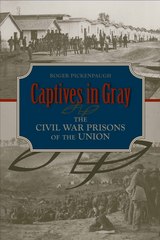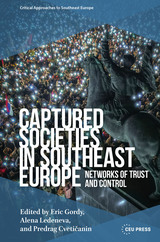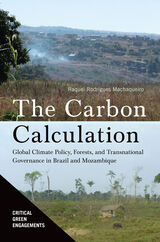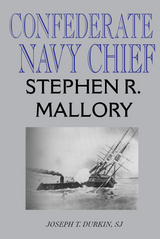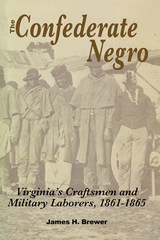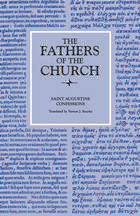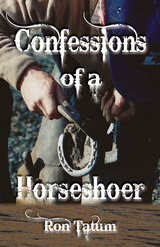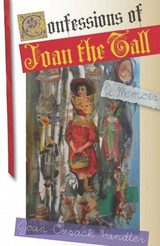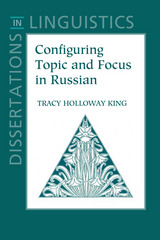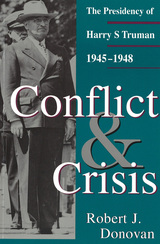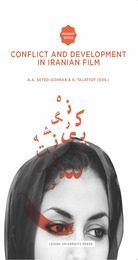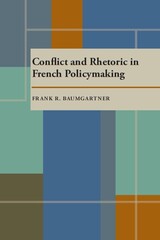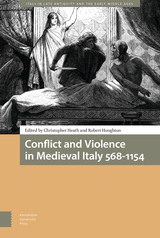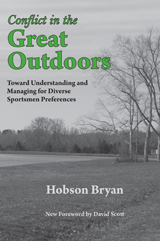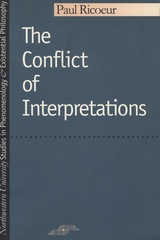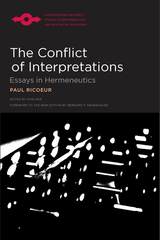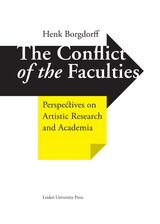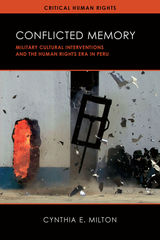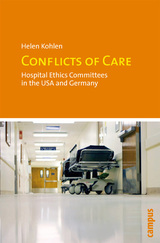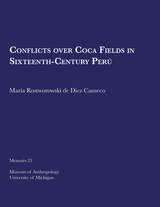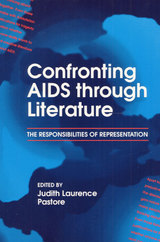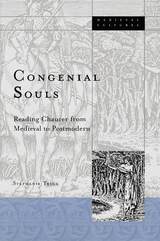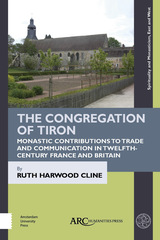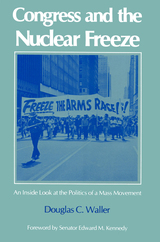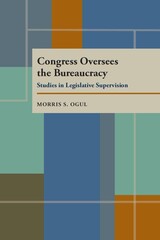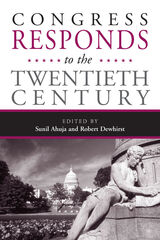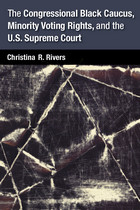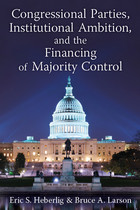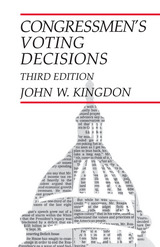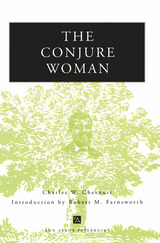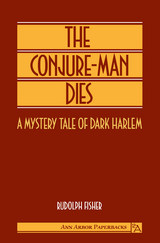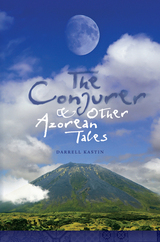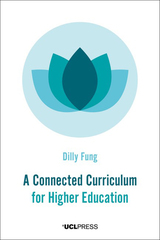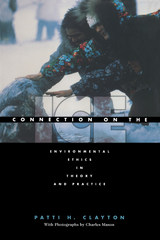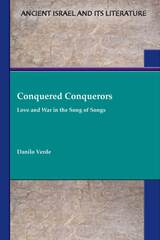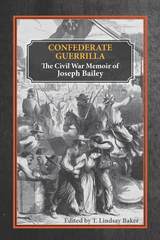 Confederate Guerrilla: The Civil War Memoir of Joseph M. Bailey
T. Lindsay Baker
University of Arkansas Press, 2007 Joseph M. Bailey’s memoir, Confederate Guerrilla, provides a unique perspective on the fighting that took place behind Union lines in Federal-occupied northwest Arkansas during and after the Civil War. This story—now published for the first time—will appeal to modern readers interested in the grassroots history of the Trans-Mississippi war. Bailey participated in the Battle of Pea Ridge and the siege of Port Hudson, eventually escaping to northwest Arkansas where he fought as a guerrilla against Federal troops and civilian unionists. After Federal forces gained control of the area, Bailey rejoined the Confederate army and continued in regular service in northeast Texas until the end of the war. Historians will find the descriptions of military campaigns and the observations on guerrilla war especially valuable. According to Bailey, Southern guerrillas were motivated less by a sense of loyalty to either the Confederate or Union side than by a determination to protect their families and neighbors from the “Mountain Federals.” This partisan war waged between the rebel guerrillas and Southern Unionists was essentially a “struggle for supremacy and revenge.” Comprehensive annotations are provided by editor T. Lindsay Baker to illuminate the clarity and reliability of Bailey’s late-life memoir.
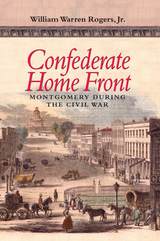 Confederate Home Front: Montgomery during the Civil War
William Warren Rogers, Jr.
University of Alabama Press, 2001 With this superbly written, meticulously researched, and concisely argued study, Rogers has helped deepen our understanding of the Confederate civilian experience.
Drawing from a wealth of historic documents and personal papers, William Warren Rogers, Jr., provides a fascinating and detailed political, economic, social, and commercial history of Montgomery from 1860 to 1865. His account begins with an examination of daily life in the city before the war began-how slaves outnumbered whites, how an unvarnished frontier atmosphere prevailed on the streets despite citizens' claims to refinement, how lush crops of corn and cotton grew in fields right up to the city limits, and how class divisions were distinct and immovable.
Rogers arranges his material topically, covering the events that led to the decision for secession and Montgomery's heady days as the Confederacy's first capital; the industrialization of the city's war effort as it became a hub of activity and served as a military post; the city's business patterns and administration as it attempted to promote the Confederacy and defend itself from federal forces; and the plight of the small group of Unionists who inhabited Montgomery through the war. Rogers concludes with chapters examining the situation in Montgomery as the Confederacy unraveled and the city fell to Union troops.
The Montgomery experience offers a microcosm of life on the Confederate home front and demonstrates that citizens generally experienced the same hopes, deprivations, and tragedies that other Southerners did at this time. Rogers's well-written, comprehensive history of the wartime city makes an original contribution to Civil War homefront and community studies that should appeal to general readers and scholars alike.
Confederate Navy Chief: Stephen R. Mallory
Joseph T. Durkin
University of Alabama Press, 2005 The book tells of Stephen R. Mallory's support of naval inventions, strategy, and ideas. It also sheds light on the the successes and failures of Jefferson Davis. Durkin gives a well-balanced biography of Mallory and his life in the Confederate navy.
The Confederate Navy in Europe
Warren F. Spencer
University of Alabama Press, 1997 Originally published in 1984, The Confederate Navy in Europe is the first full account of the European activities of the Confederate navy during the American Civil War, including information on the Southerners who procured naval vessels in Great Britain and France, the construction of the ships, and the legal and political impact on the European governments that assisted in the Confederate cause.
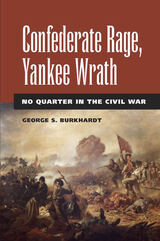 Confederate Rage, Yankee Wrath: No Quarter in the Civil War
George S. Burkhardt
Southern Illinois University Press, 2006 This provocative study proves the existence of a de facto Confederate policy of giving no quarter to captured black combatants during the Civil War—killing them instead of treating them as prisoners of war. Rather than looking at the massacres as a series of discrete and random events, this work examines each as part of a ruthless but standard practice.
Author George S. Burkhardt details a fascinating case that the Confederates followed a consistent pattern of murder against the black soldiers who served in Northern armies after Lincoln’s 1863 Emancipation Proclamation. He shows subsequent retaliation by black soldiers and further escalation by the Confederates, including the execution of some captured white Federal soldiers, those proscribed as cavalry raiders, foragers, or house-burners, and even some captured in traditional battles.
Further disproving the notion of Confederates as victims who were merely trying to defend their homes, Burkhardt explores the motivations behind the soldiers’ actions and shows the Confederates’ rage at the sight of former slaves—still considered property, not men—fighting them as equals on the battlefield.
Burkhardt’s narrative approach recovers important dimensions of the war that until now have not been fully explored by historians, effectively describing the systemic pattern that pushed the conflict toward a black flag, take-no-prisoners struggle.
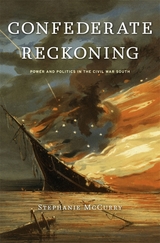 Confederate Reckoning: Power and Politics in the Civil War South
Stephanie McCurry
Harvard University Press, 2012 Pulitzer Prize Finalist
Winner of the Frederick Douglass Book Prize
Winner of the Merle Curti Award
“McCurry strips the Confederacy of myth and romance to reveal its doomed essence. Dedicated to the proposition that men were not created equal, the Confederacy had to fight a two-front war. Not only against Union armies, but also slaves and poor white women who rose in revolt across the South. Richly detailed and lucidly told, Confederate Reckoning is a fresh, bold take on the Civil War that every student of the conflict should read.”
—Tony Horwitz, author of Confederates in the Attic
“McCurry challenges us to expand our definition of politics to encompass not simply government but the entire public sphere. The struggle for Southern independence, she shows, opened the door for the mobilization of two groups previously outside the political nation—white women of the nonslaveholding class and slaves…Confederate Reckoning offers a powerful new paradigm for understanding events on the Confederate home front.”
—Eric Foner, The Nation
“Perhaps the highest praise one can offer McCurry’s work is to say that once we look through her eyes, it will become almost impossible to believe that we ever saw or thought otherwise…At the outset of the book, McCurry insists that she is not going to ask or answer the timeworn question of why the South lost the Civil War. Yet in her vivid and richly textured portrait of what she calls the Confederacy’s ‘undoing,’ she has in fact accomplished exactly that.”
—Drew Gilpin Faust, New Republic
“A brilliant, eye-opening account of how Southern white women and black slaves fatally undermined the Confederacy from within.”
—Edward Bonekemper, Civil War News
The story of the Confederate States of America, the proslavery, antidemocratic nation created by white Southern slaveholders to protect their property, has been told many times in heroic and martial narratives. Now, however, Stephanie McCurry tells a very different tale of the Confederate experience. When the grandiosity of Southerners’ national ambitions met the harsh realities of wartime crises, unintended consequences ensued. Although Southern statesmen and generals had built the most powerful slave regime in the Western world, they had excluded the majority of their own people—white women and slaves—and thereby sowed the seeds of their demise.
Wartime scarcity of food, labor, and soldiers tested the Confederate vision at every point and created domestic crises to match those found on the battlefields. Women and slaves became critical political actors as they contested government enlistment and tax and welfare policies, and struggled for their freedom. The attempt to repress a majority of its own population backfired on the Confederate States of America as the disenfranchised demanded to be counted and considered in the great struggle over slavery, emancipation, democracy, and nationhood. That Confederate struggle played out in a highly charged international arena.
The political project of the Confederacy was tried by its own people and failed. The government was forced to become accountable to women and slaves, provoking an astounding transformation of the slaveholders’ state. Confederate Reckoning is the startling story of this epic political battle in which women and slaves helped to decide the fate of the Confederacy and the outcome of the Civil War.
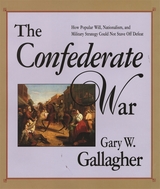 The Confederate War
Gary W. Gallagher
Harvard University Press, 1999 If one is to believe contemporary historians, the South never had a chance. Many allege that the Confederacy lost the Civil War because of internal division or civilian disaffection; others point to flawed military strategy or ambivalence over slavery. But, argues distinguished historian Gary Gallagher, we should not ask why the Confederacy collapsed so soon but rather how it lasted so long. In The Confederate War he reexamines the Confederate experience through the actions and words of the people who lived it to show how the home front responded to the war, endured great hardships, and assembled armies that fought with tremendous spirit and determination.Gallagher’s portrait highlights a powerful sense of Confederate patriotism and unity in the face of a determined adversary. Drawing on letters, diaries, and newspapers of the day, he shows that Southerners held not only an unflagging belief in their way of life, which sustained them to the bitter end, but also a widespread expectation of victory and a strong popular will closely attuned to military events. In fact, the army’s “offensive-defensive” strategy came remarkably close to triumph, claims Gallagher—in contrast to the many historians who believe that a more purely defensive strategy or a guerrilla resistance could have won the war for the South. To understand why the South lost, Gallagher says we need look no further than the war itself: after a long struggle that brought enormous loss of life and property, Southerners finally realized that they had been beaten on the battlefield.Gallagher’s interpretation of the Confederates and their cause boldly challenges current historical thinking and invites readers to reconsider their own conceptions of the American Civil War.
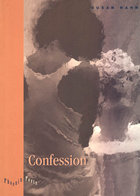 Confession
Susan Hahn
University of Chicago Press, 1996 Confession, the companion to Incontinence, Susan Hahn's previous prize-winning book of poetry, continues the probing, visceral account of the relationship of a woman with her estranged husband and her inconstant lovers. Ingenious, disturbing, Confession will enhance an already substantial following for this exceptional poet.
"Phoenix Poets is the most distinguished university press series going."—Alfred Corn
"Compressed, controlled, circumscribed by the artist's discipline, the poems in Susan Hahn's Confession do not spill over; each is like a steadily held cup containing its pain."—Alicia Ostriker
"Hahn's voice is unique and unforgettable . . . . Hahn's self-revelation is so startling, and her details so extraordinary, that she virtually detonates her poems with energy. . . . Plath, Ai, Sexton—Hahn brings to mind those vivid, violent poets, but her voice is clearly her own, strong and without either shrillness or shame."—Patricia Monaghan, Booklist
"In her third book of poems, Confession, Susan Hahn continues to refine her amazing capacity to disquiet, disgust and fascinate. This may not sound like a recommendation, but it is. . . . The precision of Hahn's language stands out even more clearly when compared to the looser, baggier free verse that dominates so much contemporary poetry."—Maureen McLane, Chicago Tribune
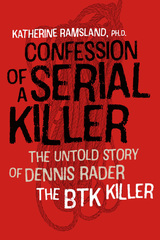 Confession of a Serial Killer: The Untold Story of Dennis Rader, the BTK Killer
Katherine Ramsland
University Press of New England, 2017 In 1974, Dennis Lynn Rader stalked and murdered a family of four in Wichita, Kansas. Since adolescence, he had read about serial killers and imagined becoming one. Soon after killing the family, he murdered a young woman and then another, until he had ten victims. He named himself “B.T.K.” (bind, torture, kill) and wrote notes that terrorized the city. He remained on the loose for thirty years. No one who knew him guessed his dark secret. He nearly got away with his crimes, but in 2004, he began to play risky games with the police. He made a mistake. When he was arrested, Rader’s family, friends, and coworkers were shocked to discover that B.T.K. had been among them, going to work, raising his children, and acting normal. This case stands out both for the brutal treatment of victims and for the ordinary public face that Rader, a church council president, had shown to the outside world. Through jailhouse visits, telephone calls, and written correspondence, Katherine Ramsland worked with Rader himself to analyze the layers of his psyche. Using his drawings, letters, interviews, and Rader’s unique codes, she presents in meticulous detail the childhood roots and development of one man’s motivation to stalk, torture, and kill. She reveals aspects of the dark motivations of this most famous of living serial killers that have never before been revealed. In this book Katherine Ramsland presents an intelligent, original, and rare glimpse into the making of a serial killer and the potential darkness that lives next door.
Confessions
Saint Augustine
Catholic University of America Press, 1953 No description available
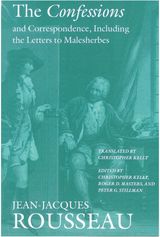 The Confessions and Correspondence, Including the Letters to Malesherbes
Jean-Jacques Rousseau
Dartmouth College Press, 1998 When Rousseau first read his Confessions to a 1770 gathering in Paris, reactions varied from admiration of his candor to doubts about his sanity to outrage. Indeed, Rousseau's intent and approach were revolutionary. As one of the first attempts at autobiography, the Confessions' novelty lay not in just its retelling the facts of Rousseau's life, but in its revelation of his innermost feelings and its frank description of the strengths and failings of his character. Based on his doctrine of natural goodness, Rousseau intended the Confessions as a testing ground to explore his belief that, as Christopher Kelly writes, "people are to be measured by the depth and nature of their feelings." Re-created here in a meticulously documented new translation based on the definitive Pléiade edition, the work represents Rousseau's attempt to forge connections among his beliefs, his feelings, and his life. More than a "behind-the-scenes look at the private life of a public man," Kelly writes, "the Confessions is at the center of Rousseau's philosophical enterprise."
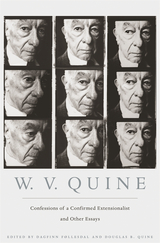 Confessions of a Confirmed Extensionalist and Other Essays
W. V. Quine
Harvard University Press, 2008 W. V. Quine created a new way of looking at the eternal questions of philosophy and their interconnections. His investigations into semantics and epistemology, ontology and causality, natural kinds, time, space, and individuation transformed the philosophical landscape for generations to come. In the twenty years between his last collection of essays and his death in 2000, Quine continued his work, producing a number of impressive essays in which he deepened, elaborated, and occasionally modified his position on central philosophical issues. The last of these essays, which gives this collection its name, appeared in 2002.
This volume collects the main essays from this last, productive period of Quine’s prodigious career. It also includes some notable earlier essays that were not included in the previous collections although they contain illuminating discussions and are quite often referred to by other philosophers and also by Quine himself in his later writings. These essays, along with several manuscripts published here for the first time, offer a more complete and highly defined picture than ever before of one of the twentieth century’s greatest thinkers working at the height of his powers.
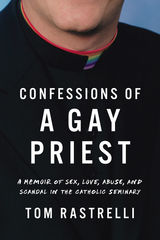 Confessions of a Gay Priest: A Memoir of Sex, Love, Abuse, and Scandal in the Catholic Seminary
Tom Rastrelli
University of Iowa Press, 2020 Tom Rastrelli is a survivor of clergy-perpetrated sexual abuse who then became a priest in the early days of the Catholic Church’s ongoing scandals. Confessions of a Gay Priest divulges the clandestine inner workings of the seminary, providing an intimate and unapologetic look into the psychosexual and spiritual dynamics of celibacy and lays bare the “formation” system that perpetuates the cycle of abuse and cover-up that continues today. Under the guidance of a charismatic college campus minister, Rastrelli sought to reconcile his homosexuality and childhood sexual abuse. When he felt called to the priesthood, Rastrelli began the process of “priestly discernment.” Priests welcomed him into a confusing clerical culture where public displays of piety, celibacy, and homophobia masked a closeted underworld in which elder priests preyed upon young recruits. From there he ventured deeper into the seminary system seeking healing, hoping to help others, and striving not to live a double life. Trained to treat sexuality like an addiction, he and his brother seminarians lived in a world of cliques, competition, self-loathing, alcohol, hidden crushes, and closeted sex. Ultimately, the “formation” intended to make Rastrelli a compliant priest helped to liberate him.
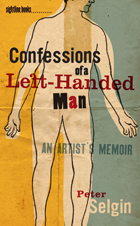 Confessions of a Left-Handed Man: An Artist's Memoir
Peter Selgin
University of Iowa Press, 2011 Peter Selgin was cursed/blessed with an unusual childhood. The son of Italian immigrants—his father an electronics inventor and a mother so good looking UPS drivers swerved off their routes to see her—Selgin spent his formative years scrambling among the hat factory ruins of a small Connecticut town, visiting doting—and dotty—relatives in the “old world,” watching mental giants clash at Mensa gatherings, enduring Pavlovian training sessions with a grandmother bent on “curing” his left-handedness, and competing savagely with his right-handed twin. It’s no surprise, then, that Selgin went on from these peculiar beginnings to do . . . well, nearly everything. Confessions of a Left-Handed Man is a bold, unblushing journey down roads less traveled. Whether recounting his work driving a furniture delivery truck, his years as a caricaturist, his obsession with the Titanic that compelled him to complete seventy-five paintings of the ship(in sinking and nonsinking poses), or his daily life as a writer, from start to finish readers are treated to a vividly detailed, sometimes hilarious, often moving, but always memorable life. In this modern-day picaresque, Selgin narrates an artist’s journey from unconventional roots through gritty experience to artistic achievement. With an elegant narrative voice that is, by turns, frank, witty, and acid-tongued, Selgin confronts his past while coming to terms with approaching middle age, reaching self-understanding tempered by reflection, regret, and a sharply self-deprecating sense of humor.
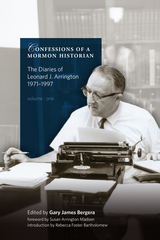 Confessions of a Mormon Historian: The Diaries of Leonard J. Arrington, 1971-1997: Volume 1, Church Historian, 1971-75
Gary James Bergera
Signature Books, 2018
Leonard Arrington (1917–99) was born an Idaho chicken rancher whose early interests seemed not to extend much beyond the American west. Throughout his life, he tended to project a folksy persona, although nothing was farther from the truth.
He was, in fact, an intellectually oriented, academically driven young man, determined to explore the historical, economic, cultural, and religious issues of his time. After distinguishing himself at the University of North Carolina (Chapel Hill) and serving in the army during World War II in North Africa and Italy, Arrington accepted a professorship at Utah State University. In 1972 he was called as the LDS Church Historian—an office he held for ten years until, following a stormy tenure full of controversy over whether the “New Mormon History” he championed was appropriate for the church, he was quietly released and transferred, along with the entire Church History Division, to Brigham Young University. It was hoped that this would remove the impression in people’s minds that his writings were church-approved.
His personal diaries reveal a man who was firmly committed to his church, as well as to rigorous historical scholarship. His eye for detail made him an important observer of “church headquarters culture.”
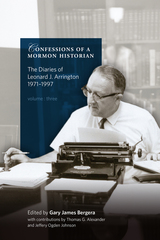 Confessions of a Mormon Historian: The Diaries of Leonard J. Arrington, 1971-1997: Volume 3, Exile, 1980-97
Gary James Bergera
Signature Books, 2018
Leonard Arrington (1917–99) was born an Idaho chicken rancher whose early interests seemed not to extend much beyond the American west. Throughout his life, he tended to project a folksy persona, although nothing was farther from the truth.
He was, in fact, an intellectually oriented, academically driven young man, determined to explore the historical, economic, cultural, and religious issues of his time. After distinguishing himself at the University of North Carolina (Chapel Hill) and serving in the army during World War II in North Africa and Italy, Arrington accepted a professorship at Utah State University. In 1972 he was called as the LDS Church Historian—an office he held for ten years until, following a stormy tenure full of controversy over whether the “New Mormon History” he championed was appropriate for the church, he was quietly released and transferred, along with the entire Church History Division, to Brigham Young University. It was hoped that this would remove the impression in people’s minds that his writings were church-approved.
His personal diaries reveal a man who was firmly committed to his church, as well as to rigorous historical scholarship. His eye for detail made him an important observer of “church headquarters culture.”
 The Confessions of a Number One Son: The Great Chinese American Novel
Frank Chin, edited with an introduction by Calvin McMillin
University of Hawaii Press, 2015 In the early 1970s, Frank Chin, the outspoken Chinese American author of such plays as The Chickencoop Chinaman and The Year of the Dragon, wrote a full-length novel that was never published and presumably lost. Nearly four decades later, Calvin McMillin, a literary scholar specializing in Asian American literature, would discover Chin’s original manuscripts and embark on an extensive restoration project. Meticulously reassembled from multiple extant drafts, Frank Chin’s “forgotten” novel is a sequel to The Chickencoop Chinaman and follows the further misadventures of Tam Lum, the original play’s witty protagonist. Haunted by the bitter memories of a failed marriage and the untimely death of a beloved family member, Tam flees San Francisco’s Chinatown for a life of self-imposed exile on the Hawaiian island of Maui. After burning his sole copy of a manuscript he believed would someday be hailed as “The Great Chinese American Novel,” Tam stumbles into an unlikely romance with Lily, a former nun fresh out of the convent and looking for love. In the process, he also develops an unusual friendship with Lily’s father, a washed-up Hollywood actor once famous for portraying Charlie Chan on the big screen. Thanks in no small part to this bizarre father/daughter pair, not to mention an array of equally quirky locals, Tam soon discovers that his otherwise laidback island existence has been transformed into a farce of epic proportions. Had it been published in the 1970s as originally intended, The Confessions of a Number One Son might have changed the face of Asian American literature as we know it. Written at the height of Frank Chin’s creative powers, this formerly “lost” novel ranks as the author’s funniest, most powerful, and most poignant work to date. Now, some forty years after its initial conception, The Confessions of a Number One Son is finally available to readers everywhere.
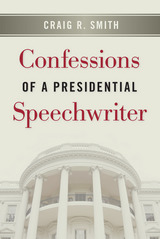 Confessions of a Presidential Speechwriter
Craig R. Smith
Michigan State University Press, 2014 An avid high school debater and enthusiastic student body president, Craig Smith seemed destined for a life in public service from an early age. As a sought-after speechwriter, Smith had a front-row seat at some of the most important events of the twentieth century, meeting with Robert Kennedy and Richard Nixon, advising Governor Ronald Reagan, writing for President Ford, serving as a campaign manager for a major U.S. senator’s reelection campaign, and writing speeches for a contender for the Republican nomination for president. Life in the volatile world of politics wasn’t always easy, however, and as a closeted gay man, Smith struggled to reconcile his private and professional lives. In this revealing memoir, Smith sheds light on what it takes to make it as a speechwriter in a field where the only constant is change. While bouncing in and out of the academic world, Smith transitions from consultantships with George H. W. Bush and the Republican caucus of the U.S. Senate to a position with Chrysler CEO Lee Iacocca. When Smith returns to Washington, D.C., as president and founder of the Freedom of Expression Foundation, he becomes a leading player on First Amendment issues in the nation’s capital. Returning at long last to academia, Smith finds happiness coming out of the closet and reaping the benefits of a dedicated and highly successful career.
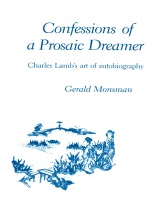 Confessions of a Prosaic Dreamer: Charles Lamb's Art of Autobiography
Gerald Monsman
Duke University Press, 1984 More than Charles Lamb himself could ever know, the creation of Elia as his personal artistic voice was his way to endure the memories of September 22, 1796, a day of primal horror when his sister Mary in a fit of insanity killed their mother and destroyed the Lamb family. Throughout the rest of his life Lamb was faced with those memories , with deep-seated personal and career disillusionments. Yet through Elia he confronted his inner self to forge the essays that may be considered among the most brilliant and inimitable works in English letters. Gerald Monsman in this study abandons the customary chronological approach to Lamb's life in favor of a more incisive, open-ended discussion of the Elia essays. By a close textual examination of Lamb's language, he relates the essayist's use of symbol and autobiographical concerns. Monsman contends and demonstrates that "as sharply and as pertinently as any artistic voice, Elia, the most celebrated persona in the nineteenth century, focuses the problems inherent in the modern literary imagination." Elia's "textual identity is a function of the author's actual life, of losses and imperfections artistically utilized and harmonized, employed against themselves to produce the rehabilitating symbol."
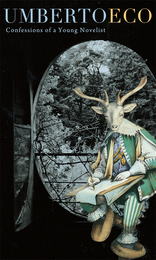 Confessions of a Young Novelist
Umberto Eco
Harvard University Press, 2011 Umberto Eco published his first novel, The Name of the Rose, in 1980, when he was nearly fifty. In these “confessions,” the author, now in his late seventies, looks back on his long career as a theorist and his more recent work as a novelist, and explores their fruitful conjunction.
He begins by exploring the boundary between fiction and nonfiction—playfully, seriously, brilliantly roaming across this frontier. Good nonfiction, he believes, is crafted like a whodunnit, and a skilled novelist builds precisely detailed worlds through observation and research. Taking us on a tour of his own creative method, Eco recalls how he designed his fictional realms. He began with specific images, made choices of period, location, and voice, composed stories that would appeal to both sophisticated and popular readers. The blending of the real and the fictive extends to the inhabitants of such invented worlds. Why are we moved to tears by a character’s plight? In what sense do Anna Karenina, Gregor Samsa, and Leopold Bloom “exist”?
At once a medievalist, philosopher, and scholar of modern literature, Eco astonishes above all when he considers the pleasures of enumeration. He shows that the humble list, the potentially endless series, enables us to glimpse the infinite and approach the ineffable. This “young novelist” is a master who has wise things to impart about the art of fiction and the power of words.
 Confessions of an American Scholar
Simon O’Toole
University of Minnesota Press, 1970
Confessions of an American Scholar was first published in 1970. Minnesota Archive Editions uses digital technology to make long-unavailable books once again accessible, and are published unaltered from the original University of Minnesota Press editions.
Professor O'Toole, a well-known American literary scholar (Simon O'Toole is a pseudonym), gives us a candid, amusing, and, on the whole, frightening look at what really goes on in academic life. He has taught at black and white colleges, private and public colleges, Ivy Leagues and brick colleges; and over the years he has found himself transformed from a good teacher and no scholar into a prolific scholar and a tired teacher. Along the way he fought Joe McCarthy and told his students to burn their draft cards. At the conclusion of his tale he makes some serious proposals for a solution to what he calls the mess of American education. At the core of his suggestions is the opinion that America needs less education instead of more, an idea that seems certain to evoke cries of treason from many of his academic brethren.
 Confessions of an Entrepreneur: Simple Wisdom for Starting, Building, and Running a Business
Mark C. Zweig
Epic Books, 2022 Winner, 2022 Goody Business Book Awards, Entrepreneur, General Category
Finalist, 2022 Goody Business Book Awards, Entrepreneur, Start Ups / New Business Category
With more than fifty years of professional experience, Mark C. Zweig has seen it all—from the fear and excitement of starting a new business to the joys and challenges of life as an entrepreneur. In Confessions of an Entrepreneur: Simple Wisdom for Starting, Building, and Running a Business, Zweig draws upon this wealth of experience to offer practical, easy-to-understand guidance for bringing a business to life and cultivating success at every stage of its development. The candid stories he shares from his career provide insight into the realities of business ownership and illustrate proven principles for both personal and professional success. Written by an entrepreneur for entrepreneurs, this book is an indispensable guide filled with wisdom for new and seasoned business leaders alike.
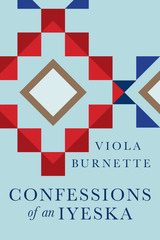 Confessions of an Iyeska
Viola Burnette
University of Utah Press, 2018 In this autobiography, Viola Burnette braids the history of the Lakota people with the story of her own life as an Iyeska, or mixed-race Indian. Bringing together her years growing up on a reservation, her work as a lawyer and legal advocate for Native peoples, and her woman’s perspective, she draws the reader into an intelligent and intimate conversation.
The Fort Laramie treaties of 1851 and 1868 changed everything for the Sioux. When Burnette was born on the Rosebud Indian Reservation in the late 1930s, her people were still striving to make sense of how to live under the impoverished conditions created by the imposed land restrictions. Like most Native children at that time, she was forced by federal law to attend boarding school and assimilate into white culture. Her story reveals the resulting internal conflict that she and her people faced in embracing their own identity in a world where those in authority taught that speaking Lakota and being Indian were wrong. After a difficult jump into adulthood, Burnette emerged from an abusive marriage and, while raising four children, enrolled in junior college in her thirties and law school in her forties. She went on to become an advocate for women subjected to domestic violence and the first attorney general for the Rosebud Sioux Tribe.
Borne out under the far-reaching effects of the government-enforced restructuring of her people, Burnette’s inspiring narrative of strength and determination makes clear the importance of understanding history from a Native standpoint.
“I am an Iyeska and I am assimilated, but on my own terms. I choose when, where, and how I use the knowledge and skills I have learned. As long as we continue to teach our children and grandchildren the language, values, and traditions of the Lakota people, we will survive.”—from the book
Confessions of Joan the Tall
Joan Cusack Handler
CavanKerry Press, 2012 A memoir written in the voice of a twelve-year-old Irish Catholic girl living in the Bronx in 1954, Confessions recounts one year in the life of Joan, a very tall, religious, funny, self-conscious, emotional imprisoned, lovable girl whose journey takes her from innocence, isolation, and inhibition to the beginnings of freedom and awakening.
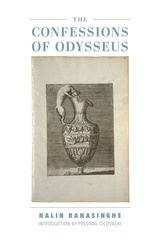 The Confessions of Odysseus
Nalin Ranasinghe
St. Augustine's Press, 2021 Nalin Ranasinghe undertakes the monumentally brash assignment of accusing man and then offering his defense, precisely as Homer does of Odysseus in the Iliad. Odysseus is portrayed as a human being deserving of both. For this reason and Homer’s perceptive descriptions, Ranasinghe claims Homer’s epic is the cornerstone of Western civilization. The central insights herein compel Ranasinghe to admit the necessity of heeding its lessons today, of minding its characters and seeing them in action off the page and in our own world.
Predrag Cicovacki in his indispensable preface to the book, elucidates: “In Ranasinghe’s view, Odysseus is both the first recognizable human being and a model of curious and concupiscent human rationality that constantly strives toward the virtues of self-knowledge and moderation. Homer leads us to believe that the cosmos leans toward virtue, although its fundamental truths may be inherently unspeakable. This is the line of thought that Ranasinghe believes was further developed by Socrates, Plato, and Jesus, while being obscured by Aristotle, Augustine, and their followers. Homer’s later epic and his central insights are, according to Ranasinghe, the most fertile soil on which a humane civilization can grow and flourish.”
Yet Ranasinghe ultimately says it best. “Homer must be read as the wisest Greeks did, not for fantastic tales of the Olympians but because his myths reveal eternal constants of the human state: the soul’s ruling passions and the possibility of knowing and educating these false gods. Wrestled with thus the Iliad becomes a cautionary tale, not one urging literal reading or mindless mimesis. It may always be that for the few who grasp Homer, many more will obey his gods or imitate his antiheroes; but the Odyssey hints that while its poet sees this potential for misuse, he is willing to take a noble risk and hope that eros can listen to and educate thumos. This faith is implicit in his tale of Achilles and the Trojan War. It is vital today that we see how the West’s end resembles its angry origins, as depicted in the Iliad. This is why Homer is said to be as fresh as the morning newspaper. His wisdom may outlive our literacy.”
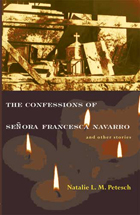 The Confessions of Señora Francesca Navarro and Other Stories
Natalie L. M. Petesch
Ohio University Press, 2005 “Memory, of course, is sometimes like a bucking horse, sometimes a runaway one, and one must control the reins until finally it stops, snorting with exhausted relief,” writes Natalie L. M. Petesch in her haunting new collection, The Confessions of Señora Francesca Navarro and Other Stories. Petesch immerses readers in the lives of people caught up in the 1936–39 Spanish Civil War, which left more than five hundred thousand dead. She captures the hand-to-mouth existence on the streets of Madrid of two war orphans; an old soldier’s memories of a fallen militiawoman; the dilemma of Franco’s laundress as she seeks to duplicate a stolen religious icon she finds in his home; and a man’s struggle to find his bride among thousands of Republican refugees waiting for ships to evacuate them before Franco’s Fascists arrive to kill them. In the title novella, an elderly woman describes to her granddaughter how the families of Franco’s officers fighting against Republican militiamen endured hunger, filth, and danger in an underground fortress. Petesch conveys the humiliating details of war through the sensibility of a cultured woman who recalls only too vividly latrines made of laundry tubs, the smell of unwashed humans, and the stench of death. Brilliant in its imaginative power and heartbreaking in its access to the bottomless well of human tears, The Confessions of Señora Francesca Navarro and Other Stories is the work of a mature artist able to convey a particular world so vividly that we know these people as our own.
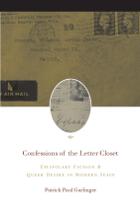 Confessions of the Letter Closet: Epistolary Fiction and Queer Desire in Modern Spain
Patrick Paul Garlinger
University of Minnesota Press, 2005 By the beginning of the twentieth century, epistolary novels in Spain increasingly grappled with homoerotic and homosexual desire, treating it as a secret communicated through private letters from one reader to another. Patrick Paul Garlinger reveals how this confidential model persists in these fictions of letter writing from the early twentieth century to the present, framing expressions of queer desire in confessional terms: secrecy, guilt, morality, and shame.Confessions of the Letter Closet draws on queer theory and psychoanalysis, archival research on letter writing as a social practice and on the advent of the postal system in Spain, and historical insights into the impact of Spanish laws regarding the inviolability of correspondence on epistolary fiction. Garlinger examines how the epistolary novel represents - and is implicated in - the homophobia and psychic ambivalence around sexuality and identity with which Spanish gays and lesbians struggle, despite significant legal advances and increased social tolerance.Addressing both male and female desire and drawing links to epistolary traditions outside of Spain, Confessions of the Letter Closet goes beyond the specifics of Spanish literature to contribute more broadly to queer theory, the study of epistolary fiction, and an understanding of autobiography and confessional discourse.
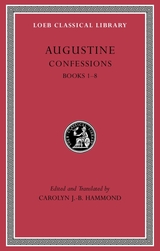 Confessions, Volume I: Books 1–8
Augustine
Harvard University Press, 2014 The classic account of crisis and conversion.
Aurelius Augustine (AD 354–430), one of the most important figures in the development of western Christianity and philosophy, was the son of a pagan, Patricius of Tagaste, and his Christian wife, Monnica. While studying to become a rhetorician, he plunged into a turmoil of philosophical and psychological doubts, leading him to Manichaeism. In 383 he moved to Rome and then Milan to teach rhetoric. Despite exploring classical philosophical systems, especially skepticism and Neoplatonism, his studies of Paul’s letters with his friend Alypius, and the preaching of Bishop Ambrose, led in 386 to his momentous conversion from mixed beliefs to Christianity. He soon returned to Tagaste and founded a religious community, and in 395 or 396 became bishop of Hippo.
Confessions, composed ca. 397, is a spiritual autobiography of Augustine’s early life, family, personal and intellectual associations, and explorations of alternative religious and theological viewpoints as he moved toward his conversion. Cast as a prayer addressed to God, though always conscious of its readers, Confessions offers a gripping personal story and a philosophical exploration destined to have broad and lasting impact, all delivered with Augustine’s characteristic brilliance as a stylist.
This edition replaces the earlier Loeb Confessions by William Watts.
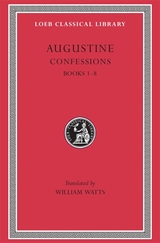 Confessions, Volume I: Books 1-8
Augustine
Harvard University Press Augustinus (354430 CE), son of a pagan, Patricius of Tagaste in North Africa, and his Christian wife Monica, while studying in Africa to become a rhetorician, plunged into a turmoil of philosophical and psychological doubts in search of truth, joining for a time the Manichaean society. He became a teacher of grammar at Tagaste, and lived much under the influence of his mother and his friend Alypius. About 383 he went to Rome and soon after to Milan as a teacher of rhetoric, being now attracted by the philosophy of the Sceptics and of the Neo-Platonists. His studies of Paul's letters with Alypius and the preaching of Bishop Ambrose led in 386 to his rejection of all sensual habits and to his famous conversion from mixed beliefs to Christianity. He returned to Tagaste and there founded a religious community. In 395 or 396 he became Bishop of Hippo, and was henceforth engrossed with duties, writing and controversy. He died at Hippo during the successful siege by the Vandals.
From Augustine's large output the Loeb Classical Library offers that great autobiography the Confessions (in two volumes); On the City of God (seven volumes), which unfolds God's action in the progress of the world's history, and propounds the superiority of Christian beliefs over pagan in adversity; and a selection of Letters which are important for the study of ecclesiastical history and Augustine's relations with other theologians.
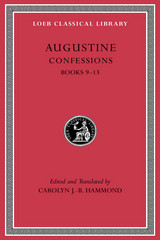 Confessions, Volume II: Books 9–13
Augustine
Harvard University Press, 2016 The classic account of crisis and conversion.
Aurelius Augustine (AD 354–430), one of the most important figures in the development of western Christianity and philosophy, was the son of a pagan, Patricius of Tagaste, and his Christian wife, Monnica. While studying to become a rhetorician, he plunged into a turmoil of philosophical and psychological doubts, leading him to Manichaeism. In 383 he moved to Rome and then Milan to teach rhetoric. Despite exploring classical philosophical systems, especially skepticism and Neoplatonism, his studies of Paul’s letters with his friend Alypius, and the preaching of Bishop Ambrose, led in 386 to his momentous conversion from mixed beliefs to Christianity. He soon returned to Tagaste and founded a religious community, and in 395 or 396 became bishop of Hippo.
Confessions, composed ca. 397, is a spiritual autobiography of Augustine’s early life, family, personal and intellectual associations, and explorations of alternative religious and theological viewpoints as he moved toward his conversion. Cast as a prayer addressed to God, though always conscious of its readers, Confessions offers a gripping personal story and a philosophical exploration destined to have broad and lasting impact, all delivered with Augustine’s characteristic brilliance as a stylist.
This edition replaces the earlier Loeb Confessions by William Watts.
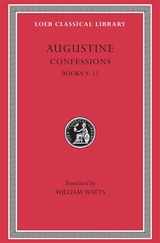 Confessions, Volume II: Books 9–13
Augustine
Harvard University Press Augustinus (354430 CE), son of a pagan, Patricius of Tagaste in North Africa, and his Christian wife Monica, while studying in Africa to become a rhetorician, plunged into a turmoil of philosophical and psychological doubts in search of truth, joining for a time the Manichaean society. He became a teacher of grammar at Tagaste, and lived much under the influence of his mother and his friend Alypius. About 383 he went to Rome and soon after to Milan as a teacher of rhetoric, being now attracted by the philosophy of the Sceptics and of the Neo-Platonists. His studies of Paul's letters with Alypius and the preaching of Bishop Ambrose led in 386 to his rejection of all sensual habits and to his famous conversion from mixed beliefs to Christianity. He returned to Tagaste and there founded a religious community. In 395 or 396 he became Bishop of Hippo, and was henceforth engrossed with duties, writing and controversy. He died at Hippo during the successful siege by the Vandals.
From Augustine's large output the Loeb Classical Library offers that great autobiography the Confessions (in two volumes); On the City of God (seven volumes), which unfolds God's action in the progress of the world's history, and propounds the superiority of Christian beliefs over pagan in adversity; and a selection of Letters which are important for the study of ecclesiastical history and Augustine's relations with other theologians.
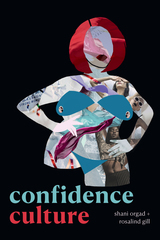 Confidence Culture
Shani Orgad and Rosalind Gill
Duke University Press, 2022 In Confidence Culture, Shani Orgad and Rosalind Gill argue that imperatives directed at women to “love your body” and “believe in yourself” imply that psychological blocks rather than entrenched social injustices hold women back. Interrogating the prominence of confidence in contemporary discourse about body image, workplace, relationships, motherhood, and international development, Orgad and Gill draw on Foucault’s notion of technologies of self to demonstrate how “confidence culture” demands of women near-constant introspection and vigilance in the service of self-improvement. They argue that while confidence messaging may feel good, it does not address structural and systemic oppression. Rather, confidence culture suggests that women—along with people of color, the disabled, and other marginalized groups—are responsible for their own conditions. Rejecting confidence culture’s remaking of feminism along individualistic and neoliberal lines, Orgad and Gill explore alternative articulations of feminism that go beyond the confidence imperative.
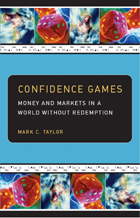 Confidence Games: Money and Markets in a World without Redemption
Mark C. Taylor
University of Chicago Press, 2004 Awash in a sea of data that seems to have no meaning and bombarded by images and sounds transmitted from around the globe 24/7, people are no longer sure what is real and what is fake. Artists recycle ads in their paintings and businesses use images of artists in their ads; politicians mount campaigns based on hit films; and bankers make billions trading incomprehensible financial products backed by nothing more than abstract figures and signs.
In Confidence Games, Mark C. Taylor considers the implications of these developments for our digital and increasingly virtual economy. According to Taylor, money and markets do not exist in a vacuum but grow in a profoundly cultural medium, reflecting and in turn shaping their world. To understand the recent changes in our economy, it is not enough to analyze the impact of politics and technology—one must consider the influence of art, philosophy, and religion as well.
Bringing John Calvin, G. W. F. Hegel, and Adam Smith to Wall Street by way of Las Vegas, Taylor first explores the historical and psychological origins of money, the importance of religious beliefs and practices for the emergence of markets, and the unexpected role of religion and art in the classical understanding of economics. He then moves to an account of economic developments during the past four decades, exploring the dawn of our new information age, the growing virtuality of money and markets, and the complexity of the networks by which monetary value is now negotiated.
Returning full circle to a version of the market first proposed by Adam Smith when he used theology and aesthetics to rethink economics, Confidence Games closes with a plea for a conception of life that embraces uncertainty and insecurity as signs of the openness of the future. Like religion and economics, life is a confidence game in which the challenge is not to find redemption but to learn to live without it. "Before the global credit system began its collapse in 2007, Mark Taylor had connected the dots between increasingly complex financial instruments and larger cultural forces. Anyone who wants to understand the disappearing foundation of our financial markets needs to read this book immediately."—Michael Lewitt, editor, The HCM Market Letter “Beyond simply dealing with ‘money and markets,’ Confidence Games is a fascinating and wide-ranging tour of modern and postmodern ideas and conditions from Aristotle to Nietzsche, from Wall Street to Las Vegas.”—Craig Bay, Journal of Markets & Morality
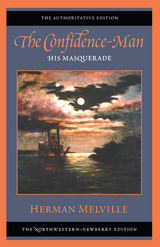 The Confidence-Man: His Masquerade
Herman Melville
Northwestern University Press, 2002 Long considered Melville's strangest novel, The Confidence-Man is a comic allegory aimed at the optimism and materialism of mid-nineteenth century America. A shape-shifting Confidence-Man approaches passengers on a Mississippi River steamboat and, winning over his not-quite-innocent victims with his charms, urges each to trust in the cosmos, in nature, and even in human nature--with predictable results. In Melville's time the book was such a failure he abandoned fiction writing for twenty years; only in the twentieth century did critics celebrate its technical virtuosity, wit, comprehensive social vision, and wry skepticism.
This scholarly edition includes a Historical Note offering a detailed account of the novel's composition, publication, reception, and subsequent critical history. In addition the editors present the twenty-six surviving manuscript leaves and scraps with full transcriptions and analytical commentary.
This scholarly edition aims to present a text as close to the author's intention as surviving evidence permits. Based on collations of both editions publishing during Melville's lifetime, it incorporates 138 emendations made by the present editors. It is an Approved Text of the Center for Editions of American Authors (Modern Language Association of America).
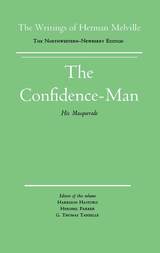 The Confidence-Man: Volume Ten, Scholarly Edition
Herman Melville
Northwestern University Press, 1984 Long considered Melville's strangest novel, The Confidence-Man is a comic allegory aimed at the optimism and materialism of mid-nineteenth century America. A shape-shifting Confidence-Man approaches passengers on a Mississippi River steamboat and, winning over his not-quite-innocent victims with his charms, urges each to trust in the cosmos, in nature, and even in human nature--with predictable results. In Melville's time the book was such a failure he abandoned fiction writing for twenty years; only in the twentieth century did critics celebrate its technical virtuosity, wit, comprehensive social vision, and wry skepticism.
This scholarly edition includes a Historical Note offering a detailed account of the novel's composition, publication, reception, and subsequent critical history. In addition the editors present the twenty-six surviving manuscript leaves and scraps with full transcriptions and analytical commentary.
This scholarly edition aims to present a text as close to the author's intention as surviving evidence permits. Based on collations of both editions publishing during Melville's lifetime, it incorporates 138 emendations made by the present editors. It is an Approved Text of the Center for Editions of American Authors (Modern Language Association of America).
 Confidences
Adela Zamudio (1854-1928)
Bucknell University Press, 2026 Renowned Bolivian feminist poet Adela Zamudio (1854–1928) wrote only one novel during her lifetime—Confidences (Íntimas, 1913), chronicling a series of scandals among the landowning classes of the city of Cochabamba at the turn of the twentieth century. The story explores sexism, religion, and prejudice in the lives of several young adults, culminating in a tragic turn of events that changes their destiny. Told in epistolary form from the contrasting perspectives of a single man and a married woman, the novel poignantly depicts tensions between the male-dominated public sphere and the intimacy of women’s private conversations. Zamudio was a passionate activist for women’s and girls’ rights to education, financial independence, and self-determination. This first English translation of Zamudio’s fiction captures the lyrical character of the author’s prose and conveys her unique insight into the challenges and limitations of social activism in her society. Published by Bucknell University Press. Distributed worldwide by Rutgers University Press.
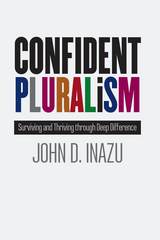 Confident Pluralism: Surviving and Thriving through Deep Difference
John D. Inazu
University of Chicago Press, 2016 In the three years since Donald Trump first announced his plans to run for president, the United States seems to become more dramatically polarized and divided with each passing month. There are seemingly irresolvable differences in the beliefs, values, and identities of citizens across the country that too often play out in our legal system in clashes on a range of topics such as the tensions between law enforcement and minority communities. How can we possibly argue for civic aspirations like tolerance, humility, and patience in our current moment?
In Confident Pluralism, John D. Inazu analyzes the current state of the country, orients the contemporary United States within its broader history, and explores the ways that Americans can—and must—strive to live together peaceably despite our deeply engrained differences. Pluralism is one of the founding creeds of the United States—yet America’s society and legal system continues to face deep, unsolved structural problems in dealing with differing cultural anxieties and differing viewpoints. Inazu not only argues that it is possible to cohabitate peacefully in this country, but also lays out realistic guidelines for our society and legal system to achieve the new American dream through civic practices that value toleration over protest, humility over defensiveness, and persuasion over coercion.
The paperback edition includes a new preface that addresses the election of Donald Trump, the decline in civic discourse after the election, the Nazi march in Charlottesville, and more, this new edition of Confident Pluralism is an essential clarion call during one of the most troubled times in US history. Inazu argues for institutions that can work to bring people together as well as political institutions that will defend the unprotected. Confident Pluralism offers a refreshing argument for how the legal system can protect peoples’ personal beliefs and differences and provides a path forward to a healthier future of tolerance, humility, and patience.
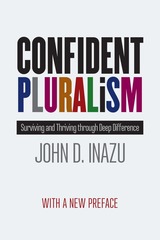 Confident Pluralism: Surviving and Thriving through Deep Difference
John D. Inazu
University of Chicago Press, 2018 In the three years since Donald Trump first announced his plans to run for president, the United States seems to become more dramatically polarized and divided with each passing month. There are seemingly irresolvable differences in the beliefs, values, and identities of citizens across the country that too often play out in our legal system in clashes on a range of topics such as the tensions between law enforcement and minority communities. How can we possibly argue for civic aspirations like tolerance, humility, and patience in our current moment?
In Confident Pluralism, John D. Inazu analyzes the current state of the country, orients the contemporary United States within its broader history, and explores the ways that Americans can—and must—strive to live together peaceably despite our deeply engrained differences. Pluralism is one of the founding creeds of the United States—yet America’s society and legal system continues to face deep, unsolved structural problems in dealing with differing cultural anxieties and differing viewpoints. Inazu not only argues that it is possible to cohabitate peacefully in this country, but also lays out realistic guidelines for our society and legal system to achieve the new American dream through civic practices that value toleration over protest, humility over defensiveness, and persuasion over coercion.
With a new preface that addresses the election of Donald Trump, the decline in civic discourse after the election, the Nazi march in Charlottesville, and more, this new edition of Confident Pluralism is an essential clarion call during one of the most troubled times in US history. Inazu argues for institutions that can work to bring people together as well as political institutions that will defend the unprotected. Confident Pluralism offers a refreshing argument for how the legal system can protect peoples’ personal beliefs and differences and provides a path forward to a healthier future of tolerance, humility, and patience.
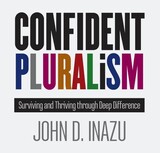 Confident Pluralism: Surviving and Thriving through Deep Difference
John D. Inazu
University of Chicago Press, 2018 This is an auto-narrated audiobook edition of this book.
In the years since Donald Trump first announced his plans to run for president, the United States seems to become more dramatically polarized and divided with each passing month. There are seemingly irresolvable differences in the beliefs, values, and identities of citizens across the country that too often play out in our legal system in clashes on a range of topics such as the tensions between law enforcement and minority communities. How can we possibly argue for civic aspirations like tolerance, humility, and patience in our current moment?
In Confident Pluralism, John D. Inazu analyzes the current state of the country, orients the contemporary United States within its broader history, and explores the ways that Americans can—and must—strive to live together peaceably despite our deeply engrained differences. Pluralism is one of the founding creeds of the United States—yet America’s society and legal system continues to face deep, unsolved structural problems in dealing with differing cultural anxieties and differing viewpoints. Inazu not only argues that it is possible to cohabitate peacefully in this country, but also lays out realistic guidelines for our society and legal system to achieve the new American dream through civic practices that value toleration over protest, humility over defensiveness, and persuasion over coercion.
With a new preface that addresses the election of Donald Trump, the decline in civic discourse after the election, the Nazi march in Charlottesville, and more, this new edition of Confident Pluralism is an essential clarion call during one of the most troubled times in US history. Inazu argues for institutions that can work to bring people together as well as political institutions that will defend the unprotected. Confident Pluralism offers a refreshing argument for how the legal system can protect peoples’ personal beliefs and differences and provides a path forward to a healthier future of tolerance, humility, and patience.
 ConFiguring America: Iconic Figures, Visuality, and the American Identity
Edited by Klaus Rieser, Michael Fuchs, and Michael Phillips
Intellect Books, 2013 Elvis Presley. Marilyn Monroe. LeBron James. They’re all American, of course, but like many cultural figures who hail from the United States, they have names and faces known the world over. ConFiguring America brings together a series of incisive essays that analyze a wide range of such figures: those who embody America’s tendency to produce celebrities and iconic personalities with global reach. Drawing on theoretical insights from a variety of fields—including cultural iconography, visual culture, star studies, and history—a diverse group of international contributors sheds light on how these figures and their media representations construct America’s image beyond its borders. An important addition to an expanding field, ConFiguring America will deepen readers’ understanding of celebrity, iconography, and their worldwide implications.
Configuring Topic and Focus in Russian
Tracy Holloway King
CSLI, 1995 This work examines word order. More accurately, it is the ordering of constituents that is discussed since prepositional phrases and most noun phrases form syntactic constituents and the encoding of topic and focus in Russian. As has long been observed, word order in Russian encodes specific discourse information: with neutral intonation, topics precede discourse-neutral constituents which precede foci. King extends this idea to show that word order encodes different types of topic and focus in a principled manner.
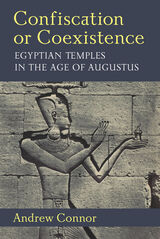 Confiscation or Coexistence: Egyptian Temples in the Age of Augustus
Andrew Connor
University of Michigan Press, 2022 It is generally accepted that Roman administrators, arriving in Egypt in the aftermath of Augustus’ annexation of the province, confiscated en masse the land and other property belonging to the temples of Egypt—estimated at as much as one-third of the country. It is further accepted that this confiscation doomed the temples by removing their economic support and making them subservient to the Roman state, and that this in turn led to the collapse of Egyptian religion. In Confiscation or Coexistence: Egyptian Temples in the Age of Augustus, author Andrew Connor takes direct issue with both claims.
The interpretative consensus developed after the publication of a handful of key documents—P.Tebt. 2.302 especially, alongside BGU 4.1198 and 1200, and P.Berl.Leihg. 1.5. Connor offers a fundamentally revised interpretation of these texts, building from a fresh examination of the papyri themselves. The book frames the interpretation in a wider discussion of Roman interactions with Egyptian religion, including material from inside and outside Egypt, and locates the development of an interpretative consensus in early 20th-century scholarship within the wider context of empire and colonization at the time. In doing so, Connor explores these papyri through their historical, intellectual, and linguistic contexts, alongside a number of other important texts bearing on the relationship between the temples and the Roman state.
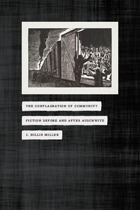 The Conflagration of Community: Fiction before and after Auschwitz
J. Hillis Miller
University of Chicago Press, 2011 “After Auschwitz to write even a single poem is barbaric.” The Conflagration of Community challenges Theodor Adorno’s famous statement about aesthetic production after the Holocaust, arguing for the possibility of literature to bear witness to extreme collective and personal experiences. J. Hillis Miller masterfully considers how novels about the Holocaust relate to fictions written before and after it, and uses theories of community from Jean-Luc Nancy and Derrida to explore the dissolution of community bonds in its wake. Miller juxtaposes readings of books about the Holocaust—Keneally’s Schindler’s List, McEwan’s Black Dogs, Spiegelman’s Maus, and Kertész’s Fatelessness—with Kafka’s novels and Morrison’s Beloved, asking what it means to think of texts as acts of testimony. Throughout, Miller questions the resonance between the difficulty of imagining, understanding, or remembering Auschwitz—a difficulty so often a theme in records of the Holocaust—and the exasperating resistance to clear, conclusive interpretation of these novels. The Conflagration of Community is an eloquent study of literature’s value to fathoming the unfathomable.
 Conflict Amid Consensus in American Trade Policy
Martha L. Gibson
Georgetown University Press, 2000 Americans have witnessed inconsistent and seemingly dramatic turnabouts in legislators' attitudes toward trade, with strong bipartisan support for free trade and the Uruguay Round in one instant and heated debate over participation in the World Trade Organization the next. Martha L. Gibson systematically traces the competing forces that interject conflict into an overall consensus on the value of a liberalized trade policy. Cutting through the tangled web of congressional politics, Gibson shows why it is impossible to understand trade legislation without first understanding how electoral politics and the institutional rules of Congress distort legislators' interests, incentives, and policy goals. Gibson's book clearly shows that trade legislation is not made in a vacuum but is just one in a series of simultaneous games with competing goals in which legislators engage to satisfy the conflicting demands of constituents.
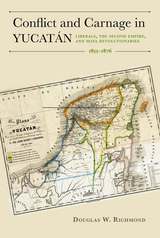 Conflict and Carnage in Yucatán: Liberals, the Second Empire, and Maya Revolutionaries, 1855–1876
Douglas W. Richmond
University of Alabama Press, 2015 The Yucatán Peninsula has one of the longest, most multifaceted histories in the Americas. With the arrival of Europeans, native Maya with long and successful cultural and diplomatic traditions of their own had to grapple with outside forces attempting to impose new templates of life and politics on them. Conflict and Carnage in Yucatán provides a rigorously researched study of the vexed and bloody period of 1855 to 1876, during which successive national governments implemented, replaced, and restored liberal policies.
Synthesizing an extensive and heterogeneous range of sources, Douglas W. Richmond covers three tumultuous political upheavals of this period. First, Mexico’s fledgling republic attempted to impose a liberal ideology at odds with traditional Maya culture on Yucatán; then, the French-backed regime of Emperor Maximilian began to reform Yucatán; and, finally, the republican forces of Benito Juárez restored the liberal hegemony. Many issues spurred resistance to these liberal governments. Instillation of free trade policies, the suppression of civil rights, and persecution of the Roman Catholic Church mobilized white opposition to liberal governors. The Mayas fought the seizure of their communal properties. A long-standing desire for regional autonomy united virtually all Yucatecans. Richmond advances the thought-provoking argument that Yucatán both fared better under Maximilian’s Second Empire than under the liberal republic and would have thrived more had the Second Empire not collapsed.
The most violent and bloody manifestation of these broad conflicts was the Caste War (Guerra de Castas), the longest sustained peasant revolt in Latin American history. Where other scholars have advocated the simplistic position that the war was a Maya uprising designed to reestablish a mythical past civilization, Richmond’s sophisticated recounting of political developments from 1855 to 1876 restores nuance and complexity to this pivotal time in Yucatecan history.
Richmond’s Conflict and Carnage in Yucatán is a welcome addition to scholarship about Mexico and Yucatán as well as about state consolidation, empire, and regionalism.
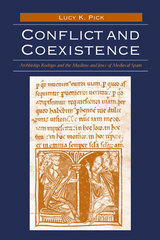 Conflict and Coexistence: Archbishop Rodrigo and the Muslims and Jews of Medieval Spain
Lucy K. Pick
University of Michigan Press, 2004 "An outstanding contribution not only to Spanish but to European history at large. Pick's book is the first to clarify the unity of purpose that drove Archbishop Rodrigo, a major figure not only as a historian and controversialist, but as a churchman whose military campaigns advanced the conquest of Muslim Spain and shifted the whole balance of power in the Iberian peninsula."
---J. N. Hillgarth, Professor Emeritus, University of Toronto
"By focusing on the diversified activities of the talented mid-thirteenth-century archbishop of Toledo, Lucy Pick brilliantly illuminates the complex relations between the Christian conquerors of Spain and the conquered Muslim and Jewish populations. Students of medieval Spain, of the medieval Roman Catholic Church, of medieval Muslims and Islam, and of medieval Jews and Judaism will benefit from this excellent study."
---Robert Chazan, New York University.
In Conflict and Coexistence, Lucy Pick sets out to explain how Christians, Muslims, and Jews lived alongside one another in medieval Spain. By examining the life and works of Rodrigo Jiménez de Rada, the Archbishop of Toledo (1209-47), Pick explains that the perceived threat of the non-Christian presence was managed through the subordination of Muslims and Jews.
Rodrigo stood at the center of a transformative period of history in the Iberian peninsula. During his long and varied career as archbishop, he acted as scholar, warrior, builder, and political leader. The wave of victories he helped initiate were instrumental in turning back the tide of Muslim attacks on Christian Spain and restarting the process of Christian territorial conquest. However, Toledo was still a multiethnic city in which Christians lived side by side with Jews and Muslims. As archbishop, he was faced with the considerable challenge of maintaining peace and prosperity in a city where religious passions and intolerance were a constant threat to stability.
This work seeks to examine Rodrigo's relations with the Muslims and Jews of his community both as he idealized them on paper and as he worked through them in real life. Though Rodrigo wrote an anti-Jewish polemic, and set out to conquer Muslim-held lands, he also used scholarly patronage and literary creation to combat internal and external, Christian and non-Christian threats alike. His intended and actual consequences of these varied techniques were to allow Christians, Muslims, and Jews to live together under Christian authority. Rodrigo was bound by practical necessity to find a means of accommodating these groups that was both effective and theologically satisfactory. Throughout this influential work, Pick examines the various aspects of Rodrigo's life and career that led to his policies and the consequences that his work and beliefs brought about in medieval Spain.
This book will be of interest to anyone who studies the history, religion, and literature of medieval Spain, to those interested in the transmission of learning from the Muslim to the Christian world, and to those who study intellectual life and development in medieval Europe.
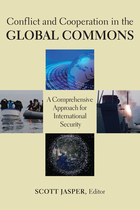 Conflict and Cooperation in the Global Commons: A Comprehensive Approach for International Security
Scott Jasper, Editor
Georgetown University Press, 2012 More than ever, international security and economic prosperity depend upon safe access to the shared domains that make up the global commons: maritime, air, space, and cyberspace. Together these domains serve as essential conduits through which international commerce, communication, and governance prosper. However, the global commons are congested, contested, and competitive. In the January 2012 defense strategic guidance, the United States confirmed its commitment “to continue to lead global efforts with capable allies and partners to assure access to and use of the global commons, both by strengthening international norms of responsible behavior and by maintaining relevant and interoperable military capabilities.” In the face of persistent threats, some hybrid in nature, and their consequences, Conflict and Cooperation in the Global Commons provides a forum where contributors identify ways to strengthen and maintain responsible use of the global commons. The result is a comprehensive approach that will enhance, align, and unify commercial industry, civil agency, and military perspectives and actions.
Conflict and Crisis: The Presidency of Harry S. Truman, 1945-1948
Robert J. Donovan
University of Missouri Press, 1996 “It was a quiet on the second floor. The vice-president walked solemnly into Mrs. Roosevelt’s sitting room, where she waited, grave and calm. With her was her daughter, Mrs. Anna Roosevelt Boettiger, her husband, Colonel John Boettiger, and Stephan Early. Truman knew at a glance that his premonition had been true. Mrs. Roosevelt came forward directly and put her arm on his shoulder. ‘Harry, the President is dead.’” Robert J. Donovan’s Conflict and Crisis presents a detailed account of Harry S. Truman’s presidency from 1945-1948.
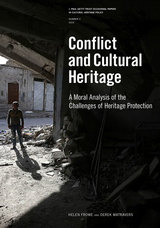 Conflict and Cultural Heritage: A Moral Analysis of the Challenges of Heritage Protection
Helen Frowe
J. Paul Getty Trust, The, 2019 In the third issue of the J. Paul Getty Trust Occasional Papers in Cultural Heritage Policy series, authors Helen Frowe and Derek Matravers pivot from the earlier tone of the series in discussing the appropriate response to attacks on cultural heritage with their paper, “Conflict and Cultural Heritage: A Moral Analysis of the Challenges of Heritage Protection.” While Frowe and Matravers acknowledge the importance of cultural heritage, they assert that we must more carefully consider the complex moral dimensions—the inevitable serious consequences to human beings—before formulating policy to forcefully protect it.
A number of writers and thinkers working on the problem of preserving the world’s most treasured monuments, sites, and objects today cite what Frowe and Matravers call extrinsic and intrinsic justifications for the protection of cultural heritage. These are arguments that maintain that protecting heritage will be a key means to achieve other important goals, like the prevention of genocide, or arguments that heritage deserves to be forcefully protected for its own sake. Frowe and Matravers deconstruct both types of justifications, demonstrating a lack of clear evidence for a causal relationship between the destruction of cultural heritage and atrocities like genocide and arguing that the defense of heritage must not be treated with the same weight or urgency, or according to the same international policies, as the defense of human lives.
By calling for expanded theory and empirical data and the consideration of morality in the crafting of international policy vis-à-vis cultural heritage protection, Frowe and Matravers present a thoughtful critique that enriches this important series and adds to the ongoing dialogue in the field.
Conflict and Development in Iranian Film
Edited by A. A. Seyed-Gohrab and Kamran Talattof
Leiden University Press, 2013 The chapters in this volume explore the philosophical underpinnings and cinematic techniques characteristic of Iranian film. Collectively, they show how the pervasive themes of Iranian cinema, such as martyrdom and war, gender roles, and social policy issues have been addressed, and how directors have approached them using a variety of techniques. Some chapters outline the poetic and mystical dimensions of Abbas Kiarostami's movies. Other chapters describe the effects of the Islamic Revolution on codes of morality and their expression in film as well as on directors' tactics in response to the new theocratic system.
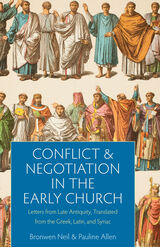 Conflict and Negotiation in the Early Church: Letters from Late Antiquity, Translated from the Greek, Latin, and Syriac
Bronwen Neil
Catholic University of America Press, 2020 Recent decades have seen great progress made in scholarship towards understanding the major civic role played by bishops of the eastern and western churches of Late Antiquity. Brownen Neil and Pauline Allen explore and evaluate one aspect of this civic role, the negotiation of religious conflict.
Conflict and Negotiation in the Early Church focuses on the period 500 to 700 CE, one of the least documented periods in the history of the church, but also one of the most formative, whose conflicts resonate still in contemporary Christian communities, especially in the Middle East.
To uncover the hidden history of this period and its theological controversies, Neil and Allen have tapped a little known written source, the letters that were exchanged by bishops, emperors and other civic leaders of the sixth and seventh centuries. This was an era of crisis for the Byzantine empire, at war first with Persia, and then with the Arab forces united under the new faith of Islam. Official letters were used by the churches of Rome and Constantinople to pursue and defend their claims to universal and local authority, a constant source of conflict. As well as the east-west struggle, Christological disagreements with the Syrian church demanded increasing attention from the episcopal and imperial rulers in Constantinople, even as Rome set itself adrift and looked to the West for new allies.
From this troubled period, 1500 letters survive in Greek, Latin, and Syriac. With translations of a number of these, many rendered into English for the first time, Conflict and Negotiation in the Early Church examines the ways in which diplomatic relations between churches were developed, and in some cases hindered or even permanently ruptured, through letter-exchange at the end of Late Antiquity.
Conflict and Rhetoric in French Policymaking
Frank R. Baumgartner
University of Pittsburgh Press, 1989
Education policy provides a fertile ground for analyzing the perennial tug-of-war between interest groups and public officials. Baumgartner considers thirty examples of French education policymaking during the early 1980s using a combination of documentary evidence, interviews with more than 100 politicians, civil servants, members of parliament, union and interest group leaders, and a thorough analysis of press coverage of education topics.
Conflict and Violence in Medieval Italy 568-1154
Christopher Heath
Amsterdam University Press, 2022 This collection of essays from both established and emerging scholars analyses the dynamic connections between conflict and violence in medieval Italy. The contributors present a new critique of power that sustained both kingship and locally based elite networks throughout the Italian peninsula. A broad temporal range, covering the sixth to the twelfth centuries, allows this book to cross a number of 'traditional' fault-lines in Italian historiography – 774, 888, 962 and 1025. The essays provide wide-ranging analyses of the role of conflict in the period, the operation of power and the development of communal consciousness and collective action by individuals and groups. It is thus essential reading for scholars, students and general readers who wish to understand the situation in medieval Italy.
 Conflict Bodies: The Politics of Rape Representation in the Francophone Imaginary
Régine Michelle Jean-Charles
Ohio State University Press, 2014 Conflict Bodies: The Politics of Rape Representation in the Francophone Imaginary explores the relationship between rape and narratives of violence in francophone literature and culture. The book offers ways to account for the raped bodies beneath the conflicts of slavery, genocide, dictatorship, natural disasters and war—and to examine why doing so is necessary. Through a feminist analysis of the rhetoric and representation of rape in francophone African and Caribbean cultural production, Conflict Bodies examines theoretical, visual, and literary texts that challenge the dominant views of postcolonial violence. Using an interdisciplinary and comparative framework to consider different contexts—Haiti, Guadeloupe, Rwanda, and Democratic Republic of the Congo—Régine Michelle Jean-Charles illuminates how analyzing survivors’ subjectivities, stories, and embodied experiences provides a nuanced understanding of what is at stake in rape representation. Referencing theories from francophone literary studies, transnational black feminisms, and rape cultural criticism to analyze novels, film, photography, drama, and documentaries, Jean-Charles argues that in today’s global climate—where one in three women worldwide has been raped, rape is being used as a tool of war, and rape myths circulate with vehemence—traditional “scripts of violence” that fail to account for sexual violence demand refusal, re-thinking, and re-imagining.
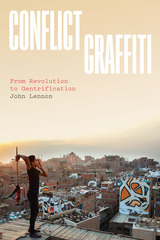 Conflict Graffiti: From Revolution to Gentrification
John Lennon
University of Chicago Press, 2021 This study examines the waves of graffiti that occur before, during, and after a conflict—important tools of political resistance that make protest visible and material.
Graffiti makes for messy politics. In film and television, it is often used to create a sense of danger or lawlessness. In bathroom stalls, it is the disembodied expression of gossip, lewdness, or confession. But it is also a resistive tool of protest, making visible the disparate voices and interests that come together to make a movement.
In Conflict Graffiti, John Lennon dives into the many permutations of graffiti in conflict zones—ranging from the protest graffiti of the Black Lives Matter movement in Ferguson and the Tahrir Square demonstrations in Egypt, to the tourist-attraction murals on the Israeli Separation Wall and the street art that has rebranded Detroit and post-Katrina New Orleans. Graffiti has played a crucial role in the revolutionary movements of these locales, but as the conflict subsides a new graffiti and street art scene emerges—often one that ushers in postconflict consumerism, gentrification, militarization, and anesthetized forgetting.
Graffiti has an unstable afterlife, fated to be added to, transformed, overlaid, photographed, reinterpreted, or painted over. But as Lennon concludes, when protest movements change and adapt, graffiti is also uniquely suited to shapeshift with them.
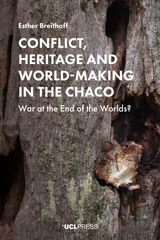 Conflict, Heritage and World-Making in the Chaco: War at the End of the Worlds?
Esther Breithoff
University College London, 2020 Conflict, Heritage and World-Making in the Chaco documents and interprets the physical remains and afterlives of South America’s first “modern” armed conflict, the Chaco War (1932–35), and its effects on modern-day Paraguay. Esther Breithoff not only focuses on conventional archaeological remains but also takes an ontological approach to heterogeneous assemblages of objects, texts, practices, and landscapes shaped by industrial war. What she shows is that these assemblages are not simply dead memorials to a bloody war, but rather have been, and continue to be, active in making, unmaking, and remaking worlds—both for those who saw the war itself and for those who continue to live with its effects in the present.
Framing the study as an exploration of modern, industrialized warfare as a sort of “hyper object”, Breithoff shows how the material culture and heritage of modern conflict fuse together objects, people, and landscapes, connecting them physically and conceptually across vast, almost unimaginable distances and time periods. This book makes a major contribution to key debates in anthropology, archaeology, critical heritage, and material culture studies on the significance of conflict in understanding the Anthropocene, and the roles played by its persistent heritages in assembling worlds.
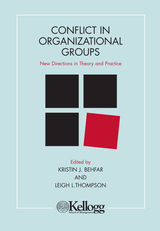 Conflict in Organizational Groups: New Directions in Theory and Practice
Leigh Thompson
Northwestern University Press, 2007 The chapters in this book were presented at a conference held at the Kellogg School of Management in June 2005 entitled Conflict in Organizational Groups: New Directions in Theory and Practice. The Kellogg Team and Group Research Center (KTAG) and the Kellogg School of Management cosponsored the conference. The goal of the conference was to bring together both junior and senior scholars from a variety of disciplines to discuss their newest ideas and current trends in group conflict research. The chapters in this book represent perspectives from the fields of business, political science, sociology, and psychology. The idea to organize a conference about conflict in organizational groups arose from three interrelated and exciting opportunities for theory and practice--both the academic and business press have focused growing attention on the management challenges of organizational groups; the academic community has begun to integrate various disciplinary perspectives, as evidenced by a growing number of cross-disciplinary coauthorships and thematic conferences; and several statistical and methodological advances have allowed scholars to better model variables across levels of analysis. Taken together, these three reasons inspired the assembling of the interdisciplinary mix of seasoned and newly minted authors who in this volume tackle important and complex questions about group conflict. Their chapters represent cutting-edge advances in theory, methodology, and challenges to dominant perspectives.
Conflict in the Great Outdoors: Toward Understanding and Managing for Diverse Sportsmen Preferences
Hobson Bryan, Jr.
University of Alabama Press, 2008 Managing nature’s playground—where diversity meets design. A major problem of outdoor recreation management addressed in Hobson Bryan’s Conflict in the Great Outdoors is the difficulty in identifying sportsmen subgroups having distinctive preferences and expectations as to the composition of the “quality” outdoor experience. Land-use managers and planners are faced with the problem of matching resources with more users having increasingly specific motivations. Bryan applies his theory of variations within a leisure activity by addressing what sportsmen do and why they do it in various activities such as mountain climbing, hunting, canoeing, skiing, and backpacking.
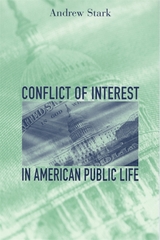 Conflict of Interest in American Public Life
Andrew Stark
Harvard University Press, 2000 Ranging over a wide array of cases, Andrew Stark draws on legal, moral, and political thought--as well as the rhetoric of officeholders and the commentary of journalists--to analyze several decades of debate over conflict of interest in American public life. He offers new ways of interpreting the controversies about conflict of interest, explains their prominence in American political combat, and suggests how we might make them less venomous and intractable.
Stark shows that over the past forty years public opinion has shifted steadily toward an objective conception of conflict: instead of considering case-by-case motivations, we have adopted broadly prophylactic rules barring a variety of circumstances with no regard for whether individuals facing those circumstances would be moved in culpable ways. At the same time, we have shifted toward a subjective conception of interest: where we once focused narrowly on money, we now inquire into various commitments individuals might pursue in ways that could impair their judgment.
In exploring the consequences of these twin migrations--the passage of "conflict" from a subjective to an objective understanding; the transformation of "interest" from an objective to a subjective conception--the author aims to make our debates over public ethics less vexatious for officials, and more lucid for citizens.
The Conflict of Interpretations
Paul Ricoeur
Northwestern University Press, 1974 This collection brings together twenty-two essays by Paul Ricoeur under the topics of structuralism, psychoanalysis, hermeneutics, and religion. In dramatic conciseness, the essays illuminate the work of one of the leading philosophers of the day. Those interested in Ricoeur's development of the philosophy of language will find rich and suggestive reading. But the diversity of essays also speaks beyond the confines of philosophy to linguists, theologians, psychologists, and psychoanalysts.
The Conflict of Interpretations: Essays in Hermeneutics
Paul Ricoeur
Northwestern University Press, 2007 This collection brings together twenty-two essays by Paul Ricoeur under the topics of structuralism, psychoanalysis, hermeneutics, and religion. In dramatic conciseness, the essays illuminate the work of one of the leading philosophers of the day. Those interested in Ricoeur's development of the philosophy of language will find rich and suggestive reading. But the diversity of essays also speaks beyond the confines of philosophy to linguists, theologians, psychologists, and psychoanalysts.
The Conflict of the Faculties: Perspectives on Artistic Research and Academia
Henk Borgdorff
Amsterdam University Press, 2012 Artistic research is an endeavour in which the artistic and the academic are connected. In this emerging field of research artistic practices contribute as research to what we know and understand, and academia opens its mind to forms of knowledge and understanding that are entwined with artistic practices.
Henk Borgdorff also addresses how we comment on such issues, and how the things we say cause the practices involved to manifest themselves in specific ways, while also setting them into motion. In this sense, this work not only explores the phenomenon of artistic research in relation to academia, but it also engages with that relationship.
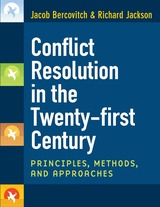 Conflict Resolution in the Twenty-first Century: Principles, Methods, and Approaches
Jacob Bercovitch and Richard Jackson
University of Michigan Press, 2009 In the past, arbitration, direct bargaining, the use of intermediaries, and deference to international institutions were relatively successful tools for managing interstate conflict. In the face of terrorism, intrastate wars, and the multitude of other threats in the post–Cold War era, however, the conflict resolution tool kit must include preventive diplomacy, humanitarian intervention, regional task-sharing, and truth commissions. Here, Jacob Bercovitch and Richard Jackson, two internationally recognized experts, systematically examine each one of these conflict resolution tools and describe how it works and in what conflict situations it is most likely to be effective. Conflict Resolution in the Twenty-first Centuryis not only an essential introduction for students and scholars, it is a must-have guide for the men and women entrusted with creating stability and security in our changing world.
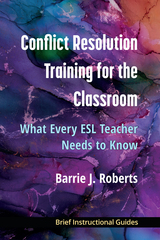 Conflict Resolution Training for the Classroom: What Every ESL Teacher Needs to Know
Barrie J. Roberts
University of Michigan Press, 2020 ESL instructors without a background in conflict resolution (CR) who teach intermediate to advanced courses at colleges, universities, or in Intensive English Programs, may want to provide students with valuable negotiation and mediation skills. Author Barrie J. Roberts is an experienced ESL teacher, lawyer, mediator, and Alternative Dispute Resolution (ADR) Administrator for southern California Superior Courts. In this book, she draws upon her experience using these activities in a variety of ESL settings and courses with students from all over the world to inspire other ESL teachers to add CR approaches to their activities, lessons, and courses. Following an introduction to conflict resolution, Conflict Resolution Training for the Classroom shows how much of the teaching of CR is similar to teaching ESL. It outlines ways to apply negotiation and mediation to ESL activities, how to prevent and resolve conflicts, how to use specific types of role-plays to address conflicts, and how to design successful activities. The book also includes a list of resources and sample syllabi.
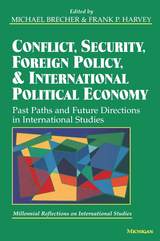 Conflict, Security, Foreign Policy, and International Political Economy: Past Paths and Future Directions in International Studies
Michael Brecher and Frank P. Harvey, editors
University of Michigan Press, 2009 No study of international relations is complete without consideration of foreign policy processes and an understanding of state security, conflict in global politics, and the relationship between the world economy and international behavior. Conflict, Security, Foreign Policy, and International Political Economy: Past Paths and Future Directions in International Studies consists of twelve original essays that point out the strengths and weaknesses of current approaches in these research areas as well as suggest agendas for future research. See table of contents and excerpts. Frank P. Harvey is Professor of Political Science and Director of the Centre for Foreign Policy Studies at Dalhousie University. Michael Brecher is the R.B. Angus Professor of Political Science at McGill University and past president of the International Studies Association. Millennial Reflections on International Studies This volume is part of the Millennial Reflections on International Studies project in which forty-five prominent scholars engage in self-critical, state-of-the-art reflection on international studies to stimulate debates about successes and failures and to address the larger questions of progress in the discipline. Other paperbacks from this project:
Realism and Institutionalism in International Studies
Evaluating Methodology
Critical Perspectives in International Studies The full collection of essays is available in the handbook Millennial Reflections on International Studies.
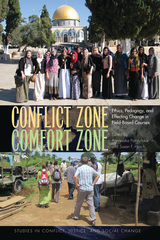 Conflict Zone, Comfort Zone: Ethics, Pedagogy, and Effecting Change in Field-Based Courses
Agnieszka Paczynska
Ohio University Press, 2019 By taking students out of their comfort zone, field-based courses—which are increasingly popular in secondary and postsecondary education—have the potential to be deep, transformative learning experiences. But what happens when the field in question is a site of active or recent conflict? In Conflict Zone, Comfort Zone, editors Agnieszka Paczyńska and Susan F. Hirsch highlight new approaches to field-based learning in conflict zones worldwide. As the contributors demonstrate, instructors must leave the comfort zone of traditional pedagogy to meet the challenges of field-based education. Drawing on case studies in the United States and abroad, the contributors address the ethical considerations of learning in conflict zones, evaluate the effectiveness of various approaches to teaching these courses, and provide guidelines for effecting change. They also explore how the challenges of field-based classes are magnified in conflict and postconflict settings, and outline the dilemmas faced by those seeking to resolve those challenges. Finally, filling a crucial gap in existing literature, the contributors identify best practices that will assist aspiring instructors in developing successful field-based courses in conflict zones. Contributors: Daniel R. Brunstetter, Alison Castel, Gina M. Cerasani, Alexander Cromwell, Maryam Z. Deloffre, Sandi DiMola, Leslie Dwyer, Eric Hartman, Pushpa Iyer, Allyson M. Lowe, Patricia A. Maulden, rj nickels, Anthony C. Ogden, Jennifer M. Ramos, Lisa E. Shaw, Daniel Wehrenfennig
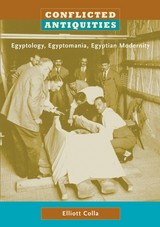 Conflicted Antiquities: Egyptology, Egyptomania, Egyptian Modernity
Elliott Colla
Duke University Press, 2007 Conflicted Antiquities is a rich cultural history of European and Egyptian interest in ancient Egypt and its material culture, from the early nineteenth century until the mid-twentieth. Consulting the relevant Arabic archives, Elliott Colla demonstrates that the emergence of Egyptology—the study of ancient Egypt and its material legacy—was as consequential for modern Egyptians as it was for Europeans. The values and practices introduced by the new science of archaeology played a key role in the formation of a new colonial regime in Egypt. This fact was not lost on Egyptian nationalists, who challenged colonial archaeologists with the claim that they were the direct heirs of the Pharaohs, and therefore the rightful owners and administrators of ancient Egypt’s historical sites and artifacts. As this dispute developed, nationalists invented the political and expressive culture of “Pharaonism”—Egypt’s response to Europe’s Egyptomania. In the process, a significant body of modern, Pharaonist poetry, sculpture, architecture, and film was created by artists and authors who looked to the ancient past for inspiration. Colla draws on medieval and modern Arabic poetry, novels, and travel accounts; British and French travel writing; the history of archaeology; and the history of European and Egyptian museums and exhibits. The struggle over the ownership of Pharaonic Egypt did not simply pit Egyptian nationalists against European colonial administrators. Egyptian elites found arguments about the appreciation and preservation of ancient objects useful for exerting new forms of control over rural populations and for mobilizing new political parties. Finally, just as the political and expressive culture of Pharaonism proved critical to the formation of new concepts of nationalist identity, it also fueled Islamist opposition to the Egyptian state.
 Conflicted Health Care: Professionalism and Caring in an Urban Hospital
Ester Carolina Apesoa-Varano
Vanderbilt University Press, 2014 Anyone who has spent time in a hospital as a patient or family member of a patient hopes that those who attend to us or our loved ones are at their professional best and that they care for us in ways that console us and preserve our dignity. This book takes an intimate look at how health care practitioners struggle to live up to their professional and caring ideals through (or during?) twelve-hour shifts on the hospital floor.
From 3,200 hours of participant-observation and 500 hours of follow-up interviews with twenty-one doctors, thirty registered nurses, twenty-one respiratory therapists, twenty medical social workers, and eighteen occupational, physical, and speech therapists, the authors create a complex picture of the workplace conflicts that different types of health care practitioners face. Though all these groups espouse caring ideals, professional interests and a curative orientation dominate in patient care and interoccupational relations. Because emotive caring is not supported by the organization of health care in the hospital, it becomes an individual virtue that overworked staff find hard to perform, and it takes on an ideological form that obscures the status hierarchy among practitioners. Conflicts between practitioners rest upon the ranking of each group's knowledge base. They manifest in efforts to work as a team or set limits on practitioner responsibilities and in differing views on unionization.
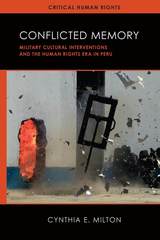 Conflicted Memory: Military Cultural Interventions and the Human Rights Era in Peru
Cynthia E. Milton
University of Wisconsin Press, 2018 What happens when concepts of "truth," "memory," and "human rights" are taken up and adapted by former perpetrators of violence? Peru has moved from the 1980s–90s conflict between its armed forces and Shining Path militants into an era of open democracy, transitional justice, and truth and reconciliation commissions. Cynthia Milton reveals how Peru's military has engaged in a tactical cultural campaign—via books, films, museums—to shift public opinion, debate, and memories about the nation's violent recent past and its part in it.
Milton calls attention to fabrications of our post-truth era but goes further to deeply explore the ways members of the Peruvian military see their past, how they actively commemorate and curate it in the present, and why they do so. Her nuanced approach upends frameworks of memory studies that reduce military and ex-military to a predictable role of outright denial.
Conflicted Memory: Military Cultural Interventions and the Human Rights Era in Peru
Cynthia E. Milton
University of Wisconsin Press, 2020 Cynthia E. Milton reveals how Peru's military has engaged in a tactical cultural campaign—via books, films, museums—to shift public opinion, debate, and memories about the role it played in the nation's recent violent past. Milton calls attention to fabrications and goes further to deeply explore the ways members of the Peruvian military see their past, how they actively commemorate and curate it in the present, and why they do so. Her nuanced approach upends frameworks of memory studies that reduce military and ex-military to a predictable role of outright denial.
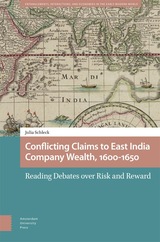 Conflicting Claims to East India Company Wealth, 1600-1650: Reading Debates over Risk and Reward
Julia Schleck
Amsterdam University Press, 2024 Centered on moral critiques of wealth and the unequal distribution of risks and rewards in the lengthy voyages required by the East Indies trade, this book examines the debates surrounding England’s earliest global trading ventures. Arguments over the staggering loss of lives and national resources and struggles over control of the new trade in luxuries reveal the forging of rationales justifying the new capitalist inequalities. Yet Company servants traveling abroad to conduct the risky trade resisted this newly coalescing social formation through strategic disobedience to their masters’ will, controlling information and promoting ignorance when it served their financial and sexual purposes. Conflicting Claims to East India Company Wealth, 1600–1650 interrogates the forces that shaped England’s earliest forays into capitalist imperialism by tracing the battles over corporate control of men’s finances, marriages, and bare survival at the dawn of its global trade.
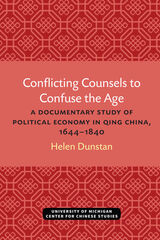 Conflicting Counsels to Confuse the Age: A Documentary Study of Political Economy in Qing China, 1644–1840
Helen Dunstan
University of Michigan Press, 1996 Conflicting Counsels to Confuse the Age translates and analyzes thirty-eight memorials to the throne and other Qing documents dealing with important issues of Chinese political economy, providing thoughtful and provocative commentary. Subjects covered by the texts include water control, mining, grain trade, pawnshops, brewing, and commercial shipping. The documents also contain detailed discussions of how the state should control wealth, self-interest, profit, hoarding, and the market. In translating these primary sources, Helen Dunstan invites fellow specialists in Chinese studies, including Qing historians, to watch Qing officials and others thinking through problems of political economy and developing arguments to persuade colleagues or superiors. By emphasizing their rhetorical nature and genre conventions, Dunstan offers a reminder that it is improper to use the “information” in such texts without attention to the author’s purpose, and without grasping the rhetorical structure of the text as a whole. As a model for close reading, Conflicting Counsels aims to induce greater sensitivity to the nature of Qing records. The second purpose of Conflicting Counsels is to help dispel the notion that economic liberalism is necessarily a Western, “modern” phenomenon. Many of the texts translated record areas of tension and controversy in eighteenth-century approaches to a central project of Confucian paternalist administration, “nourishing the people” (yangmin). Although Dunstan attempts to present both sides fairly, some materials included present the opinion that, in certain vital matters, it was better for the state to stand aside, and leave society’s own economic institutions, trade in particular, to handle things. While not a majority, the texts that build some kind of market mechanism argument should be of greatest interest to Qing historians.
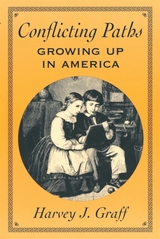 Conflicting Paths: Growing Up in America
Harvey J. Graff
Harvard University Press, 1995 We grow up--so simple, it just seems to happen--and yet there are endless variations in the way we do it. What part does culture play in the process? How much do politics and economics have to do with it? As the nation has matured, have the ways people grow up changed too? This book traces the many paths to adulthood that Americans have pursued over time. Spanning more than two centuries of intense transformation in the lives of individuals and the life of a nation, Conflicting Paths is an innovative history of growing up in America.
Harvey J. Graff, a distinguished social historian, mines more than five hundred personal narratives for what they can tell us about the passage from childhood to maturity. Drawing on diaries, memoirs, autobiographies, and letters, he builds a penetrating, complex, firsthand account of how childhood, adolescence, and youth have been experienced and understood--as functions of familial and social relations, as products of biology and physiology, and as cultural and political constructs. These first-person testimonies cross the lines of time and space, gender and class, ethnicity, age, and race. In these individual stories and the larger story they constitute, Graff exposes the way social change--including institutional developments and shifting attitudes, expectations, and policy--and personal experience intertwine in the process of growing up. Together, these narratives form a challenging, subtle guide to historical experiences and to the epochal remaking of growing up.
The most socially inclusive and historically extensive of any such research, Graff's work constitutes an important chapter in the story of the family, the formation of modern society, and the complex interweaving of young people, tradition, and change.
Conflicts of Care: Hospital Ethics Committees in the USA and Germany
Helen Kohlen
Campus Verlag, 2009 Since the 1980s, increasing numbers of hospitals in the United States have formed internal ethics committees to help doctors and other health care professionals deal with complicated ethical questions, especially those regarding the end of a life. But it is only in recent years that German hospitals have followed suit. In Conflicts of Care, Helen Kohlen offers the first comprehensive look at the origin and function of these committees in German hospitals. Using a mix of archival research, participant observation, and interviews, Kohlen explores the debates that surrounded their formation and the functions they have taken on since their creation.
Conflicts of Principle
Abbot Lawrence Lowell
Harvard University Press George Washington and Abraham Lincoln are honored for doing entirely different things: Washington because he successfully carried out a war for independence, Lincoln because he successfully crushed a war for independence. As in these two outstanding instances, a principle absolutely correct within certain limits may not be so under other conditions. In the field of public affairs and social relations, principles equally good in their place often come into conflict; and it is there that the student of political science finds his most interesting problems. President Lowell has observed such conflicts with the wisdom that comes from long experience and has discussed them in a book that will stimulate thought, arouse discussion, and lead to a reconsideration of many questions.
Conflicts over Coca Fields in Sixteenth-Century Perú
María Rostworowski de Diez Canseco
University of Michigan Press, 1988 Many archaeologists and ethnohistorians use historic documents to help interpret prehistoric archaeological sequences. A sixteenth-century Spanish document called Justicia 413 has been instrumental in helping researchers understand conflict among the prehistoric polities of coastal Peru. Volume 4 of the subseries Studies in Latin American Ethnohistory & Archaeology.
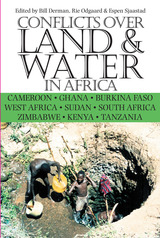 Conflicts Over Land & Water in Africa: Cameroon, Ghana, Burkina Faso, West Africa, Sudan, South Africa, Zimbabwe, Kenya, Tanzania
Bill Derman
Michigan State University Press, 2007 This is an examination of the broader context for the re-emergence of land reform and resource conflicts in Africa. Efforts to change the race based systems of land ownership and land tenure in Namibia, South Africa, and Zimbabwe have pushed land issues to the forefront of social and economic discourses in Africa. This collection examines the broader context for the re-emergence of land reform and resource conflicts.
The case studies examine the links between identity maintenance, tenurial changes, state intervention, and forms and modes of conflict. The authors emphasize the need for a deeper understanding of local histories, cultures, and motivations if efforts to attain a more just distribution of resources are to succeed. The book contributes to a field that has been developing rapidly in the decade since the publication of Melissa Leach and Robin Mearns' collection The Lie of the Land and Mahmood Mamdani's Citizen and Subject. Those two books started a wide ranging discussion of the political reasons for failed development in Africa, as well as the environmental and natural resource dimensions of that failure.
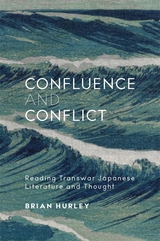 Confluence and Conflict: Reading Transwar Japanese Literature and Thought
Brian Hurley
Harvard University Press, 2022 Writers and intellectuals in modern Japan have long forged dialogues across the boundaries separating the spheres of literature and thought. This book explores some of their most intellectually and aesthetically provocative connections in the volatile transwar years of the 1920s to 1950s. Reading philosophical texts alongside literary writings, the study links the intellectual side of literature to the literary dimensions of thought in contexts ranging from middlebrow writing to avant-garde modernism, and from the wartime left to the postwar right.
Chapters trace these dynamics through the novelist Tanizaki Jun’ichirō’s collaboration with the nativist linguist Yamada Yoshio on a modern translation of The Tale of Genji; the modernist writer Yokomitsu Riichi’s dialogue with Kyoto School philosophers around the question of “worldliness”; the Marxist poet Nakano Shigeharu’s and the philosopher Tosaka Jun’s thinking about prosaic everyday language; and the postwar rumination on liberal society that surrounded the scholar Edwin McClellan while he translated Natsume Sōseki’s classic 1914 novel Kokoro as a graduate student in the United States working with the famed economist Friedrich Hayek. Revealing unexpected intersections of literature, ideas, and politics in a global transwar context, the book concludes by turning to Murakami Haruki and the resonances of those intersections in a time closer to our own.
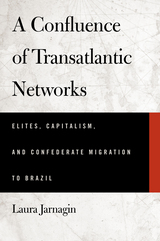 A Confluence of Transatlantic Networks: Elites, Capitalism, and Confederate Migration to Brazil
Laura Jarnagin
University of Alabama Press, 2013 Examines the qualitative nature of capitalism’s processes through the lens of social networks
A Confluence of Transatlantic Network demonstrates how portions of interconnected trust-based kinship, business, and ideational transatlantic networks evolved over roughly a century and a half and eventually converged to engender, promote, and facilitate the migration of southern elites to Brazil in the post–Civil War era. Placing that migration in the context of the Atlantic world sharpens our understanding of the transborder dynamic of such mainstream nineteenth-century historical currents as international commerce, liberalism, Protestantism, and Freemasonry. The manifestation of these transatlantic forces as found in Brazil at midcentury provided disaffected Confederates with a propitious environment in which to try to re-create a cherished lifestyle.
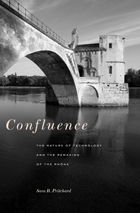 Confluence: The Nature of Technology and the Remaking of the Rhône
Sara B. Pritchard
Harvard University Press, 2011 Because of its location, volume, speed, and propensity for severe flooding, the Rhône, France’s most powerful river, has long influenced the economy, politics, and transportation networks of Europe. Humans have tried to control the Rhône for over two thousand years, but large-scale development did not occur until the twentieth century. The Rhône valley has undergone especially dramatic changes since World War II. Hydroelectric plants, nuclear reactors, and industrialized agriculture radically altered the river, as they simultaneously fueled both the physical and symbolic reconstruction of France.
In Confluence, Sara B. Pritchard traces the Rhône’s remaking since 1945. She interweaves this story with an analysis of how state officials, technical elites, and citizens connected the environment and technology to political identities and state-building. In the process, Pritchard illuminates the relationship between nature and nation in France.
Pritchard’s innovative integration of science and technology studies, environmental history, and the political history of modern France makes a powerful case for envirotechnical analysis: an approach that highlights the material and rhetorical links between ecological and technological systems. Her groundbreaking book demonstrates the importance of environmental management and technological development to culture and politics in the twentieth century. As Pritchard shows, reconstructing the Rhône remade France itself.
 Confluences: Religion, Health, and Diversity in Missouri
Signe Cohen
University of Missouri Press, 2025 At the confluence of the Missouri and Mississippi rivers, the South and Midwest, the Ozarks and the Ouachita mountains, the plains and the prairies, America’s religions flow together and are remade. Bringing together experts in religious history, sociology, and medicine, Confluences: Religion, Health, and Diversity in Missouri shows that centuries before the first European colonists arrived at the confluence of the great rivers in what is now Missouri, the region’s indigenous inhabitants lived at the center of a transnational nexus for religious diversity and that, following the arrival of European settlers, religions have continuously shaped health and healing and informed Missouri’s regional identity.
The contributors to this volume explore connections between religious affiliation, race, gender, ethnicity, epidemiology, and attitudes towards health and medicine in Missouri from the nineteenth century to the present day. They ask what role religious belief systems play in healthcare outcomes and offer important arguments for building a dialogue between faith communities and medical caregivers. Centering on Missouri as a site for religious transformation and diversity, this volume documents how religious perspectives shape contemporary America.
Initial chapters outline the religious history of Missouri, relaying the history of medicine in the region before and after Missouri statehood. Subsequent essays document Missouri’s religious diversity by contemplating Native American, Asian American, and African American religious experiences in Missouri, intentionally recovering and respectfully contextualizing understudied events and forgotten individuals. The volume’s remaining essays consider religious responses to the Cholera, Influenza, and Covid-19 epidemics and show how Native American, Euro-American, and African American Missourians have transformed U.S. history and healthcare. Collectively, the essays in this book demonstrate that religious freedom, medical knowledge, and transnational encounters are woven into the historical fabric of the region.
Featuring essays by experts in Religious Studies and Health Sciences, this volume will be of interest to scholars of religion, sociology, public health, and medicine, as well as readers more generally interested in the history and culture of Missouri.
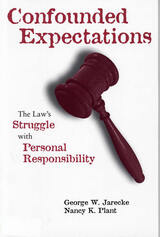 Confounded Expectations: The Law's Struggle with Personal Responsibility
George W. Jarecke and Nancy K. Plant
Southern Illinois University Press, 2000
George W. Jarecke and Nancy K. Plant present a selection of cases across a broad spectrum of American law to demonstrate that our society relies inappropriately on the legal system to cure ills the system was not designed to address.
Jarecke and Plant note that while we in the United States worry considerably about the problem of individual assumption of responsibility—whether for personal mistakes, financial setbacks, or pure bad luck—we appear uneasy about the concept and unclear about what it means on a daily basis. Not only are we incapable of accepting personal responsibility; we barely know what it means to do so.
Mistakenly, we turn to the legal system to solve this dilemma. Yet our laws as our legislators write them, as judges interpret them, as lawyers argue them, and as juries apply them send mixed messages about whether and how we should exercise personal responsibility.
Each chapter of Confounded Expectations features one main case to explain one legal theory, with other cases noted as examples of facets of each theory. To demonstrate the law that requires merchants to guarantee the quality of their products, for example, Jarecke and Plant discuss the case of the band mothers whose fund-raising luncheon menu included turkey salad contaminated by salmonella. Peripheral cases include a horse falsely sold as a gelding, a riding mower that tipped over when used as instructed, makeup that was guaranteed to be safe but caused a rash, and pigs sick with hog cholera.
 The Confounding Island: Jamaica and the Postcolonial Predicament
Orlando Patterson
Harvard University Press, 2019 The preeminent sociologist and National Book Award–winning author of Freedom in the Making of Western Culture grapples with the paradox of his homeland: its remarkable achievements amid continuing struggles since independence.
There are few places more puzzling than Jamaica. Jamaicans claim their home has more churches per square mile than any other country, yet it is one of the most murderous nations in the world. Its reggae superstars and celebrity sprinters outshine musicians and athletes in countries hundreds of times its size. Jamaica’s economy is anemic and too many of its people impoverished, yet they are, according to international surveys, some of the happiest on earth. In The Confounding Island, Orlando Patterson returns to the place of his birth to reckon with its history and culture.
Patterson investigates the failures of Jamaica’s postcolonial democracy, exploring why the country has been unable to achieve broad economic growth and why its free elections and stable government have been unable to address violence and poverty. He takes us inside the island’s passion for cricket and the unparalleled international success of its local musical traditions. He offers a fresh answer to a question that has bedeviled sports fans: Why are Jamaican runners so fast?
Jamaica’s successes and struggles expose something fundamental about the world we live in. If we look closely at the Jamaican example, we see the central dilemmas of globalization, economic development, poverty reduction, and postcolonial politics thrown into stark relief.
 The Confounding Island: Jamaica and the Postcolonial Predicament
Orlando Patterson
Harvard University Press A New York Times Book Review Editors’ Choice
Winner of a PROSE Award
“Fascinating…Eye-opening…Illuminating…Patterson carefully explores the complexity of the structural machinery behind Jamaica’s dazzling successes and dismal failures.”
—Carrie Gibson, New York Times Book Review
“In the ruins of postcolonial Jamaica, Patterson unearths a vibrant popular culture, centered in particular on dancehall music, that can provide new resources to address the postcolonial predicament.”
—Adom Getachew, The Nation
“Masterful…A memorable, nuanced, and insightful social analysis of the island and its place in global history. Highly recommended.”
—Daron Acemoglu, coauthor of Why Nations Fail
There are few places more puzzling than Jamaica. Jamaicans claim their home has more churches per square mile than any other country, yet it is one of the most murderous nations in the world. Its reggae superstars and celebrity sprinters outshine musicians and athletes in countries many times its size. Jamaica’s economy is anemic and many of its people impoverished, yet they are, according to international surveys, some of the happiest on earth. In The Confounding Island, Orlando Patterson returns to the place of his birth to reckon with its contradictions.
Patterson investigates the failures of Jamaica’s postcolonial democracy, exploring why the country has been unable to achieve broad economic growth and why its free elections and stable government have been unable to address violence and poverty. If we look closely at the Jamaican example, we see the central dilemmas of globalization, economic development, poverty reduction, and postcolonial politics thrown into stark relief.
Confronting AIDS through Literature: The Responsibilities of Representation
Edited by Judith Laurence Pastore
University of Illinois Press, 1993 This anthology offers readers an array of viewpoints on the use of literature to confront AIDS as a social, literary, and medical phenomenon. A substantial annotated bibliography allows readers to pursue other fictional, biographical, poetic, and dramatic works on AIDS, ss well as criticism and analysis of AIDS writing.
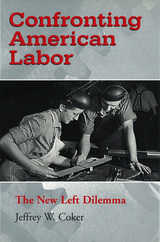 Confronting American Labor: The New Left Dilemma
Jeffrey W. Coker
University of Missouri Press, 2002
Confronting American Labor traces the development of the American left, from the Depression era through the Cold War, by examining four representative intellectuals who grappled with the difficult question of labor’s role in society. Since the time of Marx, leftists have raised over and over the question of how an intelligentsia might participate in a movement carried out by the working class. Their modus operandi was to champion those who suffered injustice at the hands of the powerful. From the late nineteenth through much of the twentieth century, this meant a focus on the industrial worker.
The Great Depression was a time of remarkable consensus among leftist intellectuals, who often interpreted worker militancy as the harbinger of impending radical change. While most Americans waited out the crisis, listening to the assurances of President Franklin D. Roosevelt, the Marxian left was convinced that the crisis was systemic. Intellectuals who came of age during the Depression developed the view that the labor movement in America was to be the organizing base for a proletariat. Moreover, many came from working-class backgrounds that contributed to their support of labor.
World War II and the resultant economic recovery shattered this coherence on the left. How did radicals opposed to capitalism deal with a labor movement that was very successful in terms of membership and power but clearly capitalist in its orientation? Coker describes the marked ambivalence and confusion of the intellectual left in the postwar years—a period of frustration brought on by a misreading of labor militancy during the 1930s and an unsuccessful search for a radical proletarian movement. The result was a politically and intellectually weakened left for decades to come.
Confronting American Labor examines four individuals who represent a cross section of postwar radicalism. Each came of age on the socialist left, expecting that an anticapitalist movement would emerge from the ranks of labor. Seymour Martin Lipset and C. Wright Mills were professional sociologists. Sidney Lens spent his early life working within the labor movement before becoming a political commentator for a variety of leftist magazines and journals in the postwar era. Historian Herbert Gutman helped to create a “new labor history” that reflected broader transformations within the intellectual left. In tracing their various approaches to the problem of labor, Confronting American Labor explores the diverse nature of the postwar left. This important work will be of value to anyone interested in labor, class, and American thought.
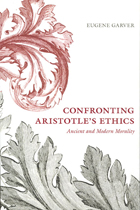 Confronting Aristotle's Ethics: Ancient and Modern Morality
Eugene Garver
University of Chicago Press, 2006 What is the good life? Posing this question today would likely elicit very different answers. Some might say that the good life means doing good—improving one’s community and the lives of others. Others might respond that it means doing well—cultivating one’s own abilities in a meaningful way. But for Aristotle these two distinct ideas—doing good and doing well—were one and the same and could be realized in a single life. In Confronting Aristotle’s Ethics, Eugene Garver examines how we can draw this conclusion from Aristotle's works, while also studying how this conception of the good life relates to contemporary ideas of morality.
The key to Aristotle’s views on ethics, argues Garver, lies in the Metaphysics or, more specifically, in his thoughts on activities, actions, and capacities. For Aristotle, Garver shows, it is only possible to be truly active when acting for the common good, and it is only possible to be truly happy when active to the extent of one’s own powers. But does this mean we should aspire to Aristotle’s impossibly demanding vision of the good life? In a word, no. Garver stresses the enormous gap between life in Aristotle’s time and ours. As a result, this bookwill be a welcome rumination on not only Aristotle, but the relationship between the individual and society in everyday life.
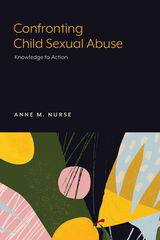 Confronting Child Sexual Abuse: Knowledge to Action
Anne M. Nurse
Lever Press, 2020 Most people get information about child sexual abuse from media coverage, social movements, or conversations with family and friends. Confronting Child Sexual Abuse describes how these forces shape our views of victims and offenders, while also providing an in-depth look at prevention efforts and current research. Sociologist Anne Nurse has synthesized studies spanning the fields of psychology, sociology, communications, criminology, and political science to produce this nuanced, accessible, and up-to-date account. Topics include the prevalence of abuse, the impact of abuse on victims and families, offender characteristics, abuse in institutions, and the efficacy of treatments. Written for people who care for kids, for students considering careers in criminal justice or human services, and for anyone seeking information about this devastating issue, Nurse’s book offers new public policy ideas as well as practical suggestions on how to engage in prevention work. Interactive links to studies, videos, and podcasts connect readers to further resources.
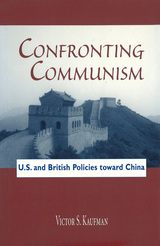 Confronting Communism: U.S. and British Policies toward China
Victor S. Kaufman
University of Missouri Press, 2001
In Confronting Communism, Victor S. Kaufman examines how the United States and Great Britain were able to overcome serious disagreements over their respective approaches toward Communist China. Providing new insight into the workings of alliance politics, specifically the politics of the Anglo- American alliance, the book covers the period from 1948—a year before China became an area of contention between London and Washington—through twenty years of division to the gradual resolution of Anglo-American divergences over the People's Republic of China beginning in the mid-1960s. It ends in 1972, the year of President Richard Nixon's historic visit to the People's Republic, and also the year that Kaufman sees as bringing an end to the Anglo-American differences over China.
Kaufman traces the intricate and subtle pressures each ally faced in determining how to approach Beijing. The British aspect is of particular interest because Britain viewed itself as being within "three circles": Western Europe, the Atlantic alliance, and the Commonwealth. Important as well to British policy with respect to China was the concern about being dragged into another Korean-style conflict. The impact of decisions on these "circles," as well as the fear of another war, appeared time and again in Britain's decision making.
Kaufman shows how the alliance avoided division over China largely because Britain did the majority of the compromising. Reliant upon the United States militarily and financially, most U.K. officials made concessions to their Washington counterparts. Readers of Confronting Communism will come away with a better understanding of alliance politics. They will learn that such decision making, for both Great Britain and the United States, was a highly complex process, one that posed serious challenges to the Anglo-American alliance. Despite those challenges, accord between London and Washington prevailed.
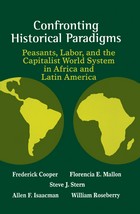 Confronting Historical Paradigms: Peasants, Labor, And The Capitalist World System
Frederick Cooper
University of Wisconsin Press, 1993 Confronting Historical Paradigms argues that confrontation with major paradigms of world history has marked the fields of African and Latin American history during the last quarter-century, and that the process has dramatically restructured historical and theoretical understanding of peasantries, labor, and the capitalist world system. Moreover, it maintains, the intellectual reverberations within and across the African and Latin American fields constitute a challenging and underappreciated counterpoint to laments that contemporary historical knowledge has suffered a splintering so extreme that it undermines larger dialogue and meaning.
The authors, in their substantive essays, synthesize, order, and evaluate the significance of the enormous resonating literatures that have come to exist for Africa and Latin America on the themes of the capitalist world system, labor, and peasantries. They historicize these literatures by analyzing an entire cycle of critical dialogue and confrontation with historical paradigms and the professional upheavals that accompanied them. They review the initial confrontations with frameworks of historical knowledge that erupted in the 1960s and the early 1970s; the emergence of new “dissident” paradigms; the outpouring of subsequent scholarship on peasants, labor, and capitalism that began to unravel the newly proposed paradigms by the 1980s and 1990s; and the outlines of the new interpretive frameworks that tended to displace both the “traditional” and “early dissident” paradigms. They also suggest possible outlines of a new cycle of “Third World” confrontations with paradigm, anchored in themes such as gender and ethnicity.
Confronting Historical Paradigms employs a historicized awareness of intellectual networks, conversations, and history–theory dialogues. The result is a critical analysis and synthetic presentation of substantive advances that have preoccupied scholarship on Africa and Latin America in recent decades and a powerful challenge to notions that “new” fields of history have ended up destroying intellectual coherence and community.
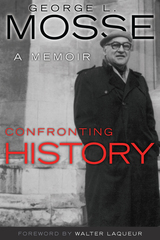 Confronting History: A Memoir
George L. Mosse; Foreword by Walter Laqueur
University of Wisconsin Press, 2000 Just two weeks before his death in January 1999, George L. Mosse, one of the great American historians, finished writing his memoir, a fascinating and fluent account of a remarkable life that spanned three continents and many of the major events of the twentieth century.
Confronting History describes Mosse's opulent childhood in Weimar Berlin; his exile in Paris and England, including boarding school and study at Cambridge University; his second exile in the U.S. at Haverford, Harvard, Iowa, and Wisconsin; and his extended stays in London and Jerusalem. Mosse discusses being a Jew and his attachment to Israel and Zionism, and he addresses his gayness, his coming out, and his growing scholarly interest in issues of sexuality. This touching memoir—told with the clarity, passion, and verve that entranced thousands of Mosse's students—is guided in part by his belief that "what man is, only history tells" and, most of all, by the importance of finding one's self through the pursuit of truth and through an honest and unflinching analysis of one's place in the context of the times.
Confronting Leviathan: Mozambique Since Independence
Margaret Hall
Ohio University Press, 1997 Confronting Leviathan describes Mozambique’s attempt to construct a socialist society in one African country on the back of an anti-colonial struggle for national independence. In explaining the failure of this effort the authors suggest reasons why the socialist vision of the ruling party, Frelimo, lacked resonance with Mozambican society. They also document in detail South Africa’s attempts to destabilize the country, even to the extent of sponsoring the Renamo insurgents. The dynamics of that insurgency and its roots in Mozambican society are examined as well as the process of negotiation that brought it to a close. Finally the authors analyze the more recent attempt to construct a liberal capitalist society in Mozambique. From their findings it appears that this may prove no easier than the construction of socialism.
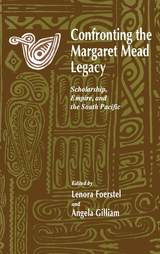 Confronting Margaret Mead: Scholarship, Empire, and the South Pacific
edited by Lenora Foerstel and Angela Gilliam
Temple University Press, 1994 "...valuable information, ideas, and contrasts."
--Choice
The legendary Margaret Mead changed Americans' views of themselves by relating information collected from remote peoples to our society--a society that she did not consider necessarily to be the pinnacle of human development. However, Mead and her followers have been criticized for promulgating sensationalized and inaccurate images of Melanesian societies, including savagery, cannibalism, and wanton sexuality. This book deals with the consequences of such Western condescension.
Destined to be highly controversial, this book for the first time brings a multicultural outlook to bear on Margaret Mead, scrutinizing her role and impact on Western anthropology, colonialism, and strategic and business interests in the South Pacific. The contributors, most of them avowedly activist supporters of the concept of a nuclear-free and independent Pacific, include Warilea Iamo, Papua New Guinea's first anthropologist; John D. Waiko, Director of the New Guinea Institute of Applied Social and Economic Research; Nahau Rooney, the daughter of one of Mead's informants, and; Susanna Ounei, a leader of a New Caledonian independence front.
"This book is a remarkable portrait of a scholar and a field, both fierce and fair. The conjecture of perspectives--ethnography and empire, personal history and public practice, voices from the Pacific as well as the United States--makes a document important for assessing anthropology, both past and future."
--Dell Hymes, University of Virginia, and editor of Reinventing Anthropology
"Mead's attitude toward and activities in relation to her country's foreign and military policies are under scrutiny here, and so is her relationship with the subjects of her research. Such critical assessment of leading scholars is crucial to improvement of academic research and scholastic work and building trust, confidence, and good relations among poe0ples of the world."
--Amelia Rokotuivuna, Young Women's Christian Association, Fiji, and former Chair of the Nuclear-Free Pacific Conference
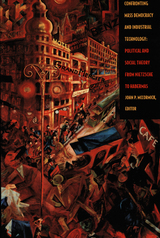 Confronting Mass Democracy and Industrial Technology : Political and Social Theory from Nietzsche to Habermas
John P. McCormick, ed.
Duke University Press, 2002 With a groundbreaking, interdisciplinary approach to German political and social theory, Confronting Mass Democracy and Industrial Technology provides fresh insight into the thought of many of the most influential intellectual figures of the twentieth century. Its essays detail the manner in which a wide range of German intellectuals grappled with the ramifications and implications of democracy, technology, knowledge, and control from the late Kaisserreich to the Weimar Republic, from the Third Reich and the Federal Republic through recently unified Germany. Scholars representing the fields of political science, philosophy, history, law, literature, and cultural studies devote essays to the work of Nietzsche, Weber, Heidegger, Lukács, Schmitt, Marcuse, Adorno, and Habermas. They also discuss the writings of such figures as Brecht and Freud, who are not primarily thought of as political theorists, and explore the thought of Helmut Plessner and reformist theorists from East Germany who have been little studied in the English language. In the process of debating the nature and responsibilities of the modern state in an era of mass politics, unparalleled military technology, capacity for surveillance, and global media presence, the contributors question whether technology is best understood as an instrument of human design and collective control or as an autonomous entity that not only has a will and life of its own but one that forms the very fabric of modern humanity. Contributors. Seyla Benhabib, Richard J. Bernstein, Peter C. Caldwell, Richard Dienst, David Dyzenhaus, Andrew Feenberg, Nancy S. Love, John P. McCormick, Jan-Werner Müller, Gia Pascarelli, William E. Scheuerman, Steven B. Smith, Tracy B. Strong, Richard Wolin
 Confronting Poverty: Prescriptions for Change
Sheldon H. Danziger
Harvard University Press, 1994 Why is there so much poverty in America in the 1990s? What can be done to reduce it? In this book the leading experts review three decades of research on the nature, causes, and consequences of poverty, and prescribe an antipoverty agenda for the next decade. The authors document trends in poverty and income inequality, review government programs and policies, and analyze the public’s complicated attitudes concerning these policies. They discuss the persistence and inter-generational transmission of poverty, the extent of welfare dependence, and the emergence of an urban underclass.
Confronting Poverty proposes thoughtful reforms in employment and training, child support, health care, education, welfare, immigration, and urban policies, all crafted from the successes, as well as the failures, of policies over the past three decades. Although antipoverty efforts have been frustrated by slow economic growth, rising inequality, and changes in family structure, the authors offer insightful proposals that will help us resolve the American paradox of “poverty amidst plenty.”
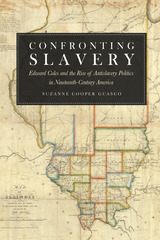 Confronting Slavery: Edward Coles and the Rise of Antislavery Politics in Nineteenth-Century America
Suzanne Cooper Guasco
Northern Illinois University Press, 2013
Edward Coles, who lived from 1786-1868, is most often remembered for his antislavery correspondence with Thomas Jefferson in 1814, freeing his slaves in 1819, and leading the campaign against the legalization of slavery in Illinois during the 1823-24 convention contest.
In this new full-length biography Suzanne Cooper Guasco demonstrates for the first time how Edward Coles continued to confront slavery for nearly forty years after his time in Illinois. Not only did he attempt to shape the slavery debates in Virginia immediately before and after Nat Turner’s rebellion, he also consistently entered national political discussions about slavery throughout the 1830s, 40s, and 50s. On each occasion Coles promoted a vision of the nation that combined a celebration of America’s antislavery past with an endorsement of free labor ideology and colonization, a broad appeal that was designed to mollify his fellow-countrymen’s sense of economic self-interest and virulent anti-black prejudice. As Cooper Guasco persuasively shows, Coles’s antislavery nationalism, first crafted in Illinois in the 1820s, became the foundation of the Republican Party platform and ultimately contributed to the destruction of slavery.
By exploring his entire life, readers come to see Edward Coles as a vital link between the unfulfilled antislavery sensibility of men like Thomas Jefferson and the pragmatic antislavery politics of Abraham Lincoln. In Edward Coles’ life-long confrontation with slavery, as well, we witness the rise of antislavery politics in nineteenth-century America and come to understand the central role politics played in the fight against slavery.
 Confronting Suburban Decline: Strategic Planning For Metropolitan Renewal
William H. Lucy and David L. Phillips
Island Press, 2000 Sprawling commercial and residential development in outer suburbs and exurban areas has for a number of years masked increasingly severe socioeconomic problems in suburban America. In recent decades, income declines, crime increases, and tax base erosion have affected many suburbs to an extent previously seen only in central cities.In Confronting Suburban Decline, William H. Lucy and David L. Phillips examine conditions and trends in cities and suburbs since 1960, arguing that beginning in the 1980s, the United States entered a "post-suburban" era of declining suburbs with maturation of communities accompanied by large-scale deterioration. The authors examine: why suburban decline has become widespread how the "tyranny of easy development decisions" often results in new housing being built outside of areas that people prefer how strategic planning can help assess dangers how some suburbs have stabilized or revived how interactions between residential mobility and the age, size, and location of housing can help policy makers anticipate dangers and opportunities facing neighborhoods and jurisdictions Making the case that a high quality natural and built environment is key to achieving economic stability, the authors set forth a series of policy recommendations with federal, state, regional, and local dimensions that can help contribute to that goal.In-depth case studies are provided of Richmond, Virginia and Washington, D.C., along with examples from Minnesota, Oregon, Maryland, Tennessee, and other locations. In addition, the book offers information and statistics on income, population, and racial transitions in 554 suburbs in the nation's twenty-four largest metropolitan areas.Confronting Suburban Decline provides a detailed look at the causes of and responses to urban and suburban decline. Planners and policymakers as well as students and researchers involved with issues of land use, economic development, regional planning, community development, or intergovernmental relations will find it a valuable resource.
Confronting Technopoly: Charting a Course towards Human Survival
Edited by Phil Rose
Intellect Books, 2017 In 1992, Neil Postman presciently coined the term “technopoly” to refer to “the surrender of culture to technology.” This book brings together a number of contributors from different disciplinary perspectives to analyze technopoly both as a concept and as it is seen and understood in contemporary society. Contributors present both analysis of and strategies for managing socio-technical conflict, and they also open up a number of fruitful new lines of thought around emerging technological, social, and even psychological forms.
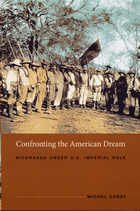 Confronting the American Dream: Nicaragua under U.S. Imperial Rule
Michel Gobat
Duke University Press, 2005 Michel Gobat deftly interweaves political, economic, cultural, and diplomatic history to analyze the reactions of Nicaraguans to U.S. intervention in their country from the heyday of Manifest Destiny in the mid–nineteenth century through the U.S. occupation of 1912–33. Drawing on extensive research in Nicaraguan and U.S. archives, Gobat accounts for two seeming paradoxes that have long eluded historians of Latin America: that Nicaraguans so strongly embraced U.S. political, economic, and cultural forms to defend their own nationality against U.S. imposition and that the country’s wealthiest and most Americanized elites were transformed from leading supporters of U.S. imperial rule into some of its greatest opponents. Gobat focuses primarily on the reactions of the elites to Americanization, because the power and identity of these Nicaraguans were the most significantly affected by U.S. imperial rule. He describes their adoption of aspects of “the American way of life” in the mid–nineteenth century as strategic rather than wholesale. Chronicling the U.S. occupation of 1912–33, he argues that the anti-American turn of Nicaragua’s most Americanized oligarchs stemmed largely from the efforts of U.S. bankers, marines, and missionaries to spread their own version of the American dream. In part, the oligarchs’ reversal reflected their anguish over the 1920s rise of Protestantism, the “modern woman,” and other “vices of modernity” emanating from the United States. But it also responded to the unintended ways that U.S. modernization efforts enabled peasants to weaken landlord power. Gobat demonstrates that the U.S. occupation so profoundly affected Nicaragua that it helped engender the Sandino Rebellion of 1927–33, the Somoza dictatorship of 1936–79, and the Sandinista Revolution of 1979–90.
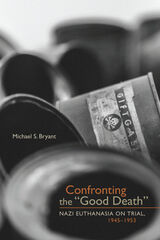 Confronting the "Good Death": Nazi Euthanasia on Trial, 1945-1953
Michael S. Bryant
University Press of Colorado, 2022 Years before Hitler unleashed the “Final Solution” to annihilate European Jews, he began a lesser-known campaign to eradicate the mentally ill, which facilitated the gassing and lethal injection of as many as 270,000 people and set a precedent for the mass murder of civilians. In Confronting the “Good Death” Michael Bryant analyzes the U.S. government and West German judiciary’s attempt to punish the euthanasia killers after the war. The first author to address the impact of geopolitics on the courts’ representation of Nazi euthanasia, Bryant argues that international power relationships wreaked havoc on the prosecutions. Drawing on primary sources, this provocative investigation of the Nazi campaign against the mentally ill and the postwar quest for justice will interest general readers and provide critical information for scholars of Holocaust studies, legal history, and human rights. Support for this publication was generously provided by the Eugene M. Kayden Fund at the University of Colorado.
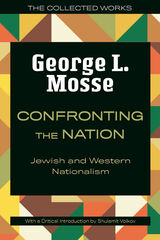 Confronting the Nation: Jewish and Western Nationalism
George L. Mosse
University of Wisconsin Press, 2024 Confronting the Nation brings together twelve of celebrated historian George L. Mosse’s most important essays to explore competing forms of European nationalism in the nineteenth and twentieth centuries. Mosse coins the term “civic religion” to describe how nationalism, especially in Germany and France, simultaneously inspired and disciplined the populace through the use of rituals and symbols. The definition of citizenship shaped by this nationalism, however, frequently excluded Jews, who were stereotyped as outsiders who sought to undermine the national community. With keen attention to liberal forms of nationalism, Mosse examines the clash of aspirational visions of an inclusive nation against cultural registers of nativist political ideologies.
Mosse considers a broad range of topics, from Nazi book burnings to Americans’ search for unifying national symbols during the Great Depression, exploring how the development of particular modes of art, architecture, and mass movements served nationalist agendas by dictating who was included in the image of the nation. These essays retain their significance today in their examination of the cultural and social implications of contemporary nationalism. A new critical introduction by Shulamit Volkov, professor emerita of history at Tel Aviv University, situates Mosse’s analysis within its historiographical context.
Confronting Theory: The Psychology of Cultural Studies
Philip Bell
Intellect Books, 2010 Confronting Theory presents a critique of what has come to be known as theory in cross-disciplinary humanities education. Rather than dismissing theory writing as pretentious and abstract, Confronting Theory examines its principal concepts from the perspective of academic psychology and shows that although many of these analyses sound like revolutionary psychological theory, few, if any, have empirical implications that students can evaluate. By considering the educational implications of cultural theory, Confronting Theory will empower students with arguments, not just opinions, about the increasingly idealist and irrelevant anti-realist curricula they confront in their humanities education in today’s universities.
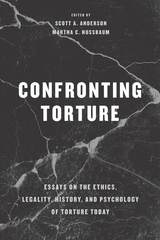 Confronting Torture: Essays on the Ethics, Legality, History, and Psychology of Torture Today
Edited by Scott A. Anderson and Martha C. Nussbaum
University of Chicago Press, 2018 Torture has lately become front page news, featured in popular movies and TV shows, and a topic of intense public debate. It grips our imagination, in part because torturing someone seems to be an unthinkable breach of humanity—theirs and ours. And yet, when confronted with horrendous events in war, or the prospect of catastrophic damage to one’s own country, many come to wonder whether we can really afford to abstain entirely from torture. Before trying to tackle this dilemma, though, we need to see torture as a multifaceted problem with a long history and numerous ethical and legal aspects.
Confronting Torture offers a multidisciplinary investigation of this wrenching topic. Editors Scott A. Anderson and Martha C. Nussbaum bring together a diversity of scholars to grapple with many of torture’s complexities, including: How should we understand the impetus to use torture? Why does torture stand out as a particularly heinous means of war-fighting? Are there any sound justifications for the use of torture? How does torture affect the societies that employ it? And how can we develop ethical or political bulwarks to prevent its use? The essays here resist the temptation to oversimplify torture, drawing together work from scholars in psychology, history, sociology, law, and philosophy, deepening and broadening our grasp of the subject. Now, more than ever, torture is something we must think about; this important book offers a diversity of timely, constructive responses on this resurgent and controversial subject.
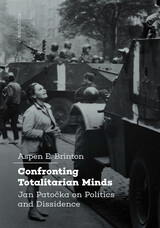 Confronting Totalitarian Minds: Jan Patocka on Politics and Dissidence
Aspen Brinton
Karolinum Press, 2020 Jan Patočka was a Czech philosopher who not only lived through the turbulent politics of twentieth-century Central Europe, but he shaped his intellectual contributions in response to that tumult. One of the last students of Edmund Husserl and Martin Heidegger, he was a philosophical inspiration to Václav Havel and other dissidents who confronted the Soviet regimes before 1989, as well as being actively involved in authoring and enacting Charter 77 in Czechoslovakia. He died in 1977 from medical complications resulting from interrogations of the secret police, his political involvement cut short by an untimely death.
Confronting Totalitarian Minds examines his legacy along with several contemporary applications of his ideas about dissidence, solidarity, and the human being’s existential confrontation with unjust politics. Aspen Briton puts Patočka’s ideas about dissidence, citizen mobilization, and civic responsibility in conversation with those of notable world historical figures like Mohandas Gandhi, expanding the current possibilities of comparative political theory. In adding a fresh voice to contemporary conversations on transcending injustice, Confronting Totalitarian Minds seeks to educate a wider audience about this philosopher’s continued relevance to political dissidents across the world.
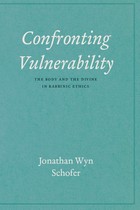 Confronting Vulnerability: The Body and the Divine in Rabbinic Ethics
Jonathan Wyn Schofer
University of Chicago Press, 2010 While imparting their ethical lessons, rabbinic texts often employ vivid images of death, aging, hunger, defecation, persecution, and drought. In Confronting Vulnerability, Jonathan Wyn Schofer carefully examines these texts to find out why their creators thought that human vulnerability was such a crucial tool for instructing students in the development of exemplary behavior.
These rabbinic texts uphold virtues such as wisdom and compassion, propound ideal ways of responding to others in need, and describe the details of etiquette. Schofer demonstrates that these pedagogical goals were achieved through reminders that one’s time on earth is limited and that God is the ultimate master of the world. Consciousness of death and of divine accounting guide students to live better lives in the present. Schofer’s analysis teaches us much about rabbinic pedagogy in late antiquity and also provides inspiration for students of contemporary ethics. Despite their cultural distance, these rabbinic texts challenge us to develop theories and practices that properly address our frailties rather than denying them.
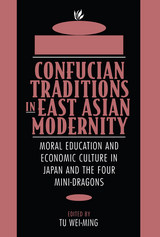 Confucian Traditions in East Asian Modernity: Moral Education and Economic Culture in Japan and the Four Mini-Dragons
Tu Wei-ming
Harvard University Press, 1996 How Confucian traditions have shaped styles of being modern in Japan, South Korea, Taiwan, Hong Kong, and Singapore presents a particular challenge to the intellectual community. Explorations of Confucian network capitalism, meritocratic democracy, and liberal education have practical implications for a sense of self, community, economy, and polity.
Seventeen scholars, of varying fields of study, here bring their differing perspectives to a consideration of the Confucian role in industrial East Asia. Confucian concerns such as self-cultivation, regulation of the family, social civility, moral education, well-being of the people, governance of the state, and universal peace provide a general framework for the study. The Confucian Problematik—how a fiduciary community can come into being through exemplary teaching and moral transformation—underlies much of the discussion. The contributors question all unexamined assumptions about the rise of industrial East Asia, at the same time exploring the ideas, norms, and values that underlie the moral fabric of East Asian societies.
Is Confucian ethics a common discourse in industrial East Asia? The answer varies according to academic discipline, regional specialization, and personal judgment. Although there are conflicting interpretations and diverging perspectives, this study represents the current thinking of some of the most sophisticated minds on this vital and intriguing subject.
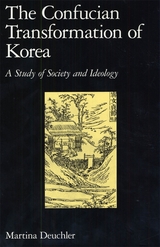 The Confucian Transformation of Korea: A Study of Society and Ideology
Martina Deuchler
Harvard University Press Legislation to change Korean society along Confucian lines began at the founding of the Chosŏn dynasty in 1392 and had apparently achieved its purpose by the mid seventeenth century. Until this important new study, however, the nature of Koryŏ society, the stresses induced by the new legislation, and society’s resistance to the Neo-Confucian changes imposed by the Chosŏn elite have remained largely unexplored.
To explain which aspects of life in Koryŏ came under attack and why, Martina Deuchler draws on social anthropology to examine ancestor worship, mourning, inheritance, marriage, the position of women, and the formation of descent groups. To examine how Neo-Confucian ideology could become an effective instrument for altering basic aspects of Koryŏ life, she traces shifts in political and social power as well as the cumulative effect of changes over time. What emerges is a subtle analysis of Chosŏn Korean social and ideological history.
Confucianism and Ecology: The Interrelation of Heaven, Earth, and Humans
Mary Evelyn Tucker
Harvard University Press, 1998 Confucianism demonstrates a remarkable wealth of resources for rethinking human-earth relations. This second volume in the series on religions of the world and the environment includes sixteen essays that address the ecological crisis and the question of Confucianism from three perspectives: the historical describes this East Asian tradition's views of nature, social ethics, and cosmology, which may shed light on contemporary problems; a dialogical approach links Confucianism to other philosophic and religious traditions; an examination of engaged Confucianism looks at its involvement in concrete ecological issues.
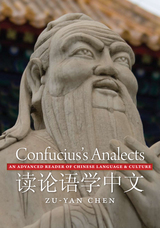 Confucius's Analects: An Advanced Reader of Chinese Language and Culture
Zu-yan Chen
Georgetown University Press, 2010 Confucius’s Analects is an innovative textbook for teaching and learning Chinese language and culture at the advanced level. It combines classical and modern Chinese language skills, Chinese culture, and expository and narrative writing practice. Confucius's Analects is a central work of East Asian intellectual history that permeates Chinese and East Asian thought and values today. Students seeking to develop advanced language proficiency need to be familiar with the Analects in order to understand the wealth of literary allusions that appear in modern as well as classical Chinese writings. A selection of 82 passages, which are all educational and practical for present-day students, are grouped thematically into four parts—knowledge, morality, wisdom, and government—and covers Confucian teachings from personal cultivation to social contribution. Features:
• A quadrupled text system includes quotations from the Analects, modern Chinese translations of these passages, short essays of exegesis that elaborate on the major points, and historical Chinese stories that illustrate the theme
• Vocabulary expansion sections show how monosyllabic classical words have each expanded into ten selected modern bisyllabic words
• Almost 300 idioms and corresponding exercises teach their rhetorical value and provide cultural exposure
• Sections on function words help students to understand classical Chinese
• Extensive writing practice in each chapter includes debate, composition, storytelling, and topical research—all requiring internet research
• Audio files of recitation of the Analects passages by a native speaker are available online for free Designed for students who have studied Chinese for three years in college or an equivalent, this textbook is ideal for students of advanced Chinese, classical Chinese, and Chinese culture. Knowledge of classical Chinese is not a prerequisite.
 Confusion: A Study in the Theory of Knowledge
Joseph L. Camp Jr.
Harvard University Press, 2002 Everyone has mistaken one thing for another, such as a stranger for an acquaintance. A person who has mistaken two things, Joseph L. Camp argues, even on a massive scale, is still capable of logical thought. In order to make that idea precise, one needs a logic of confused thought that is blind to the distinction between the objects that have been confused. Confused thought and language cannot be characterized as true or false even though reasoning conducted in such language can be classified as valid or invalid.
To the extent that philosophers have addressed this issue at all, they take it for granted that confusion is a kind of ambiguity. Camp rejects this notion; his fundamental claim is that confusion is not a mental state. To attribute confusion to someone is to take up a paternalistic stance in evaluating his reasoning. Camp proposes a novel characterization of confusion, and then demonstrates its fruitfulness with several applications in the history of philosophy and the history of science.
 Congenital Malformations of the Heart
Helen B. Taussig
Harvard University Press Knowledge has increased so greatly since the first appearance of this famous book that the author not only has extensively revised the earlier text, but has added to it considerably. Several new chapter include material on pulmonary hypertension, the Taussig-Bing malformation, defective development of the right ventricle with an intact ventricular septum, and aortic septal defect. The various types of septal defect are discussed as regards both the clinical syndrome and their operability.
An addition to the revised edition is the Visual Index, designed to show at a glance in pictorial form the essential features of the various malformations; the age, sex, and activity of the patient; the size and shape of the heart; the characteristic murmurs; and the electrocardiogram. Dr. Taussig’s approach is clinical throughout, in order to explain clearly the way the heart functions and to enable the physician to reason logically about a malformation. The author’s intention is to aide the physician in making the decisions which are his responsibility—to recommend operation when necessary and to advise against it when it is unlikely to benefit.
Volume I is designed to orient the student and the general practitioner in the basic methods of approach for the diagnosis of congenital malformations of the heart. Although the book emphasizes the information derived from physical examination, X-ray, and fluoroscopy, the angiocardiograms characteristic of the various anomalies are the strong new feature of this volume. The chapter on medical care gives basic information in regard to the treatment of patients with congenital malformations of the heart.
Volume II is designed for the paediatrician, the consultant physician, and the cardiologist, and gives detailed information on each of the specific malformations. The book is heavily illustrated with X-rays and electrocardiograms, which are all based on proved cases. Diagrams of X-rays are inserted to clarify the changes in the contour of the heart. Circulatory diagrams of all the malformations of the heart show the basic changes in the circulation caused by each of them. Illustrations of the anatomical abnormalities have been drawn as accurately as possible from actual specimens.
 Congenital Malformations of the Heart
Helen B. Taussig
Harvard University Press Knowledge has increased so greatly since the first appearance of this famous book that the author not only has extensively revised the earlier text, but has added to it considerably. Several new chapter include material on pulmonary hypertension, the Taussig-Bing malformation, defective development of the right ventricle with an intact ventricular septum, and aortic septal defect. The various types of septal defect are discussed as regards both the clinical syndrome and their operability.
An addition to the revised edition is the Visual Index, designed to show at a glance in pictorial form the essential features of the various malformations; the age, sex, and activity of the patient; the size and shape of the heart; the characteristic murmurs; and the electrocardiogram. Dr. Taussig’s approach is clinical throughout, in order to explain clearly the way the heart functions and to enable the physician to reason logically about a malformation. The author’s intention is to aide the physician in making the decisions which are his responsibility—to recommend operation when necessary and to advise against it when it is unlikely to benefit.
Volume I is designed to orient the student and the general practitioner in the basic methods of approach for the diagnosis of congenital malformations of the heart. Although the book emphasizes the information derived from physical examination, X-ray, and fluoroscopy, the angiocardiograms characteristic of the various anomalies are the strong new feature of this volume. The chapter on medical care gives basic information in regard to the treatment of patients with congenital malformations of the heart.
Volume II is designed for the paediatrician, the consultant physician, and the cardiologist, and gives detailed information on each of the specific malformations. The book is heavily illustrated with X-rays and electrocardiograms, which are all based on proved cases. Diagrams of X-rays are inserted to clarify the changes in the contour of the heart. Circulatory diagrams of all the malformations of the heart show the basic changes in the circulation caused by each of them. Illustrations of the anatomical abnormalities have been drawn as accurately as possible from actual specimens.
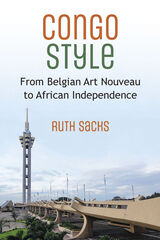 Congo Style: From Belgian Art Nouveau to African Independence
Ruth Sacks
University of Michigan Press, 2023 Congo Style presents a postcolonial approach to discussing the visual culture of two now-notorious regimes: King Leopold II’s Congo Colony and the state sites of Mobutu Sese Seko’s totalitarian Zaïre. Readers are brought into the living remains of sites once made up of ambitious modernist architecture and art in Kinshasa, Democratic Republic of the Congo. From the total artworks of Art Nouveau to the aggrandizing sites of post-independence Kinshasa, Congo Style investigates the experiential qualities of man-made environments intended to entertain, delight, seduce, and impress. In her study of visual culture, Ruth Sacks sets out to reinstate the compelling wonder of nationalist architecture from Kinshasa’s post-independence era, such as the Tower of the Exchange (1974), Gécamines Tower (1977), and the artworks and exhibitions that accompanied them. While exploring post-independence nation-building, this book examines how the underlying ideology of Belgian Art Nouveau, a celebrated movement in Belgium, led to the dominating early colonial settler buildings of the ABC Hotels (circa 1908 –13). Congo Style combines Sacks’s practice as a visual artist and her academic scholarship to provide an original study of early colonial and independence-era modernist sites in their African context.
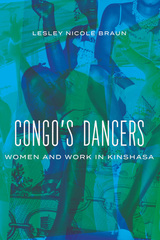 Congo's Dancers: Women and Work in Kinshasa
Lesley Nicole Braun
University of Wisconsin Press, 2023 Dance music plays a central role in the cultural, social, religious, and family lives of the people of the Democratic Republic of the Congo. Among the various genres popular in the capital city of Kinshasa, Congolese rumba occupies a special place and can be counted as one of the DRC’s most well-known cultural exports. The public image of rumba was historically dominated by male bandleaders, singers, and musicians. However, with the introduction of the danseuse (professional concert dancer) in the late 1970s, the role of women as cultural, moral, and economic actors came into public prominence and helped further raise Congolese rumba’s international profile.
In Congo’s Dancers, Lesley Nicole Braun uses the prism of the Congolese danseuse to examine the politics of control and the ways in which notions of visibility, virtue, and socio-economic opportunity are interlinked in this urban African context. The work of the danseuse highlights the fact that public visibility is necessary to build the social networks required for economic independence, even as this visibility invites social opprobrium for women. The concert dancer therefore exemplifies many of the challenges that women face in Kinshasa as they navigate the public sphere, and she illustrates the gendered differences of local patronage politics that shape public morality. As an ethnographer, Braun had unusual access to the world she documents, having been invited to participate as a concert dancer herself.
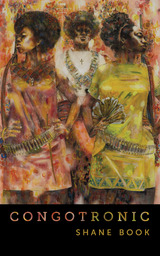 Congotronic
Shane Book
University of Iowa Press, 2014 At once original, strange, funny, and unnerving, Shane Book’s Congotronic takes the reader into unstable territory, where multiple layers of voice, diction, and music collide. Some of these poems have the sparse directness of a kind of bleak prayer; others mingle the earthbound rhythms of hip-hop with the will-to-transcendence of high Romanticism.
Harnessing techniques of the cinematic and audio arts, Book’s poems splice, sample, collage, and jump-cut language from an array of sources, including slave narratives, Western philosophy, hip hop lyrics, and the diaries of plantation owners. In fusing disparate texts, each poem in this collection attempts to create a community in language. Thus, at its core, the project is utopic—or more precisely, to borrow from Duke Ellington—the project is “blutopic.”
The book’s anchoring series contains an apocryphal narrative grounded in the journey of the Middle Passage and an older mythic history from the West African epic of Sundiata. Here elements of Afrofuturism coagulate with an R&B grin as social forces challenge a sense of personhood, prompting free-jazz inflected conversations between the pieces of a shattered, polyvocal self.
Here is a world poet of the Sonic Global South sheathed in a Northern Hemispheric glow suit, high “on Coltrane, on Zeus” but also on the old and new schools of Descartes, M.I.A., Cecil Taylor, Gilbert Ryle, Freud, and Jay Z, among others—or as one poem puts it, the “aural truths.”
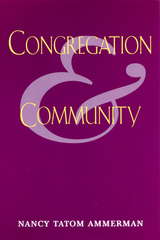 Congregation and Community
Ammerman, Nancy
Rutgers University Press, 1996 Change--in population, economy, and culture--is sweeping through American communities. Corner groceries are stocking new foods. New roads are being built and Main Streets abandoned. Schools have come and gone, and old friends move away as strangers arrive. But in every community, no matter how volatile, religious institutions provide for their members places of moral guidance and spiritual nurture, civic participation, and identity. How do congregations react to significant community change? Why do some religious institutions decline in the face of racial integration while others adapt and grow? How do congregations make sense of economic distress? Do they provide havens from community upheaval or vehicles for change? Congregation and Community is the most comprehensive study to date of congregations in the face of community transformation. Nancy Ammerman and her colleagues include stories of over twenty congregations in nine communities from across the nation, communities with new immigrant populations, growing groups of gays and lesbians, rapid suburbanization, and economic dislocations. With almost half of the nation's population attending religious services each week, it is impossible to understand change in American society without a close look at congregations. Congregation and Community will exist as a standard resource for years to come, and clergy, academics, and general readers alike will benefit from its insights.
The Congregation of Tiron: Monastic Contributions to Trade and Communication in Twelfth-Century France and Britain
Ruth Harwood Cline
Arc Humanities Press, 2019 Tiron was a reformed Benedictine congregation founded ca. 1109 by Bernard of Abbeville. Though little known to medieval and religious historians, this in-depth study shows how it expanded from obscurity in the forests of the Perche to become an international congregation with headquarters in Chartres and Paris and abbeys and priories in France and the British Isles. The congregation become noted for building, crafts, education, and horse-breeding. Tiron preceded the Cistercians in Britain and traded in rising towns, and by 1147 it had a centrally-controlled network of riverine and coastal properties connecting its production hubs with towns and ports.
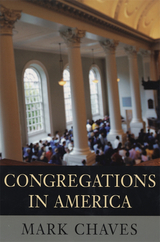 Congregations in America
Mark Chaves
Harvard University Press, 2004 More Americans belong to religious congregations than to any other kind of voluntary association. What these vast numbers amount to--what people are doing in the over 300,000 churches, synagogues, mosques, and temples in the United States--is a question that resonates through every quarter of American society, particularly in these times of "faith-based initiatives," "moral majorities," and militant fundamentalism. And it is a question answered in depth and in detail in Congregations in America.
Drawing on the 1998 National Congregations Study--the first systematic study of its kind--as well as a broad range of quantitative, qualitative, and historical evidence, this book provides a comprehensive overview of the most significant form of collective religious expression in American society: local congregations. Among its more surprising findings, Congregations in America reveals that, despite the media focus on the political and social activities of religious groups, the arts are actually far more central to the workings of congregations. Here we see how, far from emphasizing the pursuit of charity or justice through social services or politics, congregations mainly traffic in ritual, knowledge, and beauty through the cultural activities of worship, religious education, and the arts.
Along with clarifying--and debunking--arguments on both sides of the debate over faith-based initiatives, the information presented here comprises a unique and invaluable resource, answering previously unanswerable questions about the size, nature, make-up, finances, activities, and proclivities of these organizations at the very center of American life.
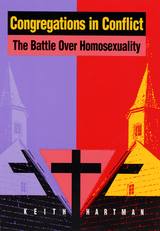 Congregations in Conflict: The Battle over Homosexuality
Hartman, Keith
Rutgers University Press, 1996 A Methodist church puts its minister on trial after he marches in a gay rights parade. A Quaker meeting struggles to decide whether to marry a lesbian couple. An entire congregation is thrown out of the Southern Baptist Convention for deciding that a gay divinity student had a sincere calling to the ministry, and an order of celibate monks comes out of the closet. An Episcopal priest blesses two same-sex relationships--then a closeted gay lawyer leads the charge to have him fired. Homosexuality is the most divisive issue facing churches today. Like the issue of slavery 150 years ago, it is a matter that ignites passionate convictions on both sides, a matter that threatens to turn members of the same faith against each other, to divide congregations, and possibly even to fragment several denominations. Like slavery, it is an issue that calls up basic questions about what it means to be a Christian. How does one know right from wrong? Is the Bible fallible? Do good Christians always follow their church's teachings, or are they allowed to think for themselves on moral issues? And to what source does one finally look to determine what God really wants? While many books have been written analyzing the scriptural and theological dimensions of the conflict, none has yet shown how it is being played out in the pews. Congregations in Conflict examines nine churches that were split by disagreements over gay and lesbian issues, and how the congregations resolved them. Hartman explores in very readable prose how different denominations have handled their conflicts and what it says about the nature of their faith. He shows some churches coming through their struggles stronger and more unified, while others irrevocably split. Most importantly, he illuminates how people with a passionate clash of beliefs can still function together as a community of faith.
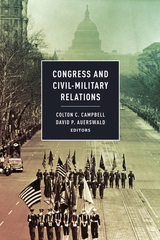 Congress and Civil-Military Relations
Colton C. Campbell and David P. Auerswald, Editors
Georgetown University Press, 2015 While the president is the commander in chief, the US Congress plays a critical and underappreciated role in civil-military relations—the relationship between the armed forces and the civilian leadership that commands it. This unique book edited by Colton C. Campbell and David P. Auerswald will help readers better understand the role of Congress in military affairs and national and international security policy. Contributors include the most experienced scholars in the field as well as practitioners and innovative new voices, all delving into the ways Congress attempts to direct the military. This book explores four tools in particular that play a key role in congressional action: the selection of military officers, delegation of authority to the military, oversight of the military branches, and the establishment of incentives—both positive and negative—to encourage appropriate military behavior. The contributors explore the obstacles and pressures faced by legislators including the necessity of balancing national concerns and local interests, partisan and intraparty differences, budgetary constraints, the military's traditional resistance to change, and an ongoing lack of foreign policy consensus at the national level. Yet, despite the considerable barriers, Congress influences policy on everything from closing bases to drone warfare to acquisitions. A groundbreaking study, Congress and Civil-Military Relations points the way forward in analyzing an overlooked yet fundamental government relationship.
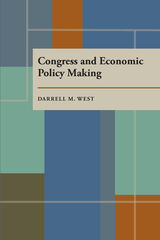 Congress and Economic Policy Making
Darrell M. West
University of Pittsburgh Press, 1987
Economic policymaking has perpetually been one of the central dilemmas facing Congress, leading to huge budget deficits and disagreements among legislators about spending priorities and tax policies.
This book examines congressional decision making on economic policy during the Reagan administration. It looks at legislative actions on Reaganomics, tax reform, and the politics of deficit reduction, and shows the importance of looking not just at the consequences of these decisions but also at the legislative processes that led to them.
Using an “activist-based” approach and previously unexamined data, Darrell West shows that district activists, often more conservative than the public at large, exerted a disproportionate and misleading effect on congressional voting. When this support eventually proved unstable, a more skeptical Congress began to eventually back away from the president's policies. This move had serious consequences for deficit reduction and policy initiation, and also influenced the final shape of the tax reform package adopted in 1986.
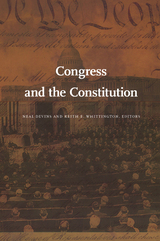 Congress and the Constitution
Neal Devins and Keith E. Whittington, eds.
Duke University Press, 2005 For more than a decade, the U.S. Supreme Court has turned a skeptical eye toward Congress. Distrustful of Congress’s capacity to respect constitutional boundaries, the Court has recently overturned federal legislation at a historically unprecedented rate. This intensified judicial scrutiny highlights the need for increased attention to how Congress approaches constitutional issues. In this important collection, leading scholars in law and political science examine the role of Congress in constitutional interpretation, demonstrating how to better integrate the legislative branch into understandings of constitutional practice. Several contributors offer wide-ranging accounts of the workings of Congress. They look at lawmakers’ attitudes toward Congress’s role as a constitutional interpreter, the offices within Congress that help lawmakers learn about constitutional issues, Congress’s willingness to use its confirmation power to shape constitutional decisions by both the executive and the courts, and the frequency with which congressional committees take constitutional questions into account. Other contributors address congressional deliberation, paying particular attention to whether Congress’s constitutional interpretations are sound. Still others examine how Congress and the courts should respond to one another’s decisions, suggesting how the courts should evaluate Congress’s work and considering how lawmakers respond to Court decisions that strike down federal legislation. While some essayists are inclined to evaluate Congress’s constitutional interpretation positively, others argue that it could be improved and suggest institutional and procedural reforms toward that end. Whatever their conclusions, all of the essays underscore the pervasive and crucial role that Congress plays in shaping the meaning of the Constitution. Contributors. David P. Currie, Neal Devins, William N. Eskridge Jr.. John Ferejohn, Louis Fisher, Elizabeth Garrett, Michael J. Gerhardt, Michael J. Klarman, Bruce G. Peabody, J. Mitchell Pickerill, Barbara Sinclair, Mark Tushnet, Adrian Vermeule, Keith E. Whittington, John C. Yoo
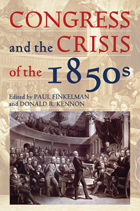 Congress and the Crisis of the 1850s
Paul Finkelman
Ohio University Press, 2011 During the long decade from 1848 to 1861 America was like a train speeding down the track, without an engineer or brakes. The new territories acquired from Mexico had vastly increased the size of the nation, but debate over their status—and more importantly the status of slavery within them—paralyzed the nation. Southerners gained access to the territories and a draconian fugitive slave law in the Compromise of 1850, but this only exacerbated sectional tensions. Virtually all northerners, even those who supported the law because they believed that it would preserve the union, despised being turned into slave catchers. In 1854, in the Kansas-Nebraska Act, Congress repealed the ban on slavery in the remaining unorganized territories. In 1857, in the Dred Scott case, the Supreme Court held that all bans on slavery in the territories were unconstitutional. Meanwhile, northern whites, free blacks, and fugitive slaves resisted the enforcement of the 1850 fugitive slave law. In Congress members carried weapons and Representative Preston Brooks assaulted Senator Charles Sumner with a cane, nearly killing him. This was the decade of the 1850s and these were the issues Congress grappled with. This volume of new essays examines many of these issues, helping us better understand the failure of political leadership in the decade that led to the Civil War.
Contributors
Spencer R. Crew
Paul Finkelman
Matthew Glassman
Amy S. Greenberg
Martin J. Hershock
Michael F. Holt
Brooks D. Simpson
Jenny Wahl
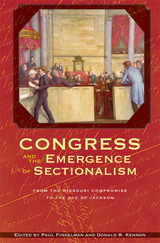 Congress and the Emergence of Sectionalism: From the Missouri Compromise to the Age of Jackson
Paul Finkelman
Ohio University Press, 2008 In 1815 the United States was a proud and confident nation. Its second war with England had come to a successful conclusion, and Americans seemed united as never before. The collapse of the Federalist party left the Jeffersonian Republicans in control of virtually all important governmental offices. This period of harmony—what historians once called the Era of Good Feeling—was not illusory, but it was far from stable. One-party government could not persist for long in a vibrant democracy full of ambitious politicians, and sectional harmony was possible only as long as no one addressed the hard issues: slavery, race, western expansion, and economic development. Congress and the Emergence of Sectionalism: From the Missouri Compromise to the Age of Jackson inaugurates a new series for the United States Capitol Historical Society, one that will focus on issues that led to the secession crisis and the Civil War. This first volume examines controversies surrounding sectionalism and the rise of Jacksonian Democracy, placing these sources of conflict in the context of congressional action in the 1820s and 1830s. The essays in this volume consider the plight of American Indians, sectional strife over banking and commerce, emerging issues involving slavery, and the very nature of American democracy. “It is to be regretted that the rich and powerful too often bend the acts of government to their selfish purposes…. There are no necessary evils in government. Its evils exist only in its abuses. If it would confine itself to equal protection, and, as Heaven does its rains, shower its favors alike on the high and the low, the rich and the poor, it would be an unqualified blessing. In the act before me there seems to be a wide and unnecessary departure from these just principles.”—Andrew Jackson, Veto Message Regarding the Bank of the United States, July 10, 1832 “I consider, then, the power to annul a law of the United States, assumed by one State, incompatible with the existence of the Union, contradicted expressly by the letter of the Constitution, unauthorized by its spirit, inconsistent with every principle on which it was founded, and destructive of the great object for which it was formed.”—Andrew Jackson, Proclamation Regarding Nullification to the People of South Carolina, December 10, 1832
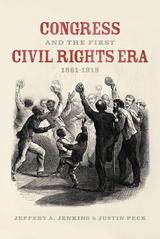 Congress and the First Civil Rights Era, 1861-1918
Jeffery A. Jenkins and Justin Peck
University of Chicago Press, 2021 Civil rights legislation figured prominently in the agenda of Congress during the Civil War and Reconstruction. But as Reconstruction came to an end and discrimination against African Americans in the South became commonplace, civil rights advocates in Congress increasingly shifted to policies desired by white constituents in the North who had grown tired of efforts to legislate equality. In this book, the first of a two-volume set, Jeffery A. Jenkins and Justin Peck explore the rise and fall of civil rights legislation in Congress from 1861 to 1918.
The authors examine in detail how the Republican Party slowly withdrew its support for a meaningful civil rights agenda, as well as how Democrats and Republicans worked together to keep civil rights off the legislative agenda at various points. In doing so, Jenkins and Peck show how legal institutions can be used both to liberate and protect oppressed minorities and to assert the power of the white majority against those same minority groups.
Congress and the Nuclear Freeze: An Inside Look at the Politics of a Mass Movement
Douglas Waller
University of Massachusetts Press, 1987 Early in 1982 a group of lawmakers introduced into both houses of the U.S. Congress a resolution calling on the United States and the Soviet Union to negotiate a mutual and verifiable halt to the nuclear arms race. It was a bold measure and one that sparked intense debate between members of Congress and the White House over the conduct of U.S. arms control policy. This book is an inside account of that legislative battle, told by a congressional aide who was in the thick of it.
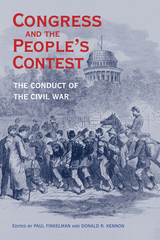 Congress and the People’s Contest: The Conduct of the Civil War
Paul Finkelman
Ohio University Press, 2018 The American Civil War was the first military conflict in history to be fought with railroads moving troops and the telegraph connecting civilian leadership to commanders in the field. New developments arose at a moment’s notice. As a result, the young nation’s political structure and culture often struggled to keep up. When war began, Congress was not even in session. By the time it met, the government had mobilized over 100,000 soldiers, battles had been fought, casualties had been taken, some civilians had violently opposed the war effort, and emancipation was under way. This set the stage for Congress to play catch-up for much of the conflict. The result was an ongoing race to pass new laws and set policies. Throughout it all, Congress had to answer to a fractured and demanding public. In addition, Congress, no longer paralyzed by large numbers of Southern slave owners, moved forward on progressive economic and social issues—such as the transcontinental railroad and the land grant college act—which could not previously have been passed. In Congress and the People’s Contest, Paul Finkelman and Donald R. Kennon have assembled some of the nation’s finest scholars of American history and law to evaluate the interactions between Congress and the American people as they navigated a cataclysmic and unprecedented war. Displaying a variety and range of focus that will make the book a classroom must, these essays show how these interactions took place—sometimes successfully, and sometimes less so. Contributors: L. Diane Barnes, Fergus M. Bordewich, Jenny Bourne, Jonathan Earle, Lesley J. Gordon, Mischa Honeck, Chandra Manning, Nikki M. Taylor, and Eric Walther.
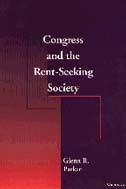 Congress and the Rent-Seeking Society
Glenn R. Parker
University of Michigan Press, 1996
Skillfully blending historical data with microeconomic theory, Glenn Parker argues that the incentives for congressional service have declined over the years, and that with that decline has come a change in the kind of person who seeks to enter Congress. The decline in the attractiveness of Congress is a consequence of congressional careerists and of the growth in the rent-seeking society, a term which describes the efforts of special interests to obtain preferential treatment by using the machinery of government--legislation and regulations.
Parker provides a fresh and controversial perspective to the debate surrounding the relative merits of career or amateur politicians. He argues that driving career politicians from office can have pernicious effects on the political system: it places the running of Congress in the hands of amateur politicians, who stand to lose little if they are found engaging in illegal or quasi-legal practices. On the other hand, career legislators risk all they have invested in their long careers in public service if they engage in unsavory practices. As Parker develops this controversial argument, he provides a fresh perspective on the debate surrounding the value of career versus amateur politicians.
Little attention has been given to the long-term impact of a rent-seeking society on the evolution of political institutions. Parker examines empirically and finds support for hypotheses that reflect potential symptoms of adverse selection in the composition of Congress: (1) rent-seeking politicians are more inclined than others to manipulate institutional arrangements for financial gain; (2) the rent-seeking milieu of legislators are more likely to engage in rent-seeking activity than earlier generations; (3) and the growth of rent-seeking activity has hastened the departure of career legislators.
Glenn R. Parker is Distinguished Research Professor, Florida State University.
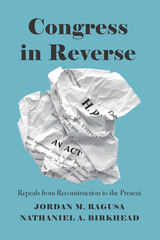 Congress in Reverse: Repeals from Reconstruction to the Present
Jordan M. Ragusa and Nathaniel A. Birkhead
University of Chicago Press, 2020 After years of divided government, countless Republicans campaigned on a promise to repeal the Affordable Care Act, better known as Obamacare. Yet when they took control of both chambers of Congress and the White House in 2017—after six years that included more than fifty symbolic votes and innumerable pledges—they failed to repeal the bulk of the law. Pundits were shocked, and observers and political scientists alike were stuck looking for an explanation. What made Obamacare so hard to repeal? And in a larger sense: What explains why some laws are repealed, and yet others endure in spite of considerable efforts? Are repeals different from law-making or do they mirror one another? Why are repeals more likely at some times than others? What theories of legislative behavior and policymaking explain when repeals happen?
Congress in Reverse is the first book to attempt to answer these questions. Jordan M. Ragusa and Nathaniel A. Birkhead examine when and why existing statutes are successfully “undone,” arguing that repeals are most common when the parties are united on the issue—which was not the case when it came to Obamacare for the Republican Party—and the majority party wins control of Congress after a long stint in the minority. By shifting focus from the making of laws to their un-making, Congress in Reverse opens up a new arena for studying legislative activity in Congress.
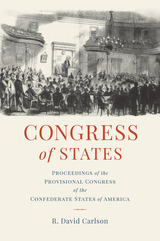 Congress of States: Proceedings of the Provisional Congress of the Confederate States of America
R. David Carlson
University of Alabama Press, 2023 A landmark publication of public reports that reveal the founding of the Confederate government
Past publications of the proceedings of the Confederate Congress have focused on the public sessions of the Regular Confederate States Congress that met in Richmond, Virginia from February 1862 to March 1865. Omitted were the formative early sessions of the Montgomery, Alabama and Richmond, Virginia Provisional Congresses of 1861 and 1862. In Congress of States, David Carlson reveals these critical early meetings.
To illuminate this pivot point in American and Southern history, Carlson has drawn on detailed and often verbatim minutes reported in Richmond, Montgomery, Charleston, New Orleans, Savannah, and Augusta newspapers, assembling here a unique set of transcriptions that reveal the birth of the Confederate government.
Congress of States provides an introduction to the Provisional Confederate Congress and the purpose of this work relative to the Southern Historical Society’s landmark 1923 publication “Proceedings of the Confederate Congress,” which detailed the 1962–1865 Regular Confederate Congress. He also includes a chronology outlining the major events of the secession crisis, annotated minutes for the Provisional Confederate Congress’s five sessions, appendices featuring the leadership and committees of the Provisional Congress, and fascinating examples of the proposed Confederate emblem and flags debated by the delegates.
A key set of primary sources that scholars, historians, librarians, and political scientists will value for years to come, Congress of States will also be essential reading for the general reader interested in American and Southern history, the Antebellum South, and the Civil War.
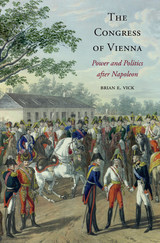 The Congress of Vienna: Power and Politics after Napoleon
Brian E. Vick
Harvard University Press, 2014 Convened following Napoleon’s defeat in 1814, the Congress of Vienna is remembered as much for the pageantry of the royals and elites who gathered there as for the landmark diplomatic agreements they brokered. Historians have nevertheless generally dismissed these spectacular festivities as window dressing when compared with the serious, behind-the-scenes maneuverings of sovereigns and statesmen. Brian Vick finds this conventional view shortsighted, seeing these instead as two interconnected dimensions of politics. Examining them together yields a more complete picture of how one of the most important diplomatic summits in history managed to redraw the map of Europe and the international system of the nineteenth and twentieth centuries.
The Congress of Vienna investigates the Vienna Congress within a broad framework of influence networks that included unofficial opinion-shapers of all kinds, both men and women: artists and composers, entrepreneurs and writers, hosts and attendees of fashionable salons. In addition to high-profile negotiation and diplomatic wrangling over the post-Napoleonic fates of Germany, Italy, and Poland, Vick brings into focus other understudied yet significant issues: the African slave trade, Jewish rights, and relations with Islamic powers such as the Ottoman Empire and Barbary Corsairs. Challenging the usual portrayal of a reactionary Congress obsessed with rolling back Napoleon’s liberal reforms, Vick demonstrates that the Congress’s promotion of limited constitutionalism, respect for religious and nationality rights, and humanitarian interventions was influenced as much by liberal currents as by conservative ones.
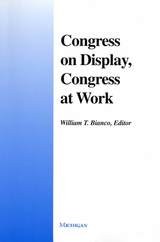 Congress on Display, Congress at Work
William T. Bianco, Editor
University of Michigan Press, 2000 This impressive collection of essays by many renowned scholars was compiled in honor of Richard F. Fenno's contribution to legislative studies. Utilizing various approaches to examine the impact of strategic behavior, rules, and institutions on legislative outcomes, this book produces significant new insights into legislative behavior. The themes that are constant in this volume and that reflect Richard F. Fenno's own treatment of the field are legislators as rational actors; the expectation that congressional rules, procedures, and institutions reflect the preferences and constraints faced by members of Congress; and viewing politics as politicians do.
The contributors are John Aldrich, Steve Balla, David Castle, Christine DeGregorio, Richard Delany, Diana Evans, Patrick Fett, Linda Fowler, Brian Frederking, Jeffrey Hill, Bryan Marshall, Brandon Prins, David Rohde, Wendy Schiller, Kenneth Shepsle, and John Wright.
William T. Bianco is Associate Professor of Political Science, Pennsylvania State University.
Congress Oversees the Bureaucracy
Morris S. Ogul
University of Pittsburgh Press, 1976
Congressional supervision of the way the executive implements legislative mandates-“oversight” of the bureaucracy-is one of the most complex and least understood functions of Congress. In this book, Morris Ogul clarifies the meaning of oversight and analyzes the elements that contribute to its success or neglect.
Ogul's work is based on case studies from nearly one hundred interviews with congressmen, committee staff members, lobbyists, and members of the executive branch., as well as an examination of relevant congressional documents.
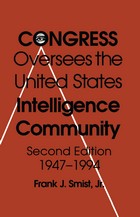 Congress Oversees the US Intelligence Community, 1947-1994: Community 1947-1993
Frank J., Jr. Smist
University of Tennessee Press, 1994 Foreseeing conflict between the legislative and executive branches over the proper functions of government, the Founders of the United States built into the U. S. Constitution the checks and balances that Edwin S. Corwin called “an invitation to struggle.” Smist argues that congressional intelligence-oversight committees—such as Senator Church’s 1975-76 committee—can, by taking up this struggle, not only handle sensitive information responsibly but help shape rational foreign policy. When Congress is shut out of the intelligence process–as in President Carter’s abortive Iran rescue mission and Reagan’s Iran-Contra affair–the results can be catastrophic.
Smist’s detailed analysis of congressional oversight of U.S. intelligence from Pearl Harbor through Iran-Contra is based largely on his interviews with participants, including senators, representatives, and executive-branch officials. The analysis is informed by Smist’s dialectical model of “institutional” (conservative, supportive) versus “investigative” (radical, questioning) oversight, which allows him to uncover the frequently obscured historical value of previous Senate and House investigative committees. For example, the Pike committee, 1975-76, even though its final report was suppressed by the House, was able to elicit then Secretary of State Kissinger’s admission of presidential control over covert actions, thus shattering the doctrine of “plausible deniability.”
Because these committees continue to wrestle with the principles underlying government, their unfolding drama is meaningful for the student of constitutional history. This book provides new conceptual tools for the study of intelligence oversight and gives the direct testimony of key participants, making it important not only as political science but as history.
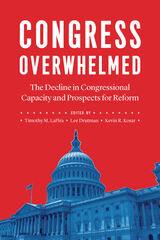 Congress Overwhelmed: The Decline in Congressional Capacity and Prospects for Reform
Edited by Timothy M. LaPira, Lee Drutman, and Kevin R. Kosar
University of Chicago Press, 2020 Congress today is falling short. Fewer bills, worse oversight, and more dysfunction. But why? In a new volume of essays, the contributors investigate an underappreciated reason Congress is struggling: it doesn’t have the internal capacity to do what our constitutional system requires of it. Leading scholars chronicle the institutional decline of Congress and the decades-long neglect of its own internal investments in the knowledge and expertise necessary to perform as a first-rate legislature. Today’s legislators and congressional committees have fewer—and less expert and experienced—staff than the executive branch or K Street. This leaves them at the mercy of lobbyists and the administrative bureaucracy.
The essays in Congress Overwhelmed assess Congress’s declining capacity and explore ways to upgrade it. Some provide broad historical scope. Others evaluate the current decay and investigate how Congress manages despite the obstacles. Collectively, they undertake the most comprehensive, sophisticated appraisal of congressional capacity to date, and they offer a new analytical frame for thinking about—and improving—our underperforming first branch of government.
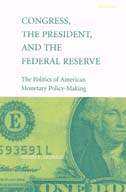 Congress, the President, and the Federal Reserve: The Politics of American Monetary Policy-Making
Irwin L. Morris
University of Michigan Press, 2002 Congress, the President, and the Federal Reserve is a study of the politics of monetary policy making at the Federal Reserve--widely considered the most important and most powerful federal bureaucracy. Ostensibly, the Federal Reserve is independent of the political branches of government; however, Congress, the President, and the Federal Reserve clearly demonstrates-- from both a theoretical and empirical standpoint--how the preferences of members of Congress and the President impact decisionmaking at the Fed.
Current formal theories of the general policy-making process are utilized to construct an explanatory framework that identifies the mechanisms through which congressional and executive influence is exercised. The theoretical framework presented in the text also helps to explain the political dynamics of several of the most significant policy decisions of the Federal Reserve during the last half-century. In addition, this book provides a unique perspective on the manner in which Fed policymakers attempt to shield themselves from unwelcome political influence.
While the main focus of Congress, the President, and the Federal Reserve is monetary policy-making, it also speaks to the political nature of policy-making in a more general sense and provides a guide for the future study of the political dynamics in a wide variety of substantive policy areas. Thus it will interest not only political scientists and economists interested in monetary policy-making specifically but also those interested in the nature of public policy-making more generally.
Irwin L. Morris is Assistant Professor of Political Science, University of Maryland.
 Congress Versus the Supreme Court, 1957-1960
C. Herman Pritchett
University of Minnesota Press, 1961 Congress Versus the Supreme Court, 1957–1960 was first published in 1961. Minnesota Archive Editions uses digital technology to make long-unavailable books once again accessible, and are published unaltered from the original University of Minnesota Press editions. This is an account of the effort made in the last two sessions of Congress to curb the Supreme Court because of certain liberal decisions of the Court, and an analysis of the reasons for the congressional failure. Many times in history Congress has objected to Court decisions and has tried to retaliate against the Court. The most recent period of difficulty traces back to the Court's school segregation decisions in 1954, but not until the Court took a liberal line in certain national security cases in 1956 and 1957 was an organized effort made in Congress to attack it. Professor Pritchett analyzes the specific decisions which aroused congressional concern and reviews the methods by which their reversal was sought. The failure of this effort to curb the Court is important to an understanding of the role of the Supreme Court in the American governmental system. This book is an expansion of the Guy Stanton Ford lectures given by Mr. Pritchett at the University of Minnesota.
The Congressional Black Caucus, Minority Voting Rights, and the U.S. Supreme Court
Christina R. Rivers
University of Michigan Press, 2014 Both the U.S. Supreme Court and the Congressional Black Caucus (CBC) claim to advocate minority political interests, yet they disagree over the intent and scope of the Voting Rights Act (VRA), as well as the interpretation of the equal protection clause of the 14th Amendment. Whereas the Court promotes color-blind policies, the CBC advocates race-based remedies. Setting this debate in the context of the history of black political thought, Rivers examines a series of high-profile districting cases, from Rodgers v. Lodge (1982) through NAMUDNO v. Holder (2009). She evaluates the competing approaches to racial equality and concludes, surprisingly, that an originalist, race-conscious interpretation of the 14th Amendment, along with a revised states' rights position regarding electoral districting, may better serve minority political interests.
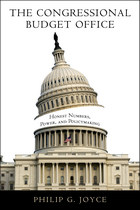 The Congressional Budget Office: Honest Numbers, Power, and Policymaking
Philip G. Joyce
Georgetown University Press, 2011 Created in 1974, the U.S. Congressional Budget Office (CBO) has become one of the most influential forces in national policymaking. A critical component of our system of checks and balances, the CBO has given Congress the analytical capacity to challenge the president on budget issues while it protects the public interest, providing honest numbers about Congress's own budget proposals. The book discusses the CBO’s role in larger budget policy and the more narrow "scoring" of individual legislation, such as its role in the 2009–2010 Obama health care reform. It also describes how the first director, Alice Rivlin, and seven successors managed to create and sustain a nonpartisan, highly credible agency in the middle of one of the most partisan institutions imaginable. The Congressional Budget Office: Honest Numbers, Power, and Policy draws on interviews with high-level participants in the budget debates of the last 35 years to tell the story of the CBO. A combination of political history, economic history, and organizational development, The Congressional Budget Office offers an important, first book-length history of this influential agency.
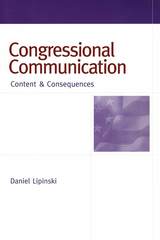 Congressional Communication: Content and Consequences
Daniel Lipinski
University of Michigan Press, 2004 "Lipinski's impressive analysis of members' communications with constituents yields major insights about partisanship, effects on reelection prospects, and constituent evaluations."
--Bruce Oppenheimer, Vanderbilt University
"The communication between representatives and their constituents is where election strategy and policy explanations are merged and, until now, we have had only anecdotal evidence. Lipinski's book sheds light on this important part of American political life."
--David Brady, Stanford University
Congressional Communication challenges the notion that legislators "run against Congress" by routinely denigrating the institution. Using a unique, systematic analysis of the communication from members of Congress to their constituents over a five-year period, Daniel Lipinski challenges this notion, demonstrating key partisan differences in representatives' portrayals of congressional activities. While members of the majority party tend to report that the institution-and, hence, their party-is performing well, members of the minority party are more likely to accuse Congress of doing a poor job.
The findings in Congressional Communication offer the first strong empirical evidence from the electoral arena in support of controversial party government theories. Moving beyond previous studies that look only at legislators' messages, Lipinski's research also reveals the effects of these politically strategic claims on voters, whose interpretations don't necessarily bear out the legislators' intended effects.
Daniel Lipinski is Assistant Professor of Political Science at the University of Tennessee.
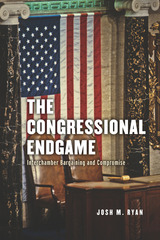 The Congressional Endgame: Interchamber Bargaining and Compromise
Josh M. Ryan
University of Chicago Press, 2018 Congress is a bicameral legislature in which both the House and Senate must pass a bill before it can be enacted into law. The US bicameral system also differs from most democracies in that the two chambers have relatively equal power to legislate and must find ways to resolve their disputes. In the current landscape of party polarization, this contentious process has become far more chaotic, leading to the public perception that the House and Senate are unwilling or unable to compromise and calling into question the effectiveness of the bicameral system itself.
With The Congressional Endgame, Josh M. Ryan offers a coherent explanation of how the bicameral legislative process works in Congress and shows that the types of policy outcomes it produces are in line with those intended by the framers of the Constitution. Although each bargaining outcome may seem idiosyncratic, the product of strong leadership and personality politics, interchamber bargaining outcomes in Congress are actually structured by observable institutional factors. Ryan finds that the characteristics of the winning coalition are critically important to which chamber “wins” after bargaining, with both conference committees and an alternative resolution venue, amendment trading, creating policy that approximates the preferences of the more moderate chamber. Although slow and incremental, interchamber negotiations serve their intended purpose well, The Congressional Endgame shows; they increase the odds of compromise while at the same time offering a powerful constraint on dramatic policy changes.
Congressional Insurgents and the Party System, 1909–1916
James Holt
Harvard University Press James Holt offers a new answer to the question "What happened to progressivism in the Republican party?" The battles over the Payne-Aldrich tariff, the powers of Speaker Cannon, military preparedness, the elections of 1912 and 1916, and Wilson's New Freedom are used to exemplify the attempts of insurgent Republican Senators to reconcile progressive ideals with party commitment. But these men, Robert La Follette, Albert Cummins, George Norris, and William Borah among them, found that on the national level their efforts aided only the Democrats and that a third party was precluded by their own partisanship and their dependence on Republican constituencies.
Congressional Parties, Institutional Ambition, and the Financing of Majority Control
Eric S. Heberlig and Bruce A. Larson
University of Michigan Press, 2013 With the need for ever increasing sums of money to fuel the ongoing campaign for majority control, both Republicans and Democrats have made large donations to the party and its candidates mandatory for members seeking advancement within party and congressional committee hierarchies. Eric S. Heberlig and Bruce A. Larson analyze this development and discuss its implications for American government and democracy. They address the consequences of selecting congressional leaders on the basis of their fundraising skills rather than their legislative capacity and the extent to which the battle for majority control leads Congress to prioritize short-term electoral gains over long-term governing and problem-solving.
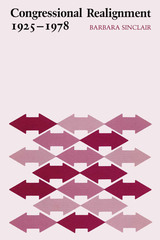 Congressional Realignment, 1925-1978
By Barbara Sinclair
University of Texas Press, 1982 Ronald Reagan's election in 1980 brought with it a major shift in the composition of the U.S. Congress for the first time in several decades. The subsequent introduction of an enormous amount of new legislation sparked debate among many political observers that a new coalition was being built in American politics and that a significant change in the issues on the agenda before Congress heralded a Republican realignment. Barbara Sinclair's study is a major contribution to our understanding of realignment politics in the House of Representatives. It also provides important insight into the changes in American political life in the late twentieth century. Congressional Realignment poses three basic, related questions: What are the sources of agenda change? What determines congressional voting alignments and alignment change? Under what conditions are the barriers to major policy change overcome? Sinclair's answers are impressive both in their scholarship and in the depth and intelligence of her insights.
Congressmen's Voting Decisions
John W. Kingdon
University of Michigan Press, 1989 This classic study of voting decisions in the U.S. House of Representatives, based on extensive interviewing and observation, combines theory and substance, generalization and detailed description. With a new introduction, this influential and innovative book remains the best statement of the ways in which legislators reach decisions. The work contributes in critical ways to scholars' and students' understanding of such larger features of legislative process as representation of constituencies, the place of specialization in the making of public policy, the extent and types of legislative rationality, the importance of principles in decisions, and the place of legislatures in larger political systems.
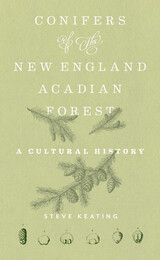 Conifers of the New England–Acadian Forest: A Cultural History
Steve Keating
University of Massachusetts Press, 2024 Why did white pine help spark the American Revolution? How did balsam aid the development of germ theory? What does hemlock have to do with making leather? In Conifers of the New England–Acadian Forest, microbiologist Steve Keating explores how conifers influenced the course of human history, writing in a style that is both scientific and accessible.
Keating’s study focuses on one of the most forested and wild ecoregions in North America, which extends into New York, New England, and Canada and includes Acadia National Park. Here, spruces, firs, and cedars of the northern boreal forest mix with hemlocks and pines of more temperate climates. This combination helps create the appearance, aroma, and ecology of the region, and the trees’ unique botanical traits have been ingeniously utilized by numerous peoples including the Iroquois, French explorers, beer brewers, and shipbuilders. Keating concludes with identification guides for the conifers and where they can be found in Acadia National Park.
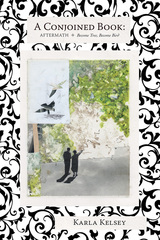 A Conjoined Book: Aftermath and Become Tree, Become Bird
Karla Kelsey
Omnidawn, 2014 Karla Kelsey’s A Conjoined Book hinges together two texts—Aftermath and Become Tree, Become Bird—to create a meditation on the nature of aboutness. Aftermath unfolds after an unnamed ecological/emotional fracture, creating a landscape of rift where the “I” imagines herself as “she,” and perceptions weave into memory and fiction. Become Tree, Become Bird grafts the Brothers Grimm’s The Juniper Tree to the body of Aftermath, reworking what has splintered into a variation of fairy tale. Throughout A Conjoined Book, Kelsey’s condensed imagery, shifting viewpoints, and interwoven formal structures set lyric and narrative a-shimmer. Blending experiment and tradition, this book will appeal to a wide audience interested in seeing how fairy tale, philosophy, ecology, narratology, history. As Julie Carr writes: “horror, elegy, mystery, fairy tale, lyric, treatise, fragment meet one another with all their intensities of emotion and intellect.”
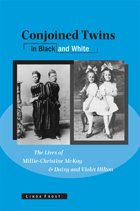 Conjoined Twins in Black and White: The Lives of Millie-Christine McKoy and Daisy and Violet Hilton
Edited by Linda Frost
University of Wisconsin Press, 2009 Conjoined twins have long been a subject of fantasy, fascination, and freak shows. In this first collection of its kind, Millie-Christine McKoy, African American twins born in 1851, and Daisy and Violet Hilton, English twins born in 1908, speak for themselves through memoirs that help us understand what it is like to live physically joined to someone else.
Conjoined Twins in Black and White provides contemporary readers with the twins’ autobiographies, the first two “show histories” to be republished since their original appearance, a previously unpublished novella, and a nineteenth-century medical examination, each of which attempts to define these women and reveal the issues of race, gender, and the body prompted by the twins themselves. The McKoys, born slaves, were kidnapped and taken to Britain, where they worked as entertainers until they were reunited with their mother in an emotional chance encounter. The Hiltons, cast away by their horrified mother at birth, worked the carnival circuit as vaudeville performers until the WWII economy forced them to the burlesque stage. The hardships, along with the triumphs, experienced by these very different sister sets lend insight into our fascination with conjoined twins.
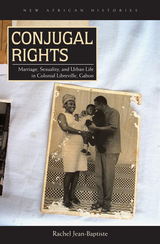 Conjugal Rights: Marriage, Sexuality, and Urban Life in Colonial Libreville, Gabon
Rachel Jean-Baptiste
Ohio University Press, 2014 Conjugal Rights is a history of the role of marriage and other arrangements between men and women in Libreville, Gabon, during the French colonial era, from the mid–nineteenth century through 1960. Conventional historiography has depicted women as few in number and of limited influence in African colonial towns, but this book demonstrates that a sexual economy of emotional, social, legal, and physical relationships between men and women indelibly shaped urban life. Bridewealth became a motor of African economic activity, as men and women promised, earned, borrowed, transferred, and absconded with money to facilitate interpersonal relationships. Colonial rule increased the fluidity of customary marriage law, as chiefs and colonial civil servants presided over multiple courts, and city residents strategically chose the legal arena in which to arbitrate a conjugal-sexual conflict. Sexual and domestic relationships with European men allowed some African women to achieve a greater degree of economic and social mobility. An eventual decline of marriage rates resulted in new sexual mores, as women and men sought to rebalance the roles of pleasure, respectability, and legality in having sex outside of kin-sanctioned marriage. Rachel Jean-Baptiste expands the discourse on sexuality in Africa and challenges conventional understandings of urban history beyond the study of the built environment. Marriage and sexual relations determined how people defined themselves as urbanites and shaped the shifting physical landscape of Libreville. Conjugal Rights takes a fresh look at questions of the historical construction of race and ethnicity. Despite the efforts of the French colonial government and society to enforce boundaries between black and white, interracial sexual and domestic relationships persisted. Black and métisse women gained economic and social capital from these relationships, allowing some measure of freedom in the colonial capital city.
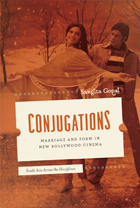 Conjugations: Marriage and Form in New Bollywood Cinema
Sangita Gopal
University of Chicago Press, 2011 Bollywood movies have been long known for their colorful song-and-dance numbers and knack for combining drama, comedy, action-adventure, and music. But when India entered the global marketplace in the early 1990s, its film industry transformed radically. Production and distribution of films became regulated, advertising and marketing created a largely middle-class audience, and films began to fit into genres like science fiction and horror. In this bold study of what she names New Bollywood, Sangita Gopal contends that the key to understanding these changes is to analyze films’ evolving treatment of romantic relationships. Gopalargues that the form of the conjugal duo in movies reflects other social forces in India’s new consumerist and global society. She takes a daring look at recent Hindi films and movie trends—the decline of song-and-dance sequences, the upgraded status of the horror genre, and the rise of the multiplex and multi-plot—to demonstrate how these relationships exemplify different formulas of contemporary living. A provocative account of how cultural artifacts can embody globalization’s effects on intimate life, Conjugations will shake up the study of Hindi film.
The Conjure Woman
Charles W. Chesnutt
University of Michigan Press, 1969 First published in 1899, these folk tales within a tale provide commentary on the social attitudes of the period
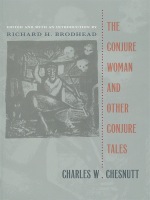 The Conjure Woman and Other Conjure Tales
Charles W. Chesnutt
Duke University Press, 1993 The stories in The Conjure Woman were Charles W. Chesnutt's first great literary success, and since their initial publication in 1899 they have come to be seen as some of the most remarkable works of African American literature from the Emancipation through the Harlem Renaissance. Lesser known, though, is that the The Conjure Woman, as first published by Houghton Mifflin, was not wholly Chesnutt's creation but a work shaped and selected by his editors. This edition reassembles for the first time all of Chesnutt's work in the conjure tale genre, the entire imaginative feat of which the published Conjure Woman forms a part. It allows the reader to see how the original volume was created, how an African American author negotiated with the tastes of the dominant literary culture of the late nineteenth century, and how that culture both promoted and delimited his work.
In the tradition of Uncle Remus, the conjure tale listens in on a poor black southerner, speaking strong dialect, as he recounts a local incident to a transplanted northerner for the northerner's enlightenment and edification. But in Chesnutt's hands the tradition is transformed. No longer a reactionary flight of nostalgia for the antebellum South, the stories in this book celebrate and at the same time question the folk culture they so pungently portray, and ultimately convey the pleasures and anxieties of a world in transition. Written in the late nineteenth century, a time of enormous growth and change for a country only recently reunited in peace, these stories act as the uneasy meeting ground for the culture of northern capitalism, professionalism, and Christianity and the underdeveloped southern economy, a kind of colonial Third World whose power is manifest in life charms, magic spells, and ha'nts, all embodied by the ruling figure of the conjure woman.
Humorous, heart-breaking, lyrical, and wise, these stories make clear why the fiction of Charles W. Chesnutt has continued to captivate audiences for a century.
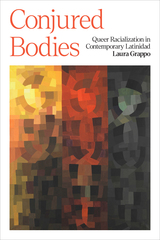 Conjured Bodies: Queer Racialization in Contemporary Latinidad
Laura Grappo
University of Texas Press, 2022 2022 Honorable Mention, John Leo & Dana Heller Award for Best Single Work, Anthology, Multi-Authored, or Edited Book in LGBTQ Studies, Popular Culture Association (PCA)
2023 Honorable Mention, Outstanding Book, Latinx Studies Section of Latin American Studies Association (LASA)
2024 Honorable Mention — Best LGBTQ+ Themed Book, Empowering Latino Futures’ International Latino Book Awards
This study argues that powerful authorities and institutions exploit the ambiguity of Latinidad in ways that obscure inequalities in the United States. Is Latinidad a racial or an ethnic designation? Both? Neither? The increasing recognition of diversity within Latinx communities and the well-known story of shifting census designations have cast doubt on the idea that Latinidad is a race, akin to white or Black. And the mainstream media constantly cover the “browning” of the United States, as though the racial character of Latinidad were self-evident. Many scholars have argued that the uncertainty surrounding Latinidad is emancipatory: by queering race—by upsetting assumptions about categories of human difference—Latinidad destabilizes the architecture of oppression. But Laura Grappo is less sanguine. She draws on case studies including the San Antonio Four (Latinas who were wrongfully accused of child sex abuse); the football star Aaron Hernandez’s incarceration and suicide; Lorena Bobbitt, the headline-grabbing Ecuadorian domestic-abuse survivor; and controversies over the racial identities of public Latinx figures to show how media institutions and state authorities deploy the ambiguities of Latinidad in ways that mystify the sources of Latinx political and economic disadvantage. With Latinidad always in a state of flux, it is all too easy for the powerful to conjure whatever phantoms serve their interests.
The Conjurer and Other Azorean Tales
Darrell Kastin
Tagus Press, 2012 Winner of the Best USA Book Awards, Fiction: Multicultural category (2014)
Born from the fertile volcanic soil and the sea and mists surrounding the Azorean islands, the characters who inhabit these stories blend realism with magic. Like the nine Muses, each island has its own special attributes. Whether searching for love, power, or meaning, these characters are subject to the whims of Fate and Fortune. Here the commonplace present confronts forces both natural and supernatural. In the Azorean microcosm, they come to represent a far larger sphere, embodying the foibles and idiosyncrasies of humanity the world over.
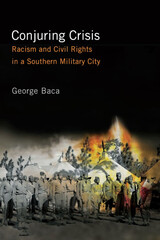 Conjuring Crisis: Racism and Civil Rights in a Southern Military City
Baca, George
Rutgers University Press, 2010 How have civil rights transformed racial politics in America? Connecting economic and social reforms to racial and class inequality, Conjuring Crisis counters the myth of steady race progress by analyzing how the federal government and local politicians have sometimes "reformed" politics in ways that have amplified racism in the post civil-rights era.
In the 1990s at Fort Bragg and Fayetteville, North Carolina, the city's dominant political coalition of white civic and business leaders had lost control of the city council. Amid accusations of racism in the police department, two white council members joined black colleagues in support of the NAACP's demand for an investigation. George Baca's ethnographic research reveals how residents and politicians transformed an ordinary conflict into a "crisis" that raised the specter of chaos and disaster. He explores new territory by focusing on the broader intersection of militarization, urban politics, and civil rights.
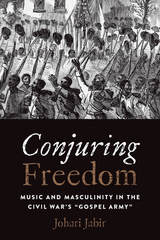 Conjuring Freedom: Music and Masculinity in the Civil War's “Gospel Army”
Johari Jabir
Ohio State University Press, 2017 Conjuring Freedom: Music and Masculinity in the Civil War’s “Gospel Army” analyzes the songs of the 1st South Carolina Volunteers, a regiment of Black soldiers who met nightly in the performance of the ring shout. In this study, acknowledging the importance of conjure as a religious, political, and epistemological practice, Johari Jabir demonstrates how the musical performance allowed troop members to embody new identities in relation to national citizenship, militarism, and masculinity in more inclusive ways. Jabir also establishes how these musical practices of the regiment persisted long after the Civil War in Black culture, resisting, for instance, the paternalism and co-optive state antiracism of the film Glory, and the assumption that Blacks need to be deracinated to be full citizens.
Reflecting the structure of the ring shout—the counterclockwise song, dance, drum, and story in African American history and culture—Conjuring Freedom offers three new concepts to cultural studies in order to describe the practices, techniques, and implications of the troop’s performance: (1) Black Communal Conservatories, borrowing from Robert Farris Thompson’s “invisible academies” to describe the structural but spontaneous quality of black music-making, (2) Listening Hermeneutics, which accounts for the generative and material affects of sound on meaning-making, and (3) Sonic Politics, which points to the political implications of music’s use in contemporary representations of race and history.
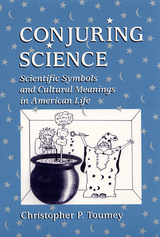 Conjuring Science: Scientific Symbols and Cultural Meanings in American Life
Toumey, Christopher P.
Rutgers University Press, 1996 What are the implications for Americans when actors who play doctors on television endorse medical products, or when an entire town in the Midwest prepares for an earthquake based on the specious advice of a zoologist? These are just two of the many questions Christopher Toumey asks in his investigation of the role of science in American culture. Toumey focuses on the ways in which the symbols of science are employed to signify scientific authority in a variety of cases, from the selling of medical products to the making of public policy about AIDS/HIV––a practice he calls "conjuring" science. It is this "conjuring" of the images and symbols of scientific authority that troubles Toumey and leads him to reflect on the history of public understanding and perceptions of science in the United States. He argues that while most Americans invest a great deal of authority in science, there is a vacuum of understanding about scientific knowledge. This gap between belief and understanding greatly influences public policy decisions and democratic processes. Toumey argues that instead of comprehending scientific knowledge, methods, or standards, most Americans know science only in terms of symbols that stand for science and that stand between people and scientific understanding. He breaks this paradox down into three questions. First, what are the historical conditions that have caused the culture of science to be so estranged from other parts of American culture? Second, how does science fit into American democratic culture today? And third, if the symbols of science are being used to endorse or legitimize certain values and meanings, but not the values and meanings of science, then to what do they refer? In witty, readable prose, Toumey investigates these questions by presenting five episodes of science in American life: the fluoridation controversies; the 1986 California referendum on AIDS/HIV policy; the cold fusion controversy; the anti-evolution of creationism; and the mad- scientist stories of fiction and film.
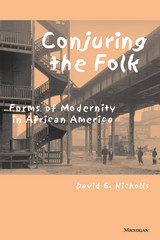 Conjuring the Folk: Forms of Modernity in African America
David G. Nicholls
University of Michigan Press, 2000 Conjuring the Folk addresses the dynamic relation between metropolitan artistic culture and its popular referents during the Harlem Renaissance period. From Jean Toomer's conclusion that "the Negro of the folk-song has all but passed away" to Zora Neale Hurston's discovery of "a rich field for folk-lore" in a Florida lumber camp, Harlem Renaissance writers made competing claims about the vitality of the African-American "folk." These competing claims, David Nicholls explains, form the basis of a discordant conversation on the question of modernity in African America.
In a series of revisionary readings, Nicholls studies how the "folk" is shaped by the ideology of form. He examines the presence of a spectral "folk" in Toomer's modernist pastiche, Cane. He explores how Hurston presents folklore as a contemporary language of resistance in her ethnography, Mules and Men. In Claude McKay's naturalistic romance, Banana Bottom, Nicholls discovers the figuration of an alternative modernity in the heroine's recovery of her lost "folk" identity. He unearths the individualist ethos of Booker T. Washington in two novels by George Wylie Henderson. And he reveals how Richard Wright's photo-documentary history, 12 Million BlackVoices, places the "folk" in a Marxian narrative of modernization toward class-consciousness.
A provocative rereading of the cultural politics of the Harlem Renaissance, Conjuring the Folk offers a new way of understanding literary responses to migration, modernization, and the concept of the "folk" itself.
David G. Nicholls is a post-doctoral fellow in the Center for the Study of Race, Politics, and Culture, University of Chicago.
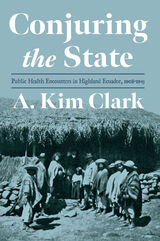 Conjuring the State: Public Health Encounters in Highland Ecuador, 1908-1945
A. Kim Clark
University of Pittsburgh Press, 2023 Winner, Best Book Prize, LASA Ecuadorian Studies Section
The First English-Language Book on the History of Public Health in Ecuador during the Early and Mid-Twentieth Century
The Ecuadorian Public Health Service was founded in 1908 in response to the arrival of bubonic plague to the country. A. Kim Clark uses this as a point of departure to explore questions of social history and public health by tracing how the service extended the reach of its broader programs across the national landscape and into domestic spaces. Delving into health conditions in the country—especially in the highlands—and efforts to combat disease, she shows how citizens’ encounters with public health officials helped make abstract ideas of state government tangible. By using public health as a window to understand social relations in a country deeply divided by region, class, and ethnicity, Conjuring the State examines the cultural, social, and political effects of the everyday practices of public health officials.
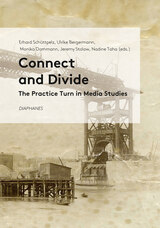 Connect and Divide: The Practice Turn in Media Studies
Edited by Erhard Schüttpelz, Ulrike Bergermann, Monika Dommann, Jeremy Stolow, and Nadine Taha
Diaphanes, 2018 Media is a kind of gatekeeper, connecting disparate entities and shielding them from one another at the same time. When we speak of media, we often refer to those entities themselves—to persons, organizations, artifacts, signals, and inscriptions—referencing directors, artists, newspapers, films, iPhones, paper, ink, notes, beats, color, and soundwaves. But as the middle or between, the essence of media itself seems to be distributed across the mix of entities involved, and its location and agency are hard to pin down.
This new anthology takes stock of our empirical and historical understanding of the two-sided nature of media and tracks the recent turn in media studies to examining practice itself. A unique discussion of the intersection of media theory and practice theory, Connect and Divide explores how distributions of knowledge, labor, and power may be hidden in what remains untraceable about media, shedding vital light on the social implications of media theory today.
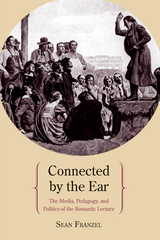 Connected by the Ear: The Media, Pedagogy, and Politics of the Romantic Lecture
Sean Franzel
Northwestern University Press, 2013 In this innovative new study, Sean Franzel charts the concurrent emergence of German Romantic pedagogy, the modern research university, and modern visions of the politically engaged scholar. At the heart of the pedagogy of Immanuel Kant, Johann Gottlieb Fichte, K. P. Moritz, A. W. Schlegel, Adam Müller, and others was the lecture, with its ability to attract listeners and to model an ideal discursive community, reflecting an era of revolution, reform, and literary, philosophical, and scientific innovation. Along with exploring the striking preoccupation of Romantic thinkers with the lecture and with its reverberations in print, Franzel argues that accounts of scholarly speech from this period have had a lasting impact on how the pedagogy, institutions, and medial manifestations of modern scholarship continue to be understood. "Sean Franzel’s archaeology illuminates both the bourgeois public sphere and discourse network 1800 by showing the romantic lecture to be the key cultural form in a pivotal moment of German intellectual history, a history long obsessed with the mediation of oral discourse and written text."—John Durham Peters, author of Speaking into the Air
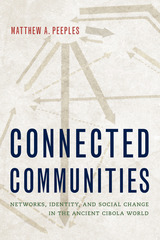 Connected Communities: Networks, Identity, and Social Change in the Ancient Cibola World
Matthew A. Peeples
University of Arizona Press, 2018 The Cibola region on the Arizona–New Mexico border has fascinated archaeologists for more than a century. The region’s core is recognized as the ancestral homeland of the contemporary Zuni people, and the area also spans boundaries between the Ancestral Puebloan and Mogollon culture areas. The complexity of cross-cutting regional and cultural designations makes this an ideal context within which to explore the relationship between identity and social change at broad regional scales.
In Connected Communities, Matthew A. Peeples examines a period of dramatic social and political transformation in the ancient Cibola region (ca. A.D. 1150–1325). He analyzes archaeological data generated during a century of research through the lens of new and original social theories and methods focused on exploring identity, social networks, and social transformation. In so doing, he demonstrates the value of comparative, synthetic analysis.
The book addresses some of the oldest enduring questions in archaeology: How do large-scale social identities form? How do they change? How can we study such processes using material remains? Peeples approaches these questions using a new set of methods and models from the broader comparative social sciences (relational sociology and social networks) to track the trajectories of social groups in terms of both networks of interactions (relations) and expressions of similarity or difference (categories). He argues that archaeological research has too often conflated these different kinds of social identity and that this has hindered efforts to understand the drivers of social change.
In his strikingly original approach, Peeples combines massive amounts of new data and comparative explorations of contemporary social movements to provide new insights into how social identities formed and changed during this key period.
A Connected Curriculum for Higher Education
Dilly Fung
University College London, 2017 Is it possible to bring university research and student education into more symbiotic relationships? Can we grow programs of study enabling faculty, students, and “real world” communities to connect in new ways? These are some of the central questions Dilly Fung gauges in this accessible new book. Fung also looks to philosophy to help engender spaces for critical dialogue about educational values within teaching departments, research groups, and larger educational communities. Ultimately, Fung argues, these connections are not only possible but also potentially transformational for efforts to contribute to the global common good.
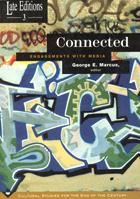 Connected: Engagements with Media
Edited by George E. Marcus
University of Chicago Press, 1996 From the frontiers of cyberspace to Tibetans in exile, from computer bulletin boards to faxes, film, and videotape, the ongoing and often startling evolution of media continues to generate fresh new avenues for cultural criticism, political activism, and self-reflection. How is contemporary life affected by this stunning proliferation of information technologies? How does the Internet influence, and perhaps alter, users' experience of community and their sense of self? In what way are giant media conglomerates implicated in these far-reaching developments?
Connected, the third volume in the groundbreaking and highly acclaimed Late Editions series, confronts these provocative questions through unique experiments with the interview format. It explores both the new pathways being forged through media and the predicaments of those struggling to find their way in the twilight of the twentieth century.
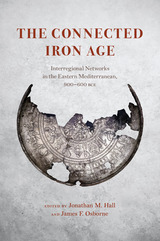 The Connected Iron Age: Interregional Networks in the Eastern Mediterranean, 900-600 BCE
Edited by Jonathan M. Hall and James F. Osborne
University of Chicago Press, 2022 An interdisciplinary consideration of how eastern Mediterranean cultures in the first millennium BCE were meaningfully connected.
The early first millennium BCE marks one of the most culturally diverse periods in the history of the eastern Mediterranean. Surveying the region from Greece to Iraq, one finds a host of cultures and political formations, all distinct, yet all visibly connected in meaningful ways. These include the early polities of Geometric period Greece, the Phrygian kingdom of central Anatolia, the Syro-Anatolian city-states, the seafaring Phoenicians and the biblical Israelites of the southern Levant, Egypt’s Twenty-first through Twenty-fifth Dynasties, the Urartian kingdom of the eastern Anatolian highlands, and the expansionary Neo-Assyrian Empire of northern Mesopotamia. This volume adopts an interdisciplinary approach to understanding the social and political significance of how interregional networks operated within and between Mediterranean cultures during that era.
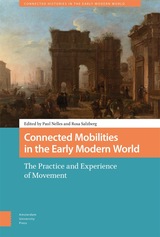 Connected Mobilities in the Early Modern World: The Practice and Experience of Movement
Paul Nelles
Amsterdam University Press, 2023 This book offers a panorama of movement, mobility, and exchange in the early modern world. While the pre-modern centuries have long been portrayed as static and self-contained, it is now acknowledged that Europe from the Middle Ages onwards saw increasing flows of people and goods. Movement also connected the continent more closely to other parts of the world. The present work challenges dominant notions of the ‘fixed,’ immobile nature of pre-modern cultures through study of the inter-connected material, social, and cultural dimensions of mobility. The case studies presented here chart the technologies and practices that both facilitated and impeded movement in diverse spheres of social activity such as communication, transport, politics, religion, medicine, and architecture. The chapters underscore the importance of the movement of people and objects through space and across distance to the dynamic economic, political, and cultural life of the early modern period.
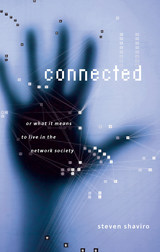 Connected: Or What It Means To Live In The Network Society
Steven Shaviro
University of Minnesota Press, 2003 In the twenty-first century, a network society is emerging. Fragmented, visually saturated, characterized by rapid technological change and constant social upheavals, it is dizzying, excessive, and sometimes surreal. In this breathtaking work, Steven Shaviro investigates popular culture, new technologies, political change, and community disruption and concludes that science fiction and social reality have become virtually indistinguishable. Connected is made up of a series of mini-essays-on cyberpunk, hip-hop, film noir, Web surfing, greed, electronic surveillance, pervasive multimedia, psychedelic drugs, artificial intelligence, evolutionary psychology, and the architecture of Frank Gehry, among other topics. Shaviro argues that our strange new world is increasingly being transformed in ways, and by devices, that seem to come out of the pages of science fiction, even while the world itself is becoming a futuristic landscape. The result is that science fiction provides the most useful social theory, the only form that manages to be as radical as reality itself. Connected looks at how our networked environment has manifested itself in the work of J. G. Ballard, William S. Burroughs, Philip K. Dick, William Gibson, K. W. Jeter, and others. Shaviro focuses on science fiction not only as a form of cultural commentary but also as a prescient forum in which to explore the forces that are morphing our world into a sort of virtual reality game. Original and compelling, Connected shows how the continual experimentation of science fiction, like science and technology themselves, conjures the invisible social and economic forces that surround us.
 Connecting Alaskans: Telecommunications in Alaska from Telegraph to Broadband
Heather E. Hudson
University of Alaska Press, 2015 “Alaska is now open to civilization.” With those six words in 1900, the northernmost territory finally had a connection with the rest of the country. The telegraph system put in place by the US Army Signal Corps heralded the start of Alaska’s communication network. Yet, as hopeful as that message was, Alaska faced decades of infrastructure challenges as remote locations, extreme weather, and massive distances all contributed to less-than-ideal conditions for establishing reliable telecommunications.
Connecting Alaskans tells the unique history of providing radio, television, phone, and Internet services to more than six hundred thousand square miles. It is a history of a place where military needs often trumped civilian ones, where ham radios offered better connections than telephone lines, and where television shows aired an entire day later than in the rest of the country.
Heather E. Hudson covers more than a century of successes while clearly explaining the connection problems still faced by remote communities today. Her comprehensive history is perfect for anyone interested in telecommunications technology and history, and she provides an important template for policy makers, rural communities, and developing countries struggling to develop their own twenty-first-century infrastructure.
Connecting Boys
American Library Association
American Library Association, 2003
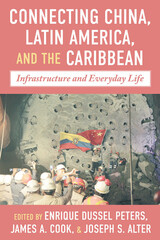 Connecting China, Latin America, and the Caribbean: Infrastructure and Everyday Life
Enrique Dussel Peters
University of Pittsburgh Press, 2023 An Interdisciplinary Approach to the Political, Economic, and Cultural Consequences of China’s Influence in Latin America and the Caribbean
A long history of migration, trade, and shared interests links China to Latin America and the Caribbean. Over the past twenty years, China has increased direct investment and restructured trade relations in the region. In addition, Chinese public sector enterprises, private companies, and various branches of the central government have planned, developed, and built a large number of infrastructure projects in Latin America and the Caribbean, such as dams, roads, railways, energy grids, security systems, telecommunication networks, hospitals, and schools. These projects have had a profound impact on local environments and economies and help shape the lived experiences of individuals. Each chapter in this volume examines how the impact of these infrastructure projects varies in different countries, focusing on how they produce new forms of global connectivity between various sectors of the economy and the resulting economic and cultural links that permeate everyday life
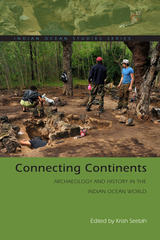 Connecting Continents: Archaeology and History in the Indian Ocean World
Krish Seetah
Ohio University Press, 2018 Winner, Society for American Archaeology Book Award In recent decades, the vast and culturally diverse Indian Ocean region has increasingly attracted the attention of anthropologists, historians, political scientists, sociologists, and other researchers. Largely missing from this growing body of scholarship, however, are significant contributions by archaeologists and consciously interdisciplinary approaches to studying the region’s past and present. Connecting Continents addresses two important issues: how best to promote collaborative research on the Indian Ocean world, and how to shape the research agenda for a region that has only recently begun to attract serious interest from historical archaeologists. The archaeologists, historians, and other scholars who have contributed to this volume tackle important topics such as the nature and dynamics of migration, colonization, and cultural syncretism that are central to understanding the human experience in the Indian Ocean basin. This groundbreaking work also deepens our understanding of topics of increasing scholarly and popular interest, such as the ways in which people construct and understand their heritage and can make use of exciting new technologies like DNA and environmental analysis. Because it adopts such an explicitly comparative approach to the Indian Ocean, Connecting Continents provides a compelling model for multidisciplinary approaches to studying other parts of the globe. Contributors: Richard B. Allen, Edward A. Alpers, Atholl Anderson, Nicole Boivin, Diego Calaon, Aaron Camens, Saša Čaval, Geoffrey Clark, Alison Crowther, Corinne Forest, Simon Haberle, Diana Heise, Mark Horton, Paul Lane, Martin Mhando, and Alistair Patterson.
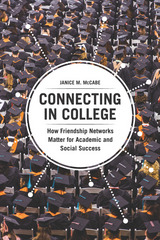 Connecting in College: How Friendship Networks Matter for Academic and Social Success
Janice M. McCabe
University of Chicago Press, 2016 We all know that good study habits, supportive parents, and engaged instructors are all keys to getting good grades in college. But as Janice M. McCabe shows in this illuminating study, there is one crucial factor determining a student’s academic success that most of us tend to overlook: who they hang out with. Surveying a range of different kinds of college friendships, Connecting in College details the fascinatingly complex ways students’ social and academic lives intertwine and how students attempt to balance the two in their pursuit of straight As, good times, or both.
As McCabe and the students she talks to show, the friendships we forge in college are deeply meaningful, more meaningful than we often give them credit for. They can also vary widely. Some students have only one tight-knit group, others move between several, and still others seem to meet someone new every day. Some students separate their social and academic lives, while others rely on friendships to help them do better in their coursework. McCabe explores how these dynamics lead to different outcomes and how they both influence and are influenced by larger factors such as social and racial inequality. She then looks toward the future and how college friendships affect early adulthood, ultimately drawing her findings into a set of concrete solutions to improve student experiences and better guarantee success in college and beyond.
Connecting Metal to Culture: Unity in Disparity
Edited by Mika Elovaara and Bryan Bardine
Intellect Books, 2017 Though it’s given little attention—and even less serious attention—by the mainstream press, metal music has for decades been a major creative and cultural force around the world. This book brings together a group of contributors from Europe, North America, and the Caribbean to make a case for metal’s place not merely on the periphery of our culture, but at its very heart. Contributors attend not merely to the music, but also to the accompanying culture, and they offer intriguing insights into the rise of metal in places where it’s traditionally been little known, like the Middle East and North Africa. The result is a global portrait of metal that asserts its importance and its ongoing contribution to culture.
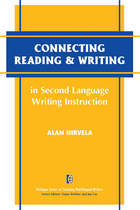 Connecting Reading & Writing in Second Language Writing Instruction
Alan Hirvela
University of Michigan Press, 2004 Academic writing often requires students to incorporate material from outside sources (like statistics, ideas, quotations, paraphrases) into their own written texts-a particular obstacle for students who lack strong reading skills. In Connecting Reading and Writing in SecondLanguage Instruction, Alan Hirvela contends that second language writing students should be considered as readers first and advocates the integration of reading and writing instruction with a survey of theory, research, and pedagogy in the subject area.
Although the integrated reading-writing model has gained popularity in recent years, many teachers have little more than an intuitive sense of the connections between these skills. As part of the popular Michigan Series on Teaching Multilingual Writers, Connecting Reading and Writing in Second Language Instruction will provide invaluable background knowledge on this issue to ESL teachers in training, as well as teachers who are already practicing.
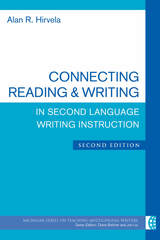 Connecting Reading & Writing in Second Language Writing Instruction, Second Edition
Alan R. Hirvela
University of Michigan Press, 2016 In this substantively revised new edition, Hirvela moves beyond the argument he made in the first edition of the value of connecting reading and writing. This new edition explains various dimensions of those connections and offers a fresh look at how to implement them in L2 writing instruction. It also provides both new and experienced teachers of writing with a solid grounding in the theoretical foundations and pedagogical possibilities associated with reading-writing connections.
The new edition features two new chapters. The first is a chapter on assessment because students are now being asked to connect reading and writing in the classroom and on formal assessments like the TOEFL®. The second new chapter is an argument for accounting for transfer elements in the teaching and researching of reading-writing connections.
The goals of this revised volume are to provide: resources for those wishing to pursue reading-writing connections, summaries of the beliefs underlying those connections, ideas for teaching the connections in the classroom, and information about the work others have done to develop this domain of L2 writing.
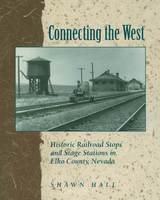 Connecting the West: Historic Railroad Stops and Stage Stations in Elko County, Nevada
Shawn Hall
University of Nevada Press, 2002 Shawn Hall's immensely popular guidebooks to Nevada ghost towns have become essential resources for backcountry explorers and scholars alike. Now Hall returns to Elko County to survey the county's railroad and stage stations, as well as other sites not included in his earlier survey of this colorful section of the state. As in his earlier volumes, Hall includes a history of each site he lists, along with period and contemporary photographs, directions for locating the sites, and an assessment of their present condition. His historical accounts, based on a wide range of primary and secondary sources, are both scholarly and engaging, rich in anecdotes and personalities, and in the fascinating minutia of history often ignored by more academic writers. Shawn Hall's dedication to documenting Nevada's thousands of historic sites has enriched our knowledge of the state's relatively brief but very eventful past. Connecting the West is a worthy addition to Hall's remarkable efforts to preserve the state's history.
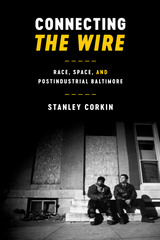 Connecting The Wire: Race, Space, and Postindustrial Baltimore
By Stanley Corkin
University of Texas Press, 2017 Critically acclaimed as one of the best television shows ever produced, the HBO series The Wire (2002–2008) is a landmark event in television history, offering a raw and dramatically compelling vision of the teeming drug trade and the vitality of life in the abandoned spaces of the postindustrial United States. With a sprawling narrative that dramatizes the intersections of race, urban history, and the neoliberal moment, The Wire offers an intricate critique of a society riven by racism and inequality. In Connecting The Wire, Stanley Corkin presents the first comprehensive, season-by-season analysis of the entire series. Focusing on the show’s depictions of the built environment of the city of Baltimore and the geographic dimensions of race and class, he analyzes how The Wire’s creator and showrunner, David Simon, uses the show to develop a social vision of its historical moment, as well as a device for critiquing many social “givens.” In The Wire’s gritty portrayals of drug dealers, cops, longshoremen, school officials and students, and members of the judicial system, Corkin maps a web of relationships and forces that define urban social life, and the lives of the urban underclass in particular, in the early twenty-first century. He makes a compelling case that, with its embedded history of race and race relations in the United States, The Wire is perhaps the most sustained and articulate exploration of urban life in contemporary popular culture.
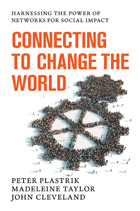 Connecting to Change the World: Harnessing the Power of Networks for Social Impact
Peter Plastrik, Madeleine Taylor, and John Cleveland
Island Press, 2014 Something new and important is afoot. Nonprofit and philanthropic organizations are under increasing pressure to do more and to do better to increase and improve productivity with fewer resources. Social entrepreneurs, community-minded leaders, nonprofit organizations, and philanthropists now recognize that to achieve greater impact they must adopt a network-centric approach to solving difficult problems. Building networks of like-minded organizations and people offers them a way to weave together and create strong alliances that get better leverage, performance, and results than any single organization is able to do.
While the advantages of such networks are clear, there are few resources that offer easily understandable, field-tested information on how to form and manage social-impact networks. Drawn from the authors’ deep experience with more than thirty successful network projects, Connecting to Change the World provides the frameworks, practical advice, case studies, and expert knowledge needed to build better performing networks. Readers will gain greater confidence and ability to anticipate challenges and opportunities.
Easily understandable and full of actionable advice, Connecting to Change the World is an informative guide to creating collaborative solutions to tackle the most difficult challenges society faces.
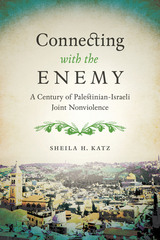 Connecting with the Enemy: A Century of Palestinian-Israeli Joint Nonviolence
By Sheila H. Katz
University of Texas Press, 2016 Thousands of ordinary people in Israel and Palestine have engaged in a dazzling array of daring and visionary joint nonviolent initiatives for more than a century. They have endured despite condemnation by their own societies, repetitive failures of diplomacy, harsh inequalities, and endemic cycles of violence. Connecting with the Enemy presents the first comprehensive history of unprecedented grassroots efforts to forge nonviolent alternatives to the lethal collision of the two national movements. Bringing to light the work of over five hundred groups, Sheila H. Katz describes how Arabs and Jews, children and elders, artists and activists, educators and students, garage mechanics and physicists, and lawyers and prisoners have spoken truth to power, protected the environment, demonstrated peacefully, mourned together, stood in resistance and solidarity, and advocated for justice and security. She also critiques and assesses the significance of their work and explores why these good-will efforts have not yet managed to end the conflict or occupation. This previously untold story of Palestinian-Israeli joint nonviolence will challenge the mainstream narratives of terror and despair, monsters and heroes, that help to perpetuate the conflict. It will also inspire and encourage anyone grappling with social change, peace and war, oppression and inequality, and grassroots activism anywhere in the world.
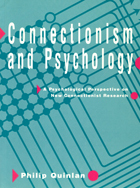 Connectionism and Psychology: A Psychological Perspective on New Connectionist Research
Philip T. Quinlan
University of Chicago Press, 1991 The rapid growth of neural network research has led to a major reappraisal of many fundamental assumptions in cognitive and perceptual psychology. This text—aimed at the advanced undergraduate and beginning postgraduate student—is an in-depth guide to those aspects of neural network research that are of direct relevance to human information processing.
Examples of new connectionist models of learning, vision, language and thought are described in detail. Both neurological and psychological considerations are used in assessing its theoretical contributions. The status of the basic predicates like exclusive-OR is examined, the limitations of perceptrons are explained and properties of multi-layer networks are described in terms of many examples of psychological processes. The history of neural networks is discussed from a psychological perspective which examines why certain issues have become important. The book ends with a general critique of the new connectionist approach.
It is clear that new connectionism work provides a distinctive framework for thinking about central questions in cognition and perception. This new textbook provides a clear and useful introduction to its theories and applications.
 Connections after Colonialism: Europe and Latin America in the 1820s
Edited by Mathew Brown and Gabriel Pacquette
University of Alabama Press, 2013 Contributing to the historiography of transnational and global transmission of ideas, Connections after Colonialism examines relations between Europe and Latin America during the tumultuous 1820s.
In the Atlantic World, the 1820s was a decade marked by the rupture of colonial relations, the independence of Latin America, and the ever-widening chasm between the Old World and the New. Connections after Colonialism, edited by Matthew Brown and Gabriel Paquette, builds upon recent advances in the history of colonialism and imperialism by studying former colonies and metropoles through the same analytical lens, as part of an attempt to understand the complex connections—political, economic, intellectual, and cultural—between Europe and Latin America that survived the demise of empire.
Historians are increasingly aware of the persistence of robust links between Europe and the new Latin American nations. This book focuses on connections both during the events culminating with independence and in subsequent years, a period strangely neglected in European and Latin American scholarship. Bringing together distinguished historians of both Europe and America, the volume reveals a new cast of characters and relationships including unrepentant American monarchists; compromise-seeking liberals in Lisbon and Madrid who envisioned transatlantic federations; British merchants in the River Plate who saw opportunity where others saw risk; public moralists whose audiences spanned from Paris to Santiago de Chile; and plantation owners in eastern Cuba who feared that slave rebellions elsewhere in the Caribbean would spread to their island.
Contributors
Matthew Brown / Will Fowler / Josep M. Fradera / Carrie Gibson / Brian Hamnett / Maurizio Isabella / Iona Macintyre / Scarlett O’Phelan Godoy / Gabriel Paquette / David Rock / Christopher Schmidt-Nowara / Jay Sexton / Reuben Zahler
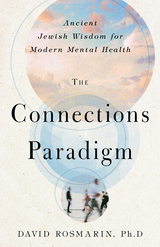 The Connections Paradigm: Ancient Jewish Wisdom for Modern Mental Health
David H. Rosmarin
Templeton Press, 2021 This book introduces an approach to mental health that dates back 3,000 years to an ancient body of Jewish spiritual wisdom. Known as the Connections Paradigm, the millennia-old method has been empirically shown to alleviate symptoms of stress, anxiety, and depression. After being passed down from generation to generation and tested in clinical settings with private clients, it is presented to a broad audience for the first time.
The idea behind the paradigm is that at any given moment, human beings are either “connected” or “disconnected” across three key relationships. To be “connected” means to be in a loving, harmonious, and fulfilling relationship; to be “disconnected” means, of course, the opposite. The three relationships are those between our souls and our bodies, ourselves and others, and ourselves and God.
These relationships are hierarchal; each depends on the one that precedes it. This means that we can only connect with God to the extent that we associate with others, and we cannot connect with others if we don’t connect with ourselves. The author, Dr. David H. Rosmarin, devotes a section to each relationship and describes techniques and practices to become a more connected individual. He also brings in compelling stories from his clinical practice to show the process in action.
Whether you’re a clinician working with clients, or a person seeking the healing balm of wisdom; whether you’re a member of the Jewish faith, or a person open to new spiritual perspectives, you will find this book sensible, practical, and timely because, for all of us, connection leads to mental health.
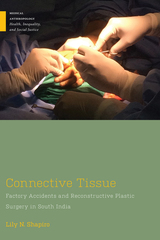 Connective Tissue: Factory Accidents and Reconstructive Plastic Surgery in South India
Lily N. Shapiro
Rutgers University Press, 2025 An ethnography of factory accidents and their attendant reconstructive plastic surgeries in Coimbatore, Tamil Nadu, Connective Tissue explores notions of risk, work and labor practices, and the way meaning is made from experiences of trauma, care, and recovery. The book charts a rough chronology of the accident—from the workspace that preceded it, the transformation of the workspace by the accident, through journeys to and treatment in the hospital, and then the various and complex ways in which the accident reverberates into the future during recovery.
Connective Tissue revisits scholarship on factory labor by analyzing the accident as constitutive of the experience of work itself, and it refines existing conversations about the body, trauma, and care by introducing an analysis informed by theories of labor and production. Author Lily N. Shapiro argues that care does not happen in spite of or on the margins of capitalism, but rather that capitalism happens in and through care and caring relations. These experiences are intersected by identities of caste, class, and gender, and entangled in state discourse about labor rights, welfare, and industrial law.
 The Connector: Living with Experimental Neuroprosthetics
Alexandra Middleton
Duke University Press, 2026 In The Connector, Alexandra Middleton examines how the frontiers of experimental medical science are always the everyday lived experiences for patients and their families and communities. Drawing on fieldwork and interviews conducted in Swedish labs and clinics that develop neuromusculoskeletal protheses, as well as in the homes of patients enrolled in clinical trials as they live with these new forms of prosthetics, Middleton shows how patients’ sensory experiences and domestic worlds become key spaces of scientific knowledge production that extend well beyond their visits to the lab. Through storytelling that centers the patients’ embodied knowledge and labor, along with the scientists who work closely with them, Middleton depicts how “connection” entails inhabiting the liminal space between ideation and materialization, a space punctuated not only by breakthroughs and breakdowns, but the slow work of the everyday. The Connector critically examines where biomedical innovation, scientific discovery, and the “cutting edge” come from in ways that foreground the importance of the domestic spaces in which experimental science take place.
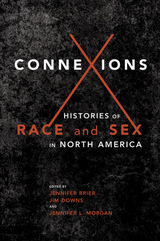 Connexions: Histories of Race and Sex in North America
Edited by Jennifer Brier, Jim Downs, and Jennifer L. Morgan
University of Illinois Press, 2016 Connexions investigates the ways in which race and sex intersect, overlap, and inform each other in United States history. An expert team of editors curates thought-provoking articles that explore how to view the American past through the lens of race and sexuality studies. Chapters range from the prerevolutionary era to today to grapple with an array of captivating issues: how descriptions of bodies shaped colonial Americans' understandings of race and sex; same-sex sexual desire and violence within slavery; whiteness in gay and lesbian history; college women's agitation against heterosexual norms in the 1940s and 1950s; the ways society used sexualized bodies to sculpt ideas of race and racial beauty; how Mexican silent film icon Ramon Navarro masked his homosexuality with his racial identity; and sexual representation in mid-twentieth-century black print pop culture. The result is both an enlightening foray into ignored areas and an elucidation of new perspectives that challenge us to reevaluate what we "know" of our own history. Contributors: Sharon Block, Susan K. Cahn, Stephanie M. H. Camp, J. B. Carter, Ernesto Chávez, Brian Connolly, Jim Downs, Marisa J. Fuentes, Leisa D. Meyer, Wanda S. Pillow, Marc Stein, and Deborah Gray White.
 The Conquered: Byzantium and America on the Cusp of Modernity
Eleni Kefala
Harvard University Press In the middle of the fifteenth century, ominous portents like columns of fire and dense fog were seen above the skies of Constantinople as the Byzantine capital fell under siege by the Ottomans. Allegedly, similar signs appeared a few decades later and seven thousand miles away, forecasting the fall of the Mexica capital of Tenochtitlan—Tlatelolco to the Spanish and their indigenous allies. After both cities had fallen, some Greeks and Mexica turned to poetry and song to express their anguish at the birth of what has come to be called the “modern” era.
This study probes issues of collective memory and cultural trauma in three sorrowful poems, the “Lament for Constantinople,” the “Huexotzinca Piece,” and the “Tlaxcala Piece.” Composed by anonymous authors soon after the conquest of the two cities, these texts describe the fall of an empire as a fissure in the social fabric and an open wound on the body politic. They are the workings of creators who draw on tradition and historical particulars to articulate, in a familiar language, the trauma of the conquered.
Conquered Conquerors: Love and War in the Song of Songs
Danilo Verde
SBL Press, 2020 The first comprehensive study of the Song of Songs' use of military metaphors
Although love transcends historical and cultural boundaries, its conceptualizations, linguistic expressions, and literary representations vary from culture to culture. In this study, Danilo Verde examines love through the military imagery found throughout the Song’s eight chapters. Verde approaches the military metaphors, similes, and scenes of the Song using cognitive metaphor theory to explore the overlooked representation of love as war. Additionally, this book investigates how the Song conceptualizes both the male and the female characters, showing that the concepts of masculinity and femininity are tightly interconnected in the poem. Conquered Conquerors provides fresh insights into the Song's figurative language and the conceptualization of gender in biblical literature.
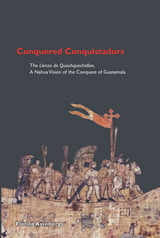 Conquered Conquistadors: The Lienzo de Quauhquechollan, A Nahua Vision of the Conquest of Guatemala
Florine Asselbergs
University Press of Colorado, 2004 In Conquered Conquistadors, Florine Asselbergs reveals that a large pictorial map, the Lienzo de Quauhquechollan, long thought to represent a series of battles in central Mexico, was actually painted in the 1530s by Quauhquecholteca warriors to document their invasion of Guatemala alongside the Spanish and to proclaim themselves as conquistadors. This painting is the oldest known map of Guatemala and a rare document of the experiences of indigenous conquistadors.
The people of the Nahua community of Quauhquechollan (present-day San Martín Huaquechula), in central Mexico, allied with Cortés during the Spanish-Aztec War and were assigned to the Spanish conquistador Jorge de Alvarado. De Alvarado and his allies, including the Quauhquecholteca and thousands of other indigenous warriors, set off for Guatemala in 1527 to start a campaign against the Maya. The few Quauhquecholteca who lived to tell the story recorded their travels and eventual victory on the huge cloth map, the Lienzo de Quauhquechollan.
Conquered Conquistadors, published in a European edition in 2004, overturned conventional views of the European conquest of indigenous cultures. American historians and anthropologists will relish this new edition and Asselbergs's astute analysis, which includes context, interpretation, and comparison with other pictographic accounts of the "Spanish" conquest. This heavily illustrated edition includes an insert reproduction of the Lienzo de Quauhquechollan.
|
|

